
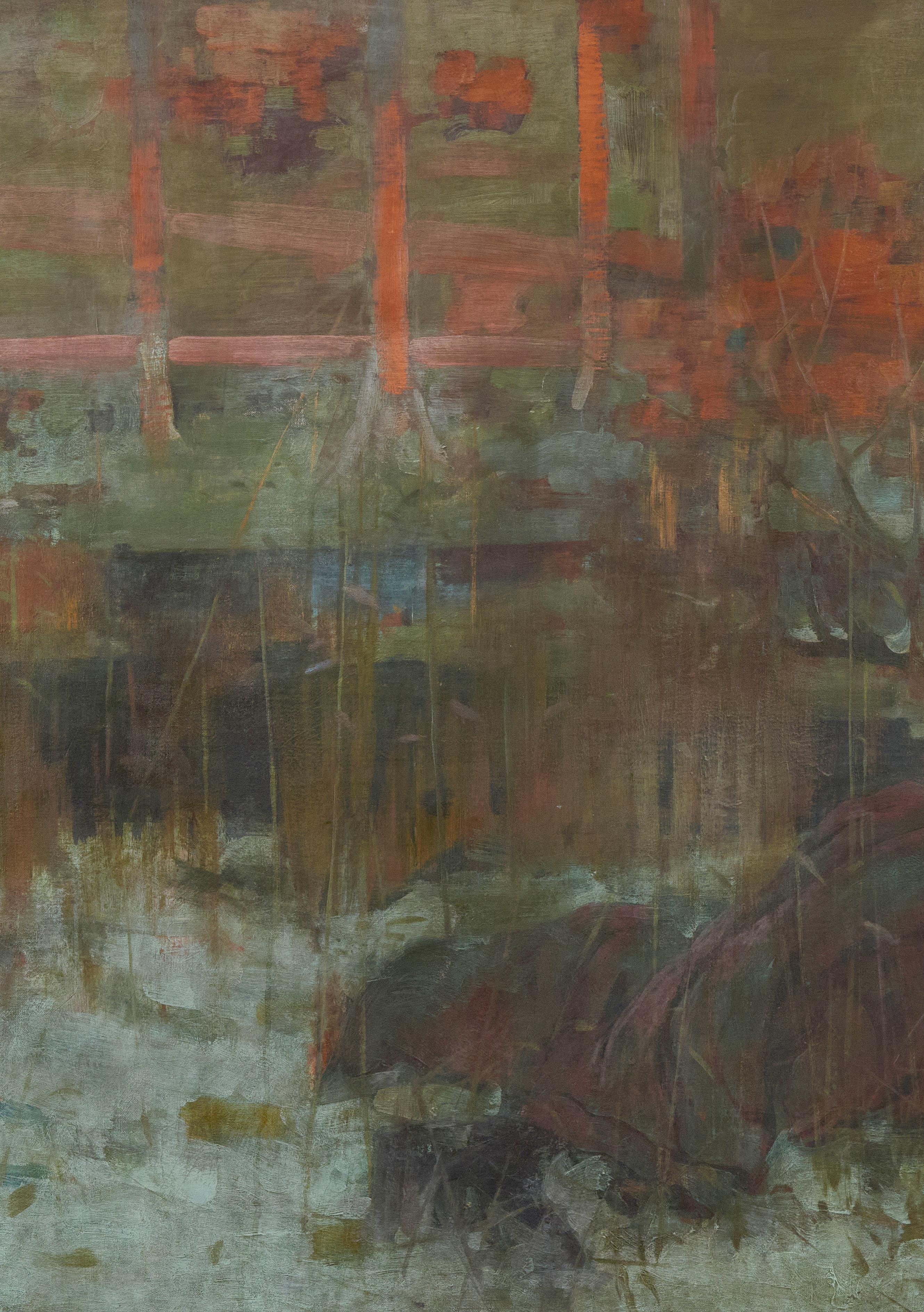

...The Encouragement Of Art Studies And The Promotion of a Taste for Art, by such means as Monthly Conversazioni, Lectures & Exhibitions of Works of Art.
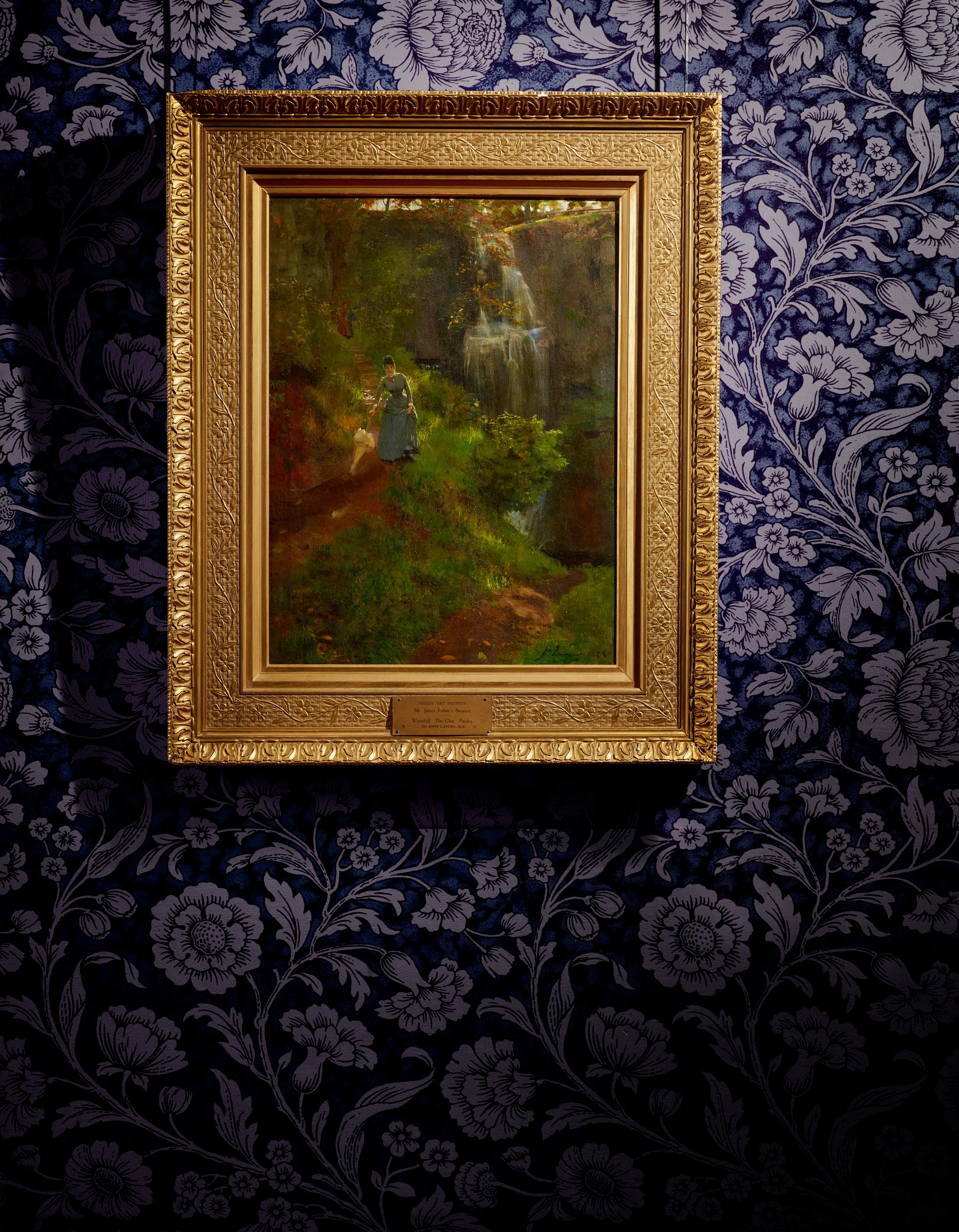
The founding Cons T i T u T ion of Paisley a r T i ns T i T u T e, 1876




...The Encouragement Of Art Studies And The Promotion of a Taste for Art, by such means as Monthly Conversazioni, Lectures & Exhibitions of Works of Art.

The founding Cons T i T u T ion of Paisley a r T i ns T i T u T e, 1876
THURSDAY 26 SEPTEMBER 2024 AT 6PM

Printed by Park Communications, a Carbon Neutral Company, on FSC® certified paper.
Park works to the EMAS standard and its Environmental Management System is certified to ISO 14001.
This publication has been manufactured using 100% offshore wind electricity sourced from UK wind.
100% of the inks used are vegetable oil based, 95% of press chemicals are recycled for further use and, on average 99% of any waste associated with this production will be recycled and the remaining 1% used to generate energy.
This document is printed on Magno Satin paper made of material from well-managed, FSC®-certified forests and other controlled sources.
Sale Number LT823
Front Cover Lot 63 [detail]
Inside Front Cover Lot 78 [detail]
Lyon & Turnbull 33 Broughton Place
EDINBURGH EH1 3RR
VIEWING
Sunday 22 September, 12-4pm
Monday 23 September, 10am-4.30pm
Tuesday 24 September, 10am-4.30pm
Wednesday 25 September, 10am-4.30pm Day of sale, 9am-12noon
CONTACT
EDINBURGH +44 (0) 131 557 8844
LONDON +44 (0) 207 930 9115
GLASGOW +44 (0) 141 333 1992
info@lyonandturnbull.com
The buyer shall pay the hammer price together with a premium, at the following rate, thereon:
26% up to £20,000
25% from £20,001 to £500,000 20% thereafter.
VAT will be charged on the premium at the rate imposed by law (see our Conditions of Sale at the back of this catalogue).
† VAT at the standard rate payable on the hammer price
‡ Reduced rate of 5% import VAT payable on the hammer price
Ω Standard rate of import VAT on the hammer price
Lots affixed with ‡ or Ω symbols may be subject to further regulations upon export /import, please see Conditions of Sale for Buyers Section D.2.
No VAT is payable on the hammer price or premium for books bought at auction.
§ indicates works which may be subject to the Droit de Suite or Artist’s Resale Right, a royalty payment for all qualifying works of art. Under legislation which came into effect on 1st January 2012, this applies to living artists and artists who have died in the last 70 years. This royalty will be charged to the buyer on the hammer price and in addition to the buyer’s premium. It will not apply to works where the Hammer Price is less than £1,000. The charge for works of art sold at and above £1,000 and below £50,000 is 4%. For items selling above £50,000, charges are calculated on a sliding scale.
More information on Droit de Suite is available at www.dacs.org.uk.
This sale is subject to our Standard Conditions of Sale (available at the back of every catalogue and on our website).
If you have not bought at auction before we will be delighted to help you.
All potential buyers must register prior to placing a bid. Registration information may be submitted in person at our registration desk, by email, or on our website. Please note that first-time bidders, and those returning after an extended period, will be asked to supply the following documents in order to facilitate registration:
1 – Government issued photo ID (Passport/Driving licence)
2 – Proof of address (utility bill/bank statement). We may, at our option, also ask you to provide a bank reference and/ or deposit. (Particularly for bidding on lots marked by the high value lot symbol ) By registering for the sale, the buyer acknowledges that he or she has read, understood and accepted our Conditions of Sale (available at the back of every catalogue and on our website).
For information on bidding options see our Guide to Bidding & Payment at the back of the catalogue.
Responsibility for packing, shipping and insurance shall be exclusively that of the purchaser. See Collections & Storage section for more info specific to this particular auction.
All item descriptions, dimensions and estimates are provided for guidance only. It is the buyer’s responsibility to inspect all lots prior to bidding to ensure that the condition is to their satisfaction. Our specialists will be happy to prepare condition reports and additional images. These are for guidance only and all lots are sold ‘as found’, as per our Conditions of Sale.
Prospective buyers are advised that several countries prohibit the importation of property containing materials from endangered species, including but not limited to; rhino horn, ivory, coral and tortoiseshell. Accordingly, prospective buyers should familiarise themselves with all relevant customs regulations prior to bidding if they intend to import lots to another country. It is the buyer’s sole responsibility to obtain any relevant export or import licence. The denial of any licence or any delay in obtaining licences shall neither justify the recession of any sale nor any delay in making full payment for the lot.
Please be aware that lots marked with the symbol Y contain material which may be subject to CITES regulations when exporting outside Great Britain. For more information visit http:// www.defra.gov.uk/ahvla-en/importsexports/cites
All collections will be by appointment only (this applies to both carriers and personal collections). To make an appointment call 0131 557 8844 or email info@lyonandturnbull.com.
Please ensure payment has been made prior to collection. This can be done by bank transfer, and debit/credit card online (powered by Opayo) - details will be shown on your invoice. Please note we are unable to take payments over the phone.
At Lyon & Turnbull we want to make buying at auction as easy and enjoyable as possible. Our specialist team are on hand to assist you, whether you are looking for something in particular for your home or collection, require more detailed information about the history or condition of a lot, or just want to find out more about the auction process.



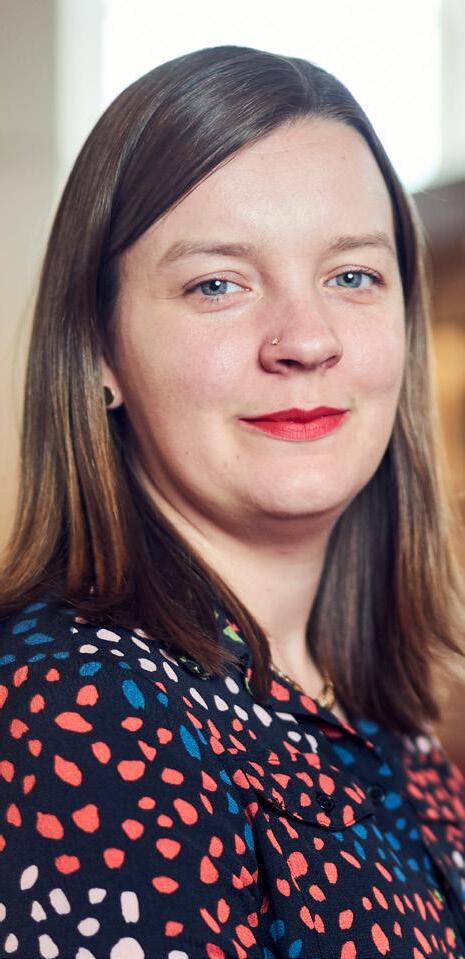



“Lyon & Turnbull were honoured when Paisley Art Institute approached us to discuss an auction.
As the market leaders in specialist Scottish Art auctions, we are very well placed to present the wonderful works selected by the PAI team on the open market and to an international audience.”
James McNaught, Associate Director
“Over its 150 year history the Paisley Art Institute has maintained its original goal ‘to promote and support the work of Scottish artists’.
After working through the challenges faced by the PAI this year it is with pleasure that the future of the PAI will be secured.
The funds from this auction will help us create new awards and grants for artists, to inspire excellence and make new treasures.”
Joe Hargan, President of Paisley Art Institute
The founding Constitution of Paisley Art Institute (PAI) in 1876 declared that its purpose was ‘the encouragement of Art Studies and the promotion of a taste for Art, by such means as Monthly Conversazioni, Lectures and Exhibitions of Works of Art.’ Furthermore, the twelfth ‘Rule’ stated that ‘the Managing Committee may, in the event of surplus Funds, purchase Works of Art therewith.’
The ‘Conversazioni’ duly began on the last Thursday evening of every month, during which Members’ pictures were exhibited for Criticism and ‘Art topics’ were discussed. The PAI’s first Annual Exhibition was held the following year and has become Scotland’s third longest-running showcase of artists’ work, after only those of the Royal Scottish Academy of Art and Architecture (RSA), based in Edinburgh (held since 1827) and that of the Royal Glasgow Institute of the Fine Arts (held since 1861 and currently in abeyance). In its 148th year of existence, the PAI’s 135th Annual Exhibition was mounted at Glasgow Art Club in 2024.
A collection of fine art began to grow informally until 1913 when, under the Presidency of John Millar (PPAI 1895-1916), its first official acquisitions were recorded. They included William Allan’s Blind Harry Reciting the Deeds of Wallace (lot 29) and William Stewart’s The Penny Whistle (lot 93).
During the 1910s, James Begg (PPAI 1920-27), a leading figure amongst Paisley’s textile industries, presented works by three of the Glasgow Boys to the Institute. Thus E. A. Hornel’s Voices in the Woodlands (lot 75), John Lavery’s stunning Paisley Lawn Tennis Club (lot 64) and William Kennedy’s Market-place, Woolhampton (lot 80) joined the collection over a four-year period from 1915. These paintings symbolised the strong relationship between ‘The Boys’ and the PAI, whose Annual Exhibitions provided vital early-career opportunities to the artists to display and sell their work.
It appears that sufficient ‘surplus Funds’ were to hand for the PAI to make its first listed purchases in 1915, namely a work on paper by James Garden Laing and a bronze by Alexander Proudfoot. In 1917, the Glasgow School of Art-trained artist Louise (Louisa) Ellen Perman presented The Gleaners (lot 40) by her recently deceased husband James Torrance, thereby becoming one of the PAI collection’s earliest known and many female benefactors.
Recovery after World War One led to renewed collecting vigour during the 1920s, not least with the decision in 1925 of the Institute’s Managing Committee to invest a sum ‘not exceeding £500’ in order to buy paintings. As a result, David Foggie’s Mother and Child (lot 34) was purchased the following year.
However, the most significant additions during the decade were works presented by Honorary President J. A. D. (James Anderson Dunlop) MacKean, a Paisley starch manufacturer, Burgh Treasurer, sportsman and collector. With his gifts of George Henry’s The Banks of Allan Water scheme (lots 76, 77 and 78) in 1922 and William York MacGregor’s Nethy Bridge (lot 5) two years later, the representation of the Glasgow Boys developed apace, whilst the Glasgow Girl Olive Carleton Smyth’s Bacchanale (lot 90) followed from MacKean in 1929. He also gifted David Forrester Wilson’s

extraordinary Passing Day (lot 25) in 1923. MacKean’s greatnephew, Colin C. MacKean, is PAI’s current Treasurer.
Arguably, the ‘glory days’ of the PAI collection were during the 1930s, which saw a turn in the generations of Paisley’s great industrialists. The James Fulton Bequest of 1933 did much to transform the Institute’s holdings, not least in the form of works by the Glasgow Boys. The late manufacturer of Glenbright Starch, patron of the arts and Institute Honorary Committee member (1925-29), bequeathed works including
no fewer than three paintings by Lavery (lots 65, 66 and 67), of whom he had been a long-term supporter, Arthur Melville’s The Mosque, Evening (lot 38), James Guthrie’s contemplative Firelight Reflections (lot 42) and William Kennedy’s romantic Reverie (lot 27).
Following the death of her uncle, J. A. D. MacKean, Miss M. K. (Margaret Kathleen) Muir MacKean is believed to have inherited F. C. B. Cadell’s elegant Pink and Gold (lot 96) from him, which she presented to the PAI in 1932, thus introducing the Scottish Colourists to its holdings. In the same year, the Institute’s founding Secretary A. M. Macdougall gifted Joseph Noël Paton’s mesmerizing Michelangelo Sculpting the Statue of ‘Night’ (lot 64). This was surely a work of special resonance for an artists’ collective in which one of their greatest predecessors is depicted during the act of creation.
Coming a close second in importance to Fulton as a supporter of the collection during this period was Richard Edmiston, of Glasgow’s J. & R. Edmiston Auctioneers and Valuators, who was an Honorary Committee member between 1935 and 1937. Following his earlier presentation of John MacWhirter’s A Highland Drove Road (lot 68) in 1923, Edmiston went on to give further works including Cowan Dobson’s A Model (lot 94), James Kay’s A Continental Street Scene (lot 71) and Horatio McCulloch's My Heart is in the Highlands (lot 24), all in 1937. This trio alone represented Scottish art history from Victorian Scottish landscape to Scottish artists working abroad to contemporary portraiture.
Indeed, at a time when the National Galleries of Scotland did not acquire work by living artists, the PAI was particularly enlightened in its support of its members and their peers by way of representing contemporary art in its collection. A roll call of many leading lights of its fellow artist-member organisations, such as the Royal Academy of Arts in London, RSA and Royal Scottish Society of Painters in Watercolours, were featured, including James Bell Anderson, George Clausen, Anna Dixon, George Houston, Archibald McGlashan, Fra Newbery and Robert Macaulay Stevenson.
In 1935, the first known loan out from the PAI collection to another institution was made when MacGregor’s Nethy
Bridge (lot 5) was lent to Glasgow Art Club’s Exhibition of Works by Deceased Artist Members. This provided an opportunity for it to be seen beyond the town and was a public expression of the warm relationship between Institute and Club which has led to the recent joining of the futures of the two organisations. A significant group of loans was also made to the landmark Empire Exhibition, staged in Glasgow’s Bellahouston Park in 1938, including Walton’s The Lone Tree (lot 22), David Gauld’s Farm Scene (lot 9) and Robert Macaulay Stevenson’s Wooded River Landscape at Dusk (lot 2)
World War Two meant the temporary cessation of the Annual Exhibition between 1940 and 1947, but but the PAI's collection continued to develop. Stanley Cursiter’s Lobster Fishermen, Rousay (lot 97) was acquired by way of the W. G. Barbour Bequest in 1944, whilst James Guthrie’s key painting, The Stone-Breaker (lot 43) was presented by the seventh PPAI James Hally Brown of the starch manufacturers Brown & Polson, three years later. Miss Elizabeth S. Paterson left a bequest in 1949 which heralded the arrival of Glasgow Girl Stansmore Dean Stevenson’s beautiful The Breton Girl (lot 86).
The PAI collection did not only come to represent much of the best in Scottish art, but also contemporary Scottish collectors’ taste for the work of European artists. This interest was mainly shaped by Alexander Reid, ‘a prince among dealers’ during the period from 1889 until 1925, whose gallery La Société des Beaux-Arts was based in Glasgow. As ‘the second city of the British Empire’, the wealthy industrialists of the region were keen to collect art and turned to advisers like Reid to guide them in their purchases.
The Fulton Bequest represented this combination of collecting areas. In addition to the Scottish works already discussed, it featured Barbizon School artists such as Charles-François Daubigny and his Ferme près de Valmondois (lot 44) and Paysage au Bord de l’Oise, Île de Vaux (lot 45) as well as Théodore Rousseau’s Landscape (lot 46). The PAI collection also gained examples by the Hague School artists François Pieter ter Meulen (Off to Pasture and Home from the Fields (lots 48 and 12) and Willem Maris' Landscape with Cattle (lot 85), in addition to the French naturalist pastellist
Léon Augustin L’Hermitte (Retour du Troupeau à la Ferme du Vivier and The Old Well, lots 79 and 84). The acquisition of the Dutch artist Nico Jungman’s watercolour Oude Delft (lot 59) may well be linked to the fact that he married the Scottish travel writer Beatrix Mackay.
As the PAI nears its 150th year in 2026, it is a dynamic artists’ collective, led by its 22nd President, Joe Hargan and run by artists and art lovers. It remains committed to its founding objectives of encouraging ‘Art Studies’ and
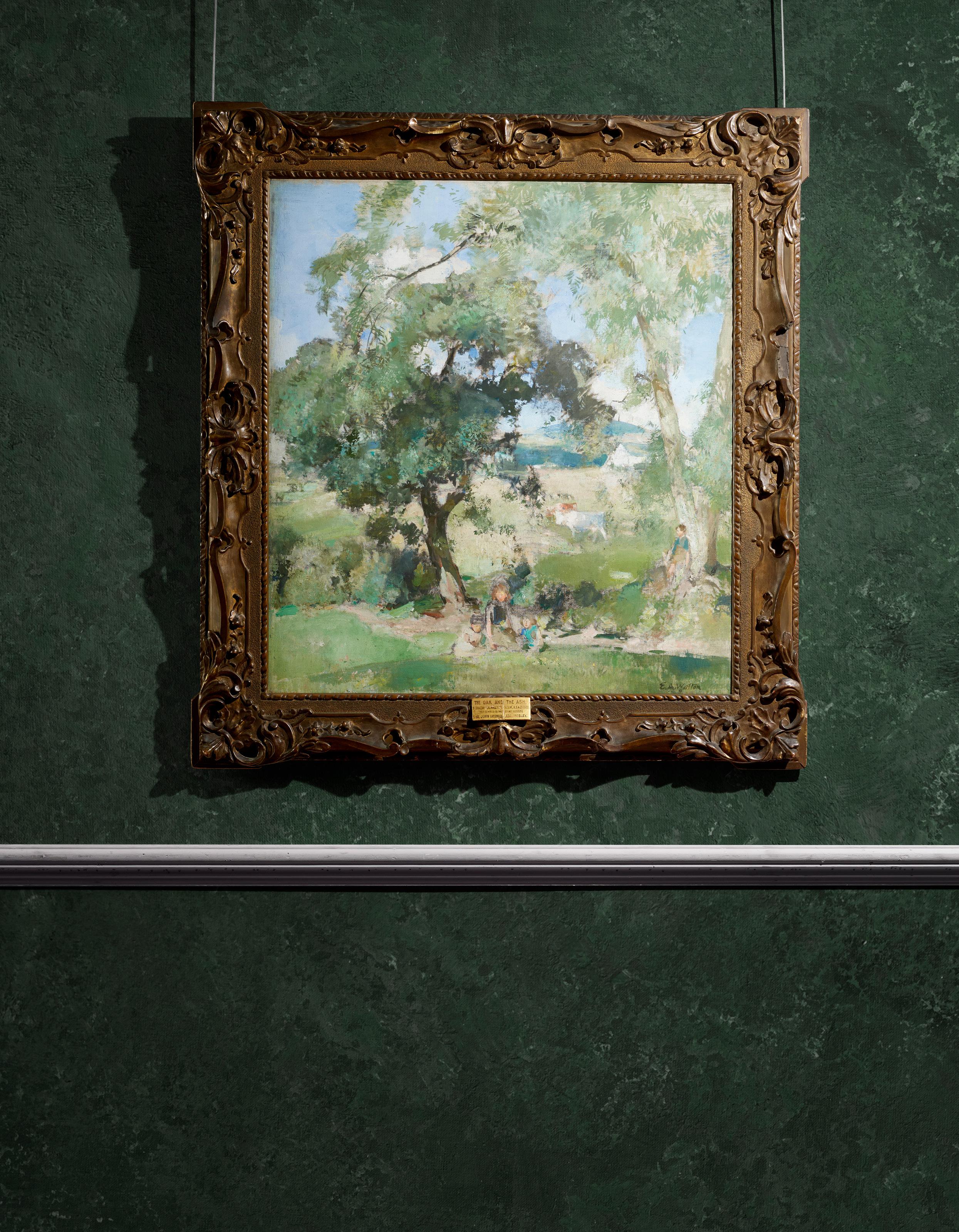
promoting ‘a taste for Art’. The Institute also continues to honour the principle to champion, nurture and advocate for contemporary Scottish artists’ work, not least through ensuring the continuation of the PAI Annual Exhibition, first held in 1877. In 2024 terminology, it ‘aims to inspire excellence, encourage creativity and make new treasures.’
Our thanks are due to Michael Durning (PPAI 2011-15) for his help with our research.
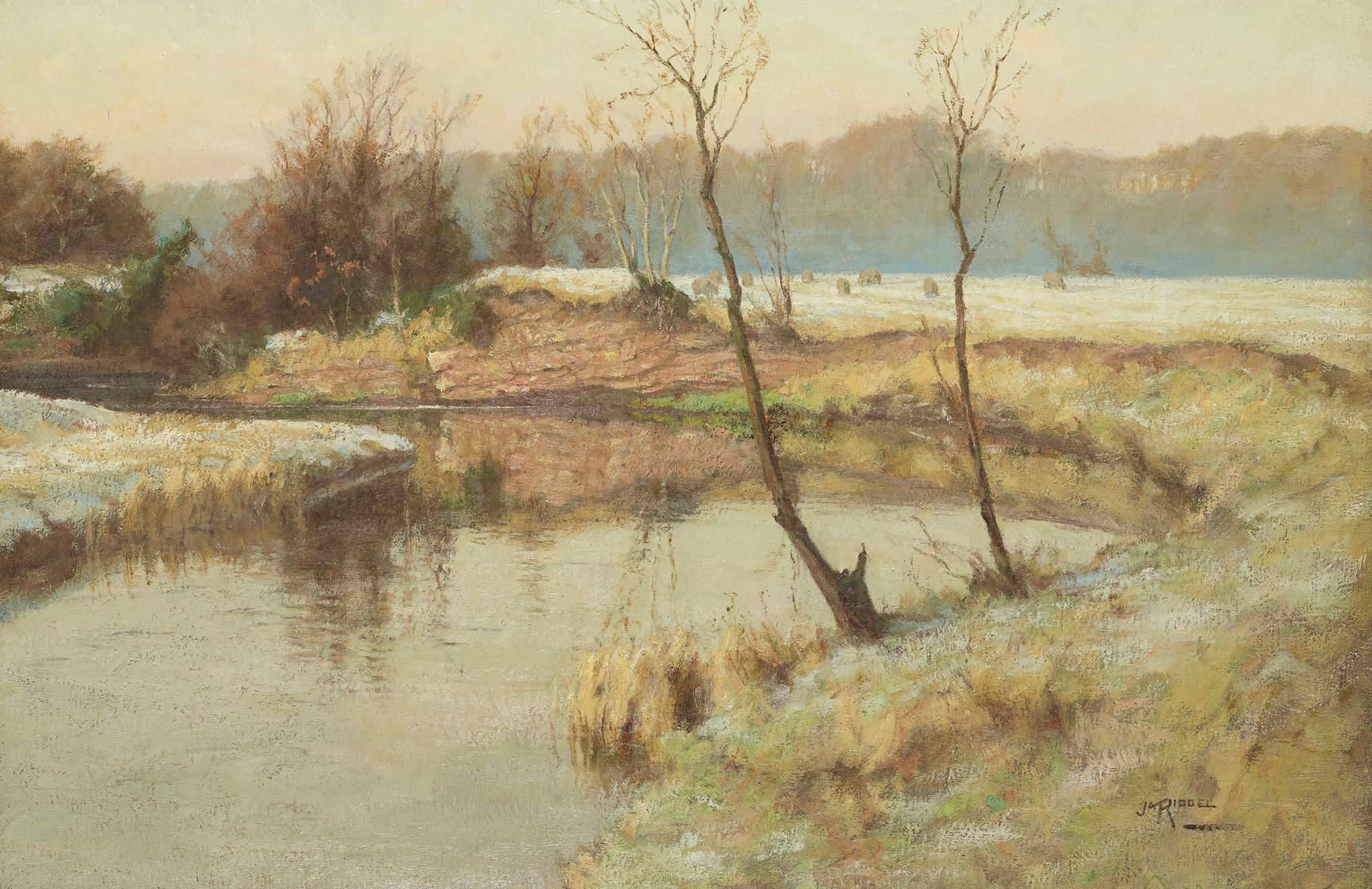
JAMES RIDDEL A.R.S.A., R.S.W. (SCOTTISH 1857-1928) A FROSTY MORNING NEAR THE MOUTH OF THE LUGAR, MAUCHLINE
Signed, oil on canvas
61cm x 91cm (24in x 36in)
Provenance: Presented by Mr and Mrs Alexander Hill, 1932.
Exhibited: Glasgow Art Gallery, A Century of Art in Glasgow; Hankyu Department Store, Umeda Main Store, Osaka, Japan, The Beautiful Landscape of Scotland, 11-16 November 1983; touring to Tenmaya Department Store, Okayama Main Store, Okayama, Japan, 18-23 November 1983.
£1,500-2,500



2
ROBERT MACAULAY STEVENSON R.S.W. (SCOTTISH 1854-1952)
WOODED RIVER LANDSCAPE AT DUSK
Signed, oil on canvas
63.5cm x 76cm (25in x 30in)
Provenance: Presented by Mrs Fergus Morton and Mrs J. W. H. Gow, 1937.
Exhibited: Palace of the Arts, Empire Exhibition, Scotland, Bellahouston Park, 1938, no.552, repr. b/w p.42.
Note: Titled ‘Landscape’, in Illustrated Catalogue of Paintings, Drawings, Sculpture in the Collections of Paisley Corporation and Paisley Art Institute, 1948.
£1,000-1,500
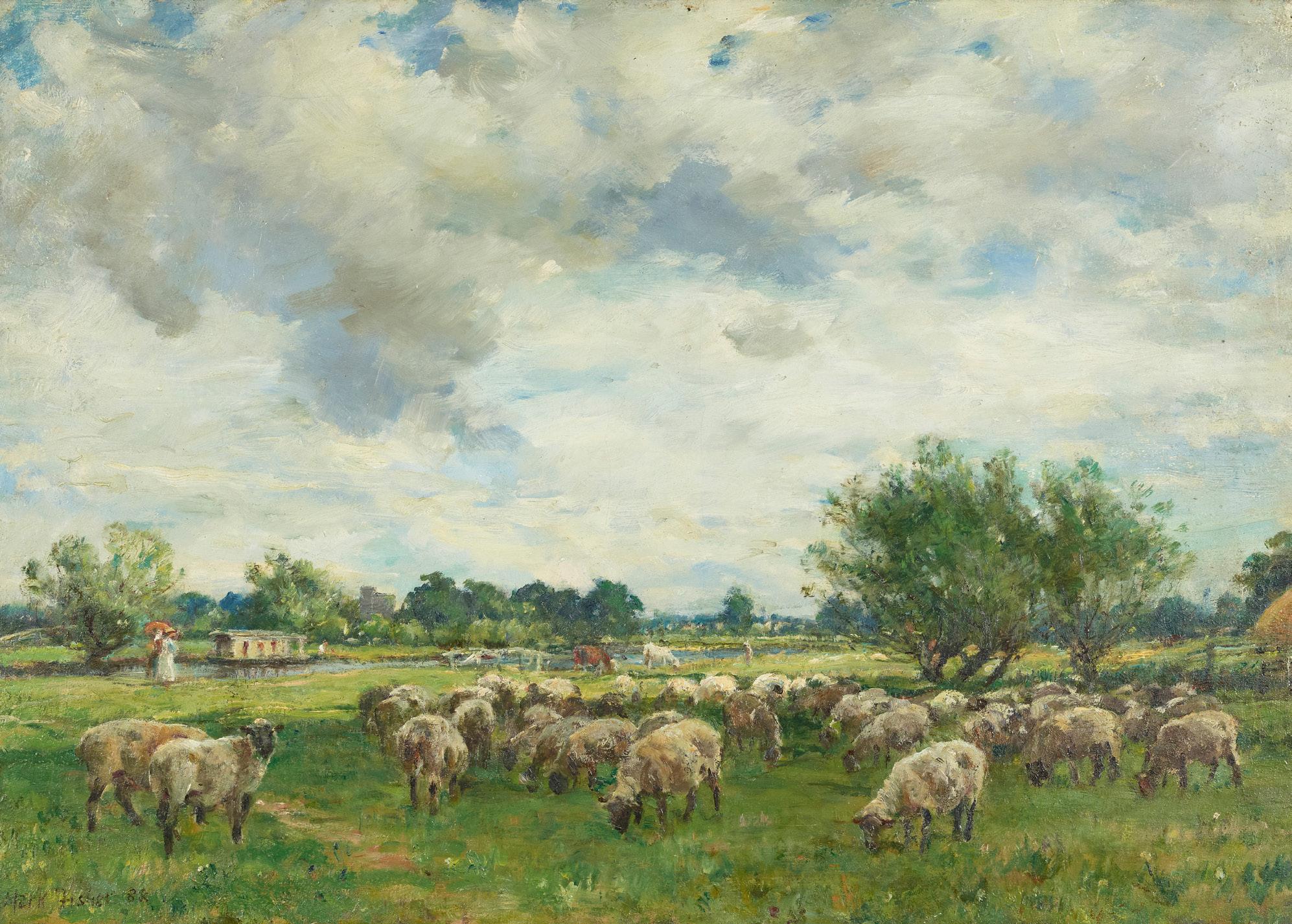

3
MARK WILLIAM FISHER R.A.
(BRITISH-AMERICAN 1841-1923)
LANDSCAPE WITH SHEEP
Signed and dated ‘88, oil on canvas
46cm x 66cm (18in x 26in)
£1,500-2,000
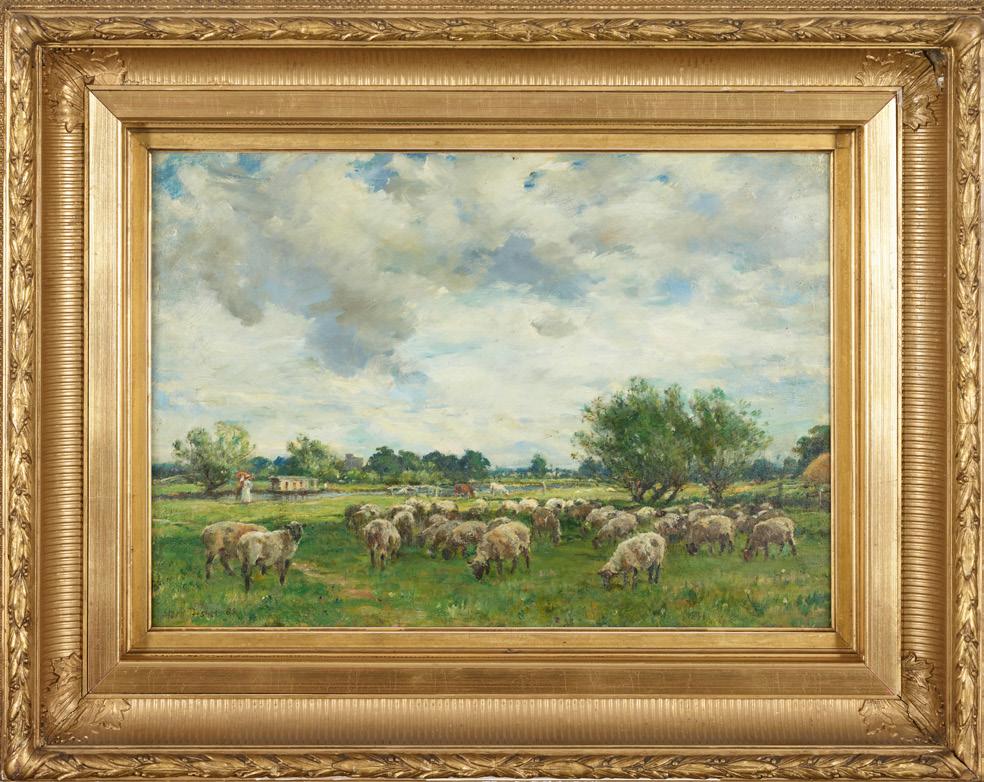

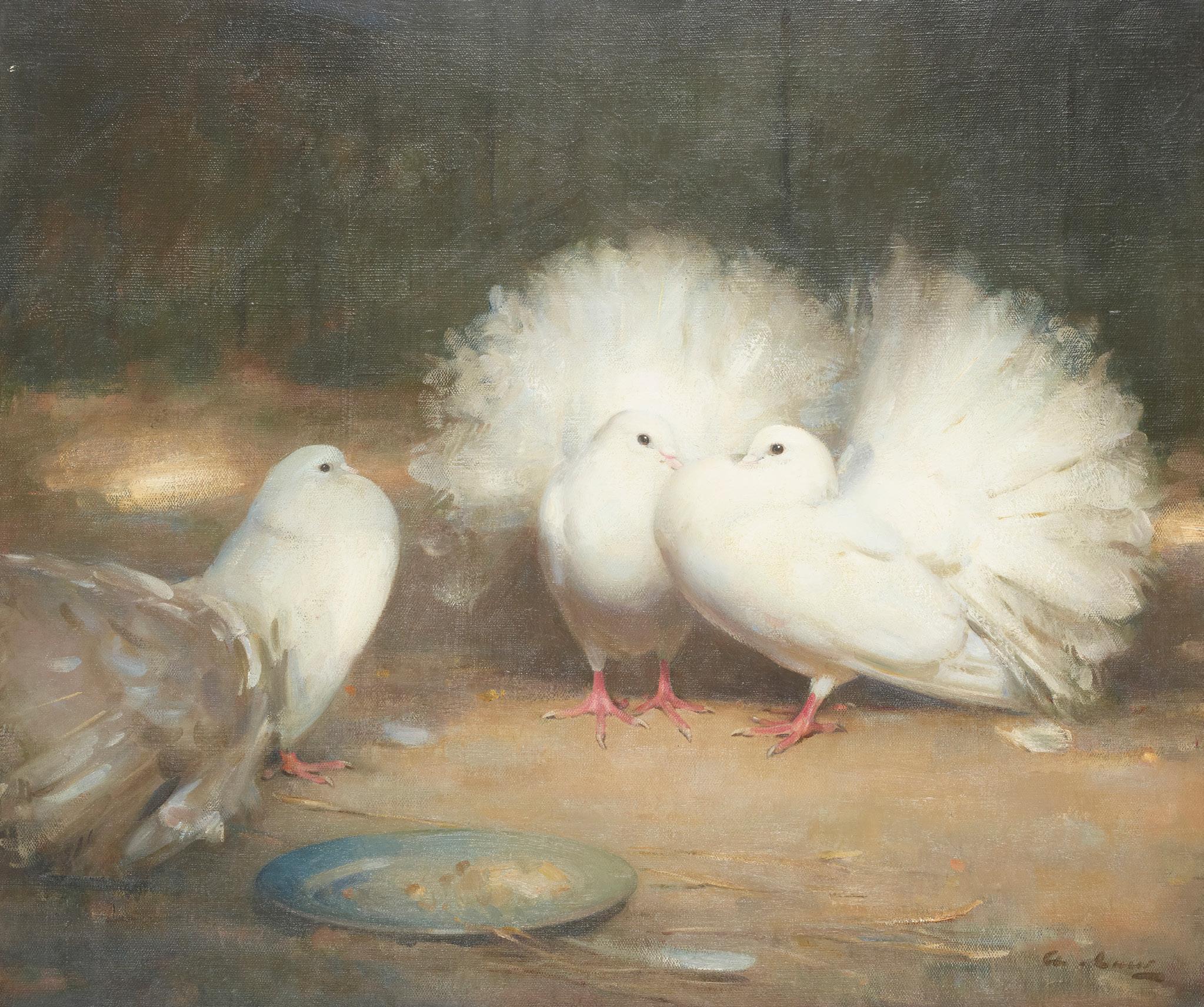
4 § ANDREW LAW (SCOTTISH 1873-1967) FAN-TAILS
Signed, signed verso, oil on canvas 63.5cm x 76cm (25in x 30in)
Provenance: Purchased by Paisley Art Institute, 1936.
£2,000-3,000

WILLIAM YORK MACGREGOR
R.S.A., R.S.W. (SCOTTISH 18551923)
NETHY BRIDGE
Signed verso, with the Artist’s Trustee’s stamp, oil on canvas 79cm x 89cm (31in x 39in)
Provenance: Presented by J. A. D. McKean, Esq., 1924. Exhibited: Glasgow Art Club, Exhibition of Works by Deceased Members, Glasgow, 6th April-11th May 1935, cat.no.5; Hankyu Department Store, Umeda Main Store, Osaka, Japan, The Beautiful Landscape of Scotland, 11-16 November 1983; touring to Tenmaya Department Store, Okayama Main Store, Okayama, Japan, 18-23 November 1983.
£2,000-3,000
William York Macgregor is remembered as one of the leading figures of the Glasgow Boys. This meeting of minds was catalysed when Macgregor and his former school friend, the artist James Paterson, co-founded 'The Glasgow School' in 1878 out of Macgregor’s studio at 134 Bath Street.
Regarded as a member of ‘The First Wave’ of Glasgow Boys, Macgregor’s work typifies the movement. With strong ties to Glasgow (he was born there to a wealthy merchant family), he began his art education in the city, followed by a time in the Slade Schools under the tutelage of Alphonse Legros.
It is this French connection that famously became so pivotal to the aesthetic of the movement. Macgregor and his peers
absorbed the artistic developments of the Impressionist and Realist schools, adapting these exciting new visual languages into something uniquely theirs - with the work of ‘The Boys’ being committed to a naturalism of subject and a progressive painterly technique.
Extensive travels in Europe exposed Macgregor and the group’s palettes to light and colour unprecedented in the characteristically dreich canon of earlier Scottish art, with its moody mountainscapes and dim interiors. As here in Nethy Bridge, Macgregor interprets Scotland as never before. Informed by the latest developments in the art world’s Parisian epicentre, the artist transplants a fresh and vivid perspective back home into a new Scottish art, which is still admired and celebrated by collectors to this day.

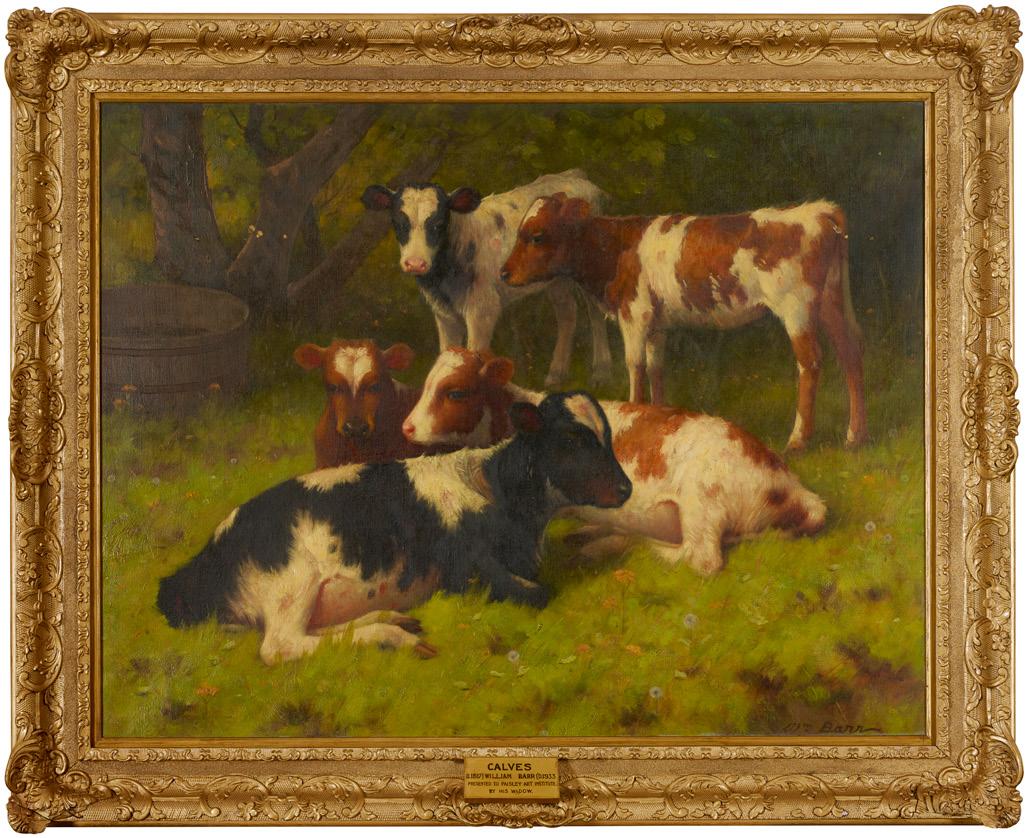
Signed, oil on canvas
78cm x 91cm (28in x 36in)
Provenance: Presented by Mrs E. S. Barr, 1940.
£1,500-2,000
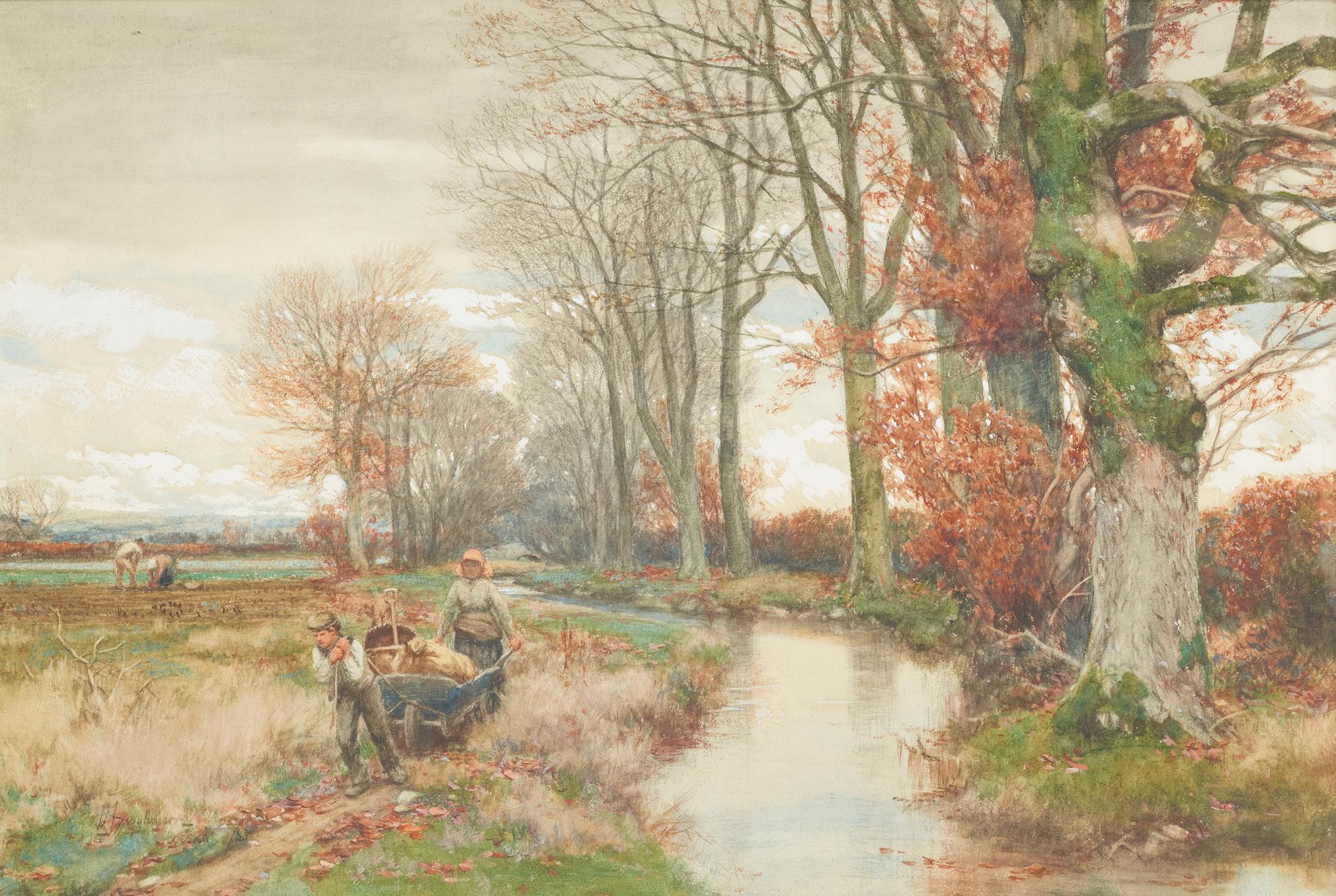
7
DAVID FARQUHARSON A.R.A., A.R.S.A., R.S.W., R.O.I. (SCOTTISH 1839-1907)
RETURN FROM THE FIELDS
Signed and dated ‘83, watercolour and bodycolour
51cm x 76cm (20in x 30in)
£1,500-2,500
8
JOHN ROBERT KEITLEY DUFF R.I., R.E. (SCOTTISH 1862-1938)
RETURNING FROM PASTURE
Signed and dated 1903, pastel
30.5cm x 61cm (12in x 24in)
Provenance: Fulton Bequest, 1933.
Note: Titled ‘Sheep’ in Illustrated Catalogue of Paintings, Drawings, Sculpture in the Collections of Paisley Corporation and Paisley Art Institute, 1948.
£300-500


9
DAVID GAULD R.S.A. (SCOTTISH 1865-1936) FARM SCENE
Signed, oil on canvas
38cm x 56cm (15in x 22in)
Provenance: Fulton Bequest, 1933.
Exhibited: Palace of the Arts, Empire Exhibition, Scotland, Bellahouston Park, 1938, no.562 repr. b/w p. 42 (where titled ‘The Willows'); Hankyu Department Store, Umeda Main Store, Osaka, Japan, The Beautiful Landscape of Scotland, 11-16 November 1983; touring to Tenmaya Department Store, Okayama Main Store, Okayama, Japan, 18-23 November 1983.
£1,000-1,500
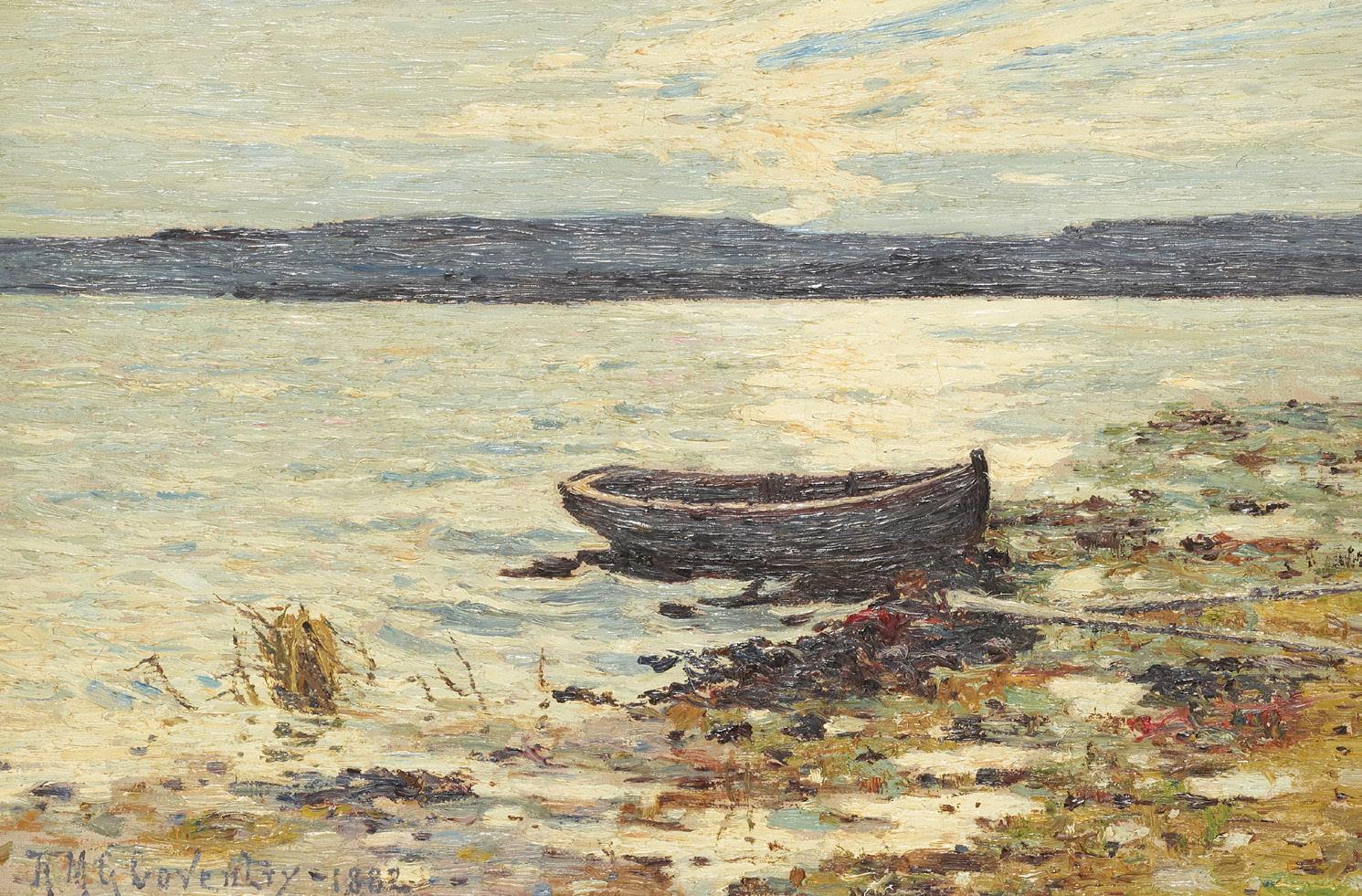
10
ROBERT MCGOWN COVENTRY A.R.S.A., R.S.W. (SCOTTISH 1855-1941) BY THE LOCHSIDE
Signed and dated 1882, oil on canvas
30.5cm x 46cm (12in x 18in)
Provenance: Presented by Sir John Anderson, 1940.
£600-800

LOUIS ADOLPHE HERVIER (FRENCH 1818-1879)
ST GERMAIN
Signed, inscribed ‘Croquis 46’ and dated 1866, pen and ink and watercolour 14cm x 18.5cm (5.5in x 7.25in)
Provenance: Fulton Bequest, 1933.
Note: Titled ‘Dutch Landscape, 1866’ and erroneously catalogued as pastel, in Illustrated Catalogue of Paintings, Drawings, Sculpture in the Collections of Paisley Corporation and Paisley Art Institute, 1948.
£300-500
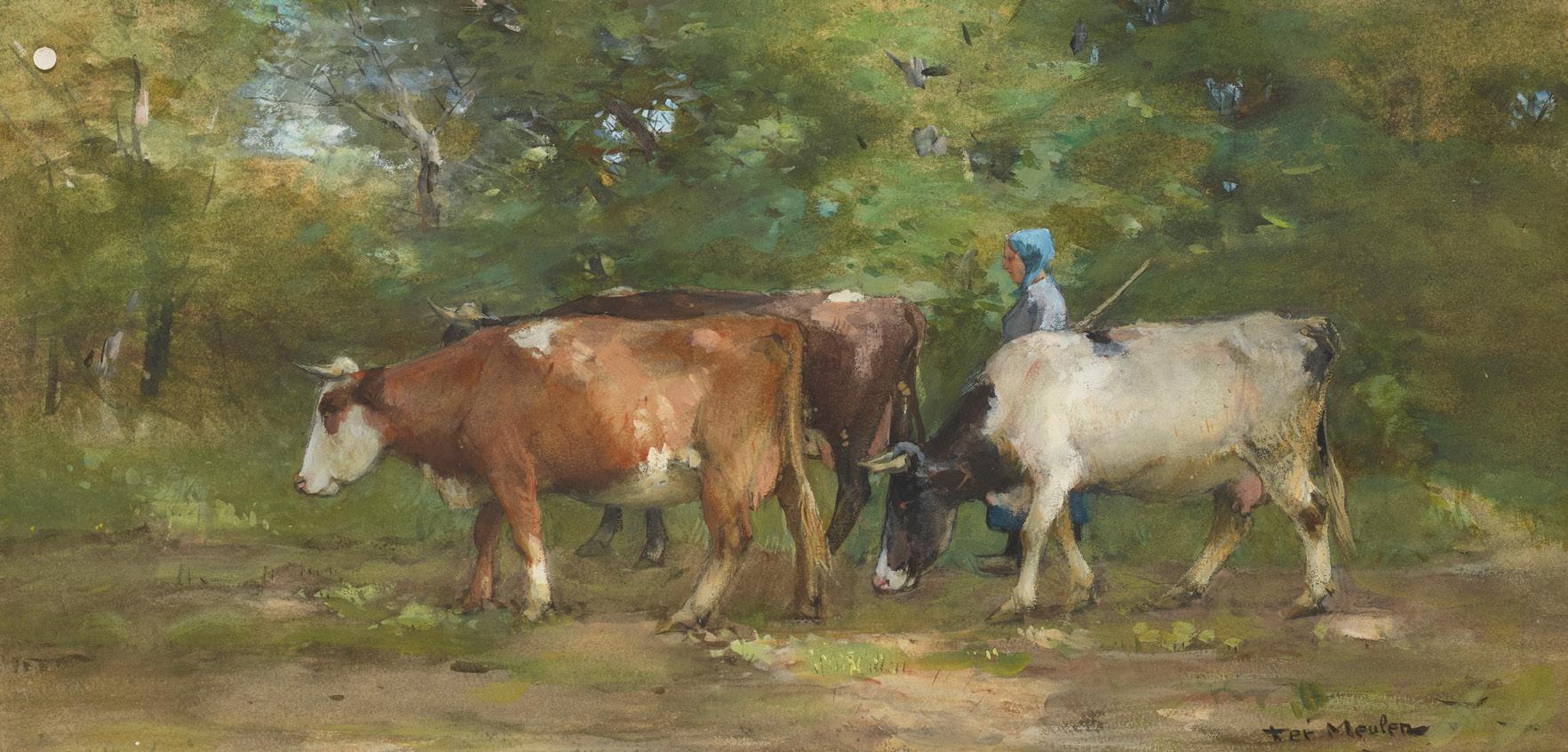
FRANÇOIS PIETER TER
MEULEN (DUTCH 1843-1927)
HOME FROM THE FIELDS
Signed, watercolour
28cm x 58cm (11in x 22.75in)
£300-500
WILLEM DE ZWART (DUTCH 1862-1931)
THE TIMBER WAGON
Signed, pen and ink and watercolour
17cm x 23cm (6.75in x 9in)
£200-300
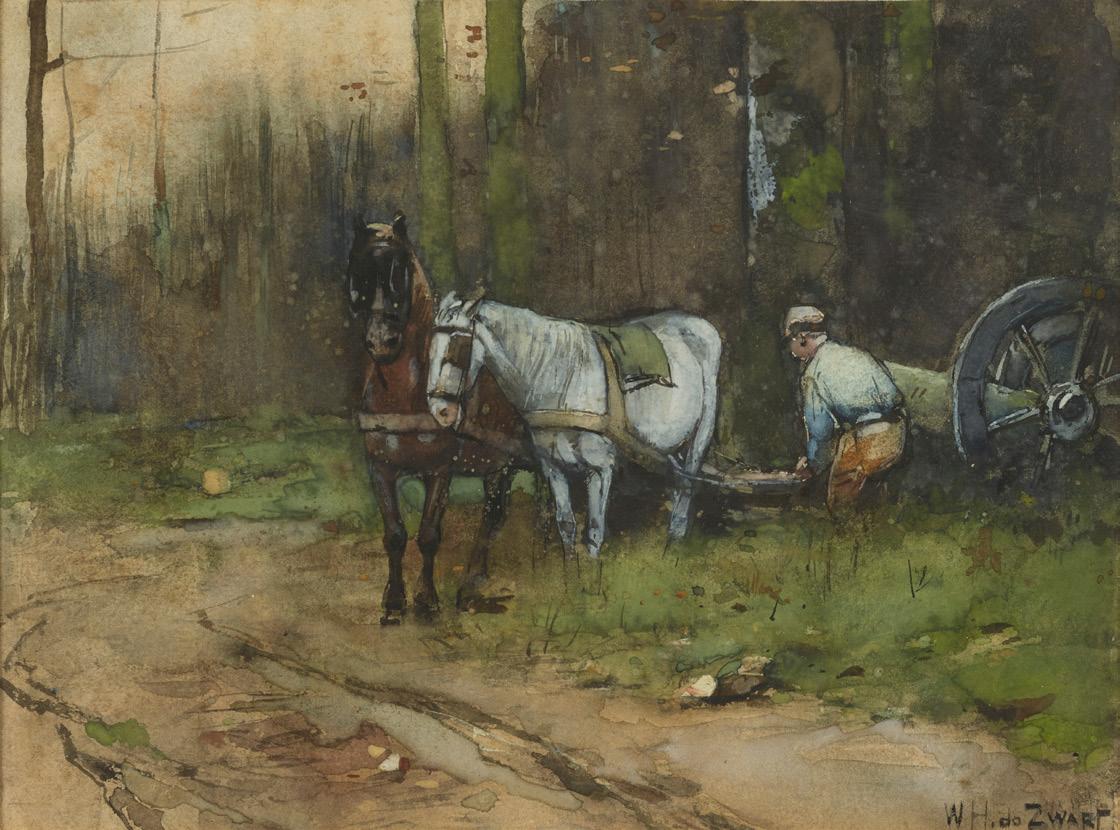
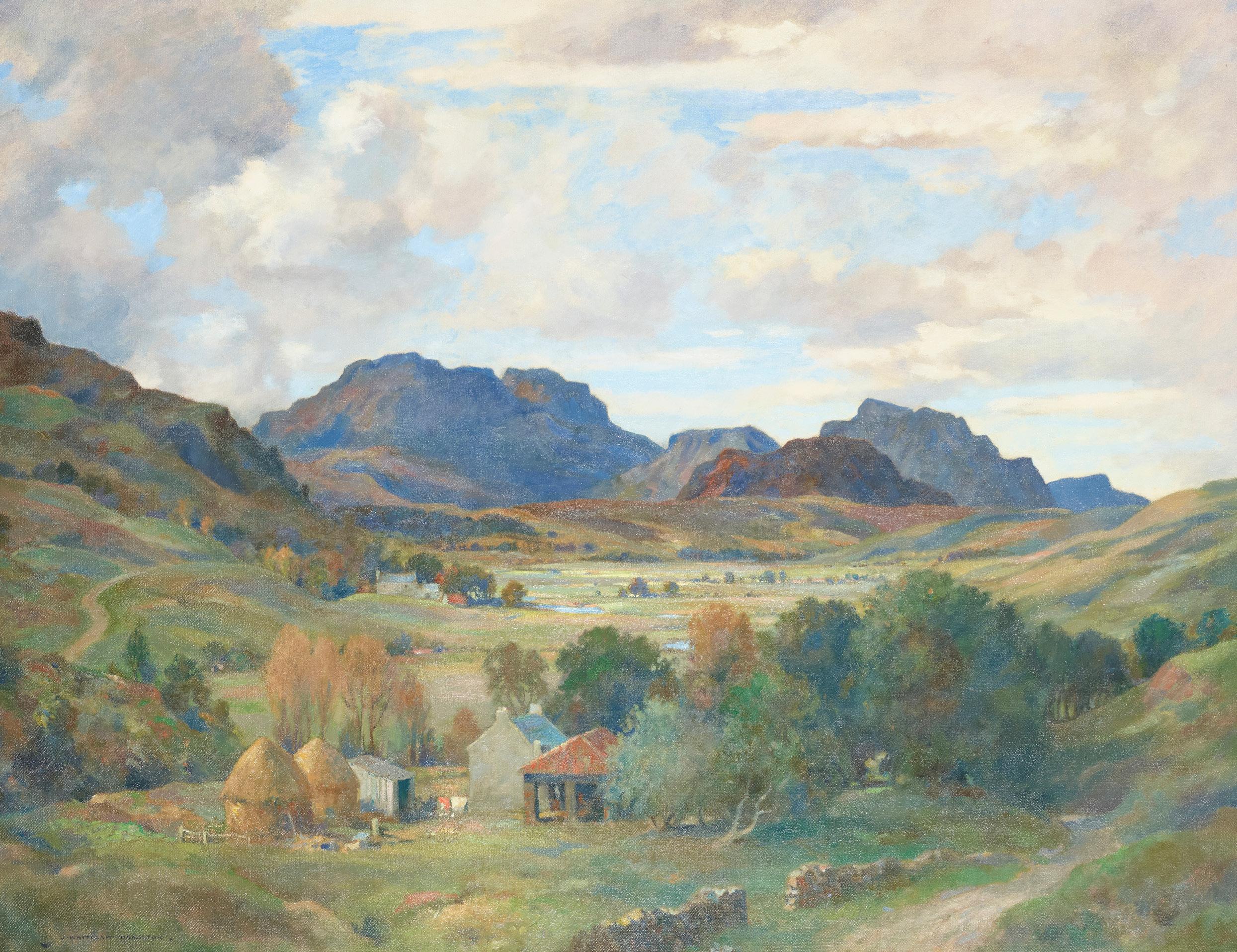

14
JAMES WHITELAW HAMILTON
R.S.A., R.S.W. (SCOTTISH 1860-1932)
GLEN FRUIN
Signed, oil on canvas
85cm x 110.5cm (33.5in x 43.5in)
Provenance: Presented by Mrs Whitelaw Hamilton, 1934. Exhibited: Hankyu Department Store, Umeda Main Store, Osaka, Japan, The Beautiful Landscape of Scotland, 11-16 November 1983; touring to Tenmaya Department Store, Okayama Main Store, Okayama, Japan, 18-23 November 1983.
£3,000-5,000

R.B.A., R.O.I., R.S.A., R.S.W. (SCOTTISH 1860-1936)
DORA AND MARY
Signed, oil on canvas
102cm x 84cm (40in x 33in)
Exhibited: Royal Institute of Oil
Painters, London, no.1
£6,000-10,000
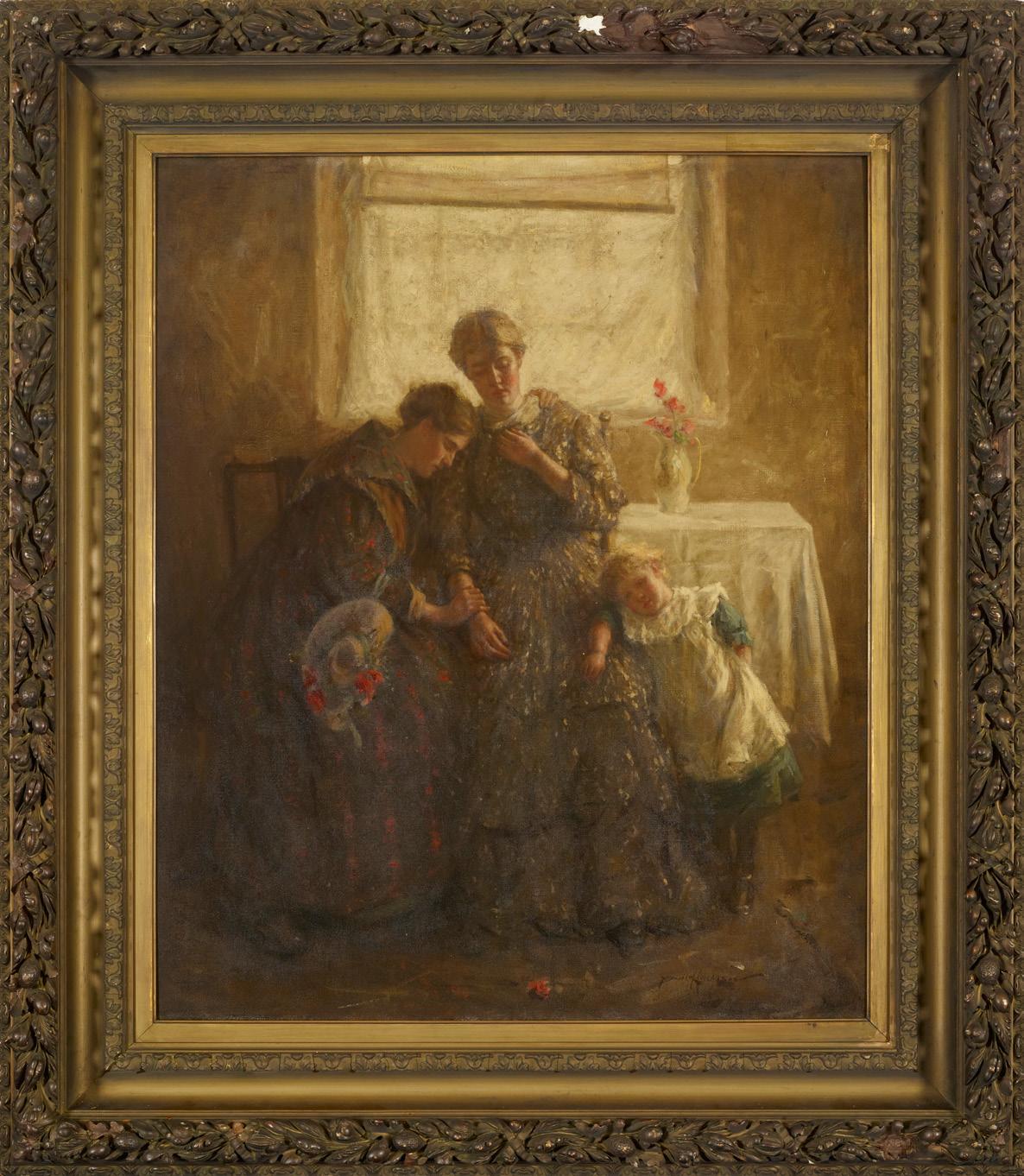

WILLIAM STEWART (SCOTTISH 1823-1906) THE DOMINIE
Signed with monogram, oil on canvas
61cm x 46cm (24in x 18in)
Provenance: Presented by J. Stuart Jack, Esq., 1928.
£2,000-3,000

17
JOSEPH DENOVAN ADAM
R.S.A., R.S.W. (SCOTTISH 1842-1896) CROSSING THE FORD
Signed and dated 1875, oil on canvas 76cm x 132cm (30in x 52in)
Provenance: Purchased by Paisley Art Institute, 1913.
Note: Titled ‘Highland Cattle’ in Illustrated Catalogue of Paintings, Drawings, Sculpture in the Collections of Paisley Corporation and Paisley Art Institute, 1948.
£1,000-1,500

18
JOHANNES HUBERTUS LEONARDUS DE HAAS (DUTCH 1832-1908) LANDSCAPE WITH COW AND CALVES
Signed, oil on panel
46cm x 68cm (18in x 26.5in)
£600-800

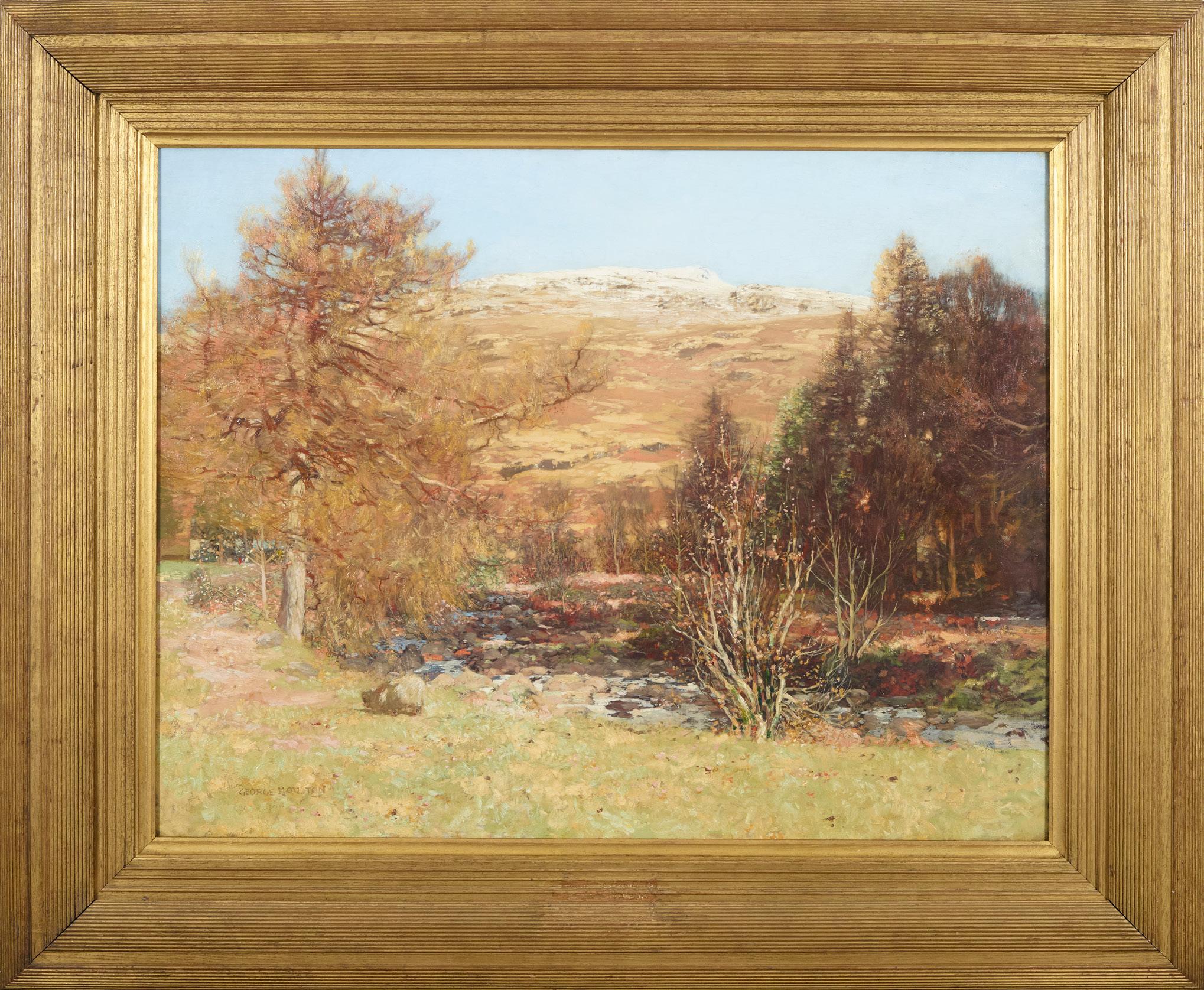

19
GEORGE HOUSTON
R.S.A., R.S.W., R.I. (SCOTTISH 1869-1947)
THE COMING OF WINTER
Signed, oil on canvas
101.5cm x 127cm (40in x 50in)
Provenance: Presented by A. Cowan, Esq., 1935.
£4,000-6,000

‘a

Edward Arthur Walton is well-known as one of the significant figures within the loose network of artists now commonly referred to as the ‘Glasgow Boys.’ It can therefore be difficult to separate his life and work from this movement, but it does a disservice to Walton not to pay attention to the wider picture of his long and illustrious career. He made his way as an artist from his late teens all the way until the day of his death, and during this overforty-year period he was elected to, and participated in, various institutions and artistic bodies across the U.K., exhibited and won prizes internationally, and was widely praised by critics and fellow artists alike.
‘Walton was a painter so distinguished that he held a special place in the regard…of all who followed with any intelligence or interest the development of art in the country during the last three or four decades’
– Daily Record and Mail, 12 January 1924 (quoted in Fiona MacSporran, Edward Arthur Walton, Foulis Archive Press, Glasgow, 1987, p.9)
Throughout his career, Walton’s output was varied, working consistently in both oil and watercolour and developing a successful portraiture practice. He worked largely to commission, while he continued to excel in his favoured landscape subjects, which are suffused with atmosphere, light, and a sensitivity and freedom that remains utterly compelling. Working in both mediums, we can feel his joy and pleasure in the world around him. He converts atmosphere to paint, so we can feel the warming sun and
EDWARD ARTHUR WALTON
R.S.A., P.R.S.W., H.R.W.S. (SCOTTISH 1860-1922)
CHANCE ENCOUNTER
Signed, oil on canvas
76cm x 73.5cm (30in x 29in)
Provenance: Presented by Mrs Fergus Morton and Mrs J. W. H. Gow, 1937. £7,000-10,000
Exhibited: Hankyu Department Store, Umeda Main Store, Osaka, Japan, The Beautiful Landscape of Scotland, 11-16 November 1983; touring to Tenmaya Department Store, Okayama Main Store, Okayama, Japan, 18-23 November 1983.
Note: Titled ‘Landscape’, in Illustrated Catalogue of Paintings, Drawings, Sculpture in the Collections of Paisley Corporation and Paisley Art Institute, 1948.
gentle breeze, smell the air and feel that particular freshness that lifts the spirit when we are surrounded by nature. Yet, this feeling of spontaneity and freedom is underpinned by an artistic rigour so that every dappled brushstroke and area of exposed ground or canvas is considered and intentional. Walton pays particular attention to light and shade, picking out shadows in rich tones of cooler shades, the gentle contrast serving the overall harmony and charm of the finished painting. As Helen Weller observes:
‘They are not, in spite of their beauty and charm, simply an emotional response to nature; they are carefully conceived, to the extent of using unusual surfaces and a barium ground to enrich the colour. Nothing is irrelevant or inconsidered. The smallest stroke of warm colour on the sleeve of a tiny figure set in cool shadow is wholly necessary.’
- Helen Weller, E.A. Walton, Bourne Fine Art exhibition catalogue, Edinburgh, 1981
Sketching in the countryside surrounding Glasgow from an early age, Walton seems to have had family support for his early artistic enthusiasm and talent, as training was arranged for him at the Kunstacademie, Dusseldorf in 1876-77, while he was still in his teens. On his return, he commenced his career as an artist in Glasgow, and in 1878 exhibited at the Glasgow Institute and was elected to the Glasgow Art Club, while attending Glasgow School of Art, and winning local and national competitions.
Artistic networks, friendships and connections were important for the development of the Glasgow Boys, and for Walton, in particular. He initially met James Guthrie, who would become a life-long friend, while Joseph Crawhall became connected to his family through marriage, commencing another important friendship. Further relationships developed with a wide range of artists through painting and travel, including George Henry, Arthur Melville, James Whitelaw Hamilton, Thomas Corsan Morton, Alexander Kellock Brown, J.D. Taylor and William York Macgregor. Walton’s great enthusiasm for landscape meant he was keen to capture different viewpoints and evoke varied atmospheres and so pursued painting with his friends and colleagues in locations as varied as Rosneath, Brig O’ Turk, Helensburgh, Cockburnspath, Somerset and Cambuskenneth.
All this exploration and artistic mingling proved potent, and by 1889 Walton could comfortably be called a successful, professional artist. That year he had received a full-page illustration in the April edition of the Scottish Art Review, was commissioned to paint the official portrait of Lord Provost King of Glasgow and was elected an Associate of the Royal Scottish Academy. In the same year, he also managed to visit Paris with Guthrie and to propose marriage to Helen Law at the Glasgow Art Club’s Grand Fancy Dress Ball, where he was dressed as Hokusai and his bride-to-be as ‘The Golden Butterfly,’ in homage to Whistler. Such was the Glasgow art scene at the time that John Lavery captured a quick sketch of the happy couple posing in their costumes. 1890 was an important moment for the so-called ‘Glasgow School’ or ‘Glasgow Boys,’ as they received so much attention for their London exhibition at the Grosvenor Gallery, as well as their success in Munich. However, by 1893, Walton appears to have felt a little jaded with the Scottish scene and decided to move his family to London.
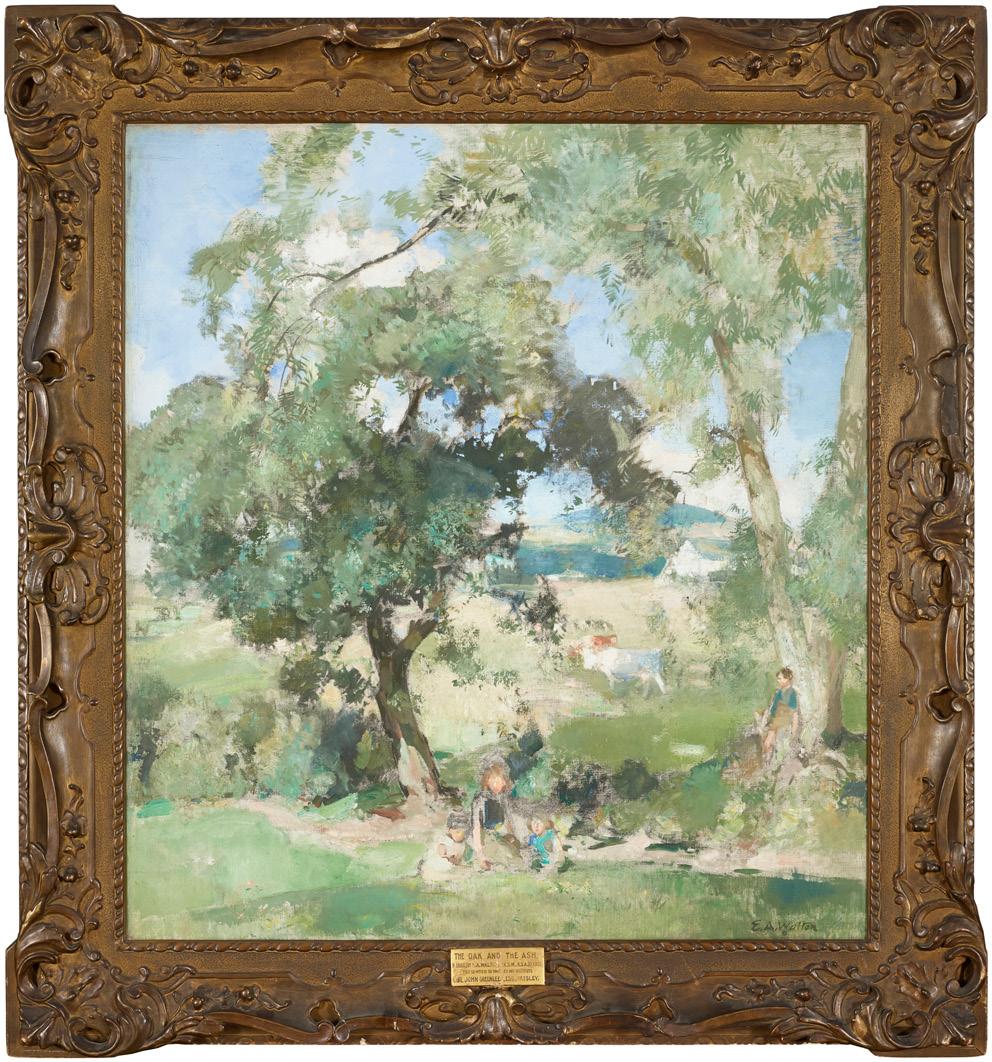
There he remained well-connected to the wider artistic network, with Whistler his new neighbour, an artist whom he had admired for many years, even having petitioned Glasgow Museums to purchase one of his works. He worked to establish himself as a portrait painter over the ten-year period but following Whistler’s death, Guthrie persuaded Walton to return home. By 1904, Walton was settled in Edinburgh and would live the rest of his days as an established Scottish artist, confirmed by his promotion to full Academician of the R.S.A. in 1905. His wider artistic network remained strong, with even family holidays to Wenhaston bringing them into close contact with other artists, and Fra Newbery and his family becoming their temporary summertime neighbours.
Walton continued to dedicate himself to painting. He participated in the mechanisations of various artworld establishments and received subsequent praise and continued high regard. He exhibited internationally, sending paintings to Munich, Paris, Berlin, St Louis and the Carnegie Institute internationals, and achieved many prizes and honours, including a Gold medal at the IX International in Munich. Following his sudden and early death, his work remained in very high esteem with the Guthrie-arranged Memorial Exhibition of 150 of Walton’s works declared by a leading critic as ‘one of the most interesting one-man shows ever assembled.’ (MacSporran, p.93).
Quote in title: Helen Weller, E.A. Walton, Bourne Fine Art Exhibition catalogue, Edinburgh, 1981
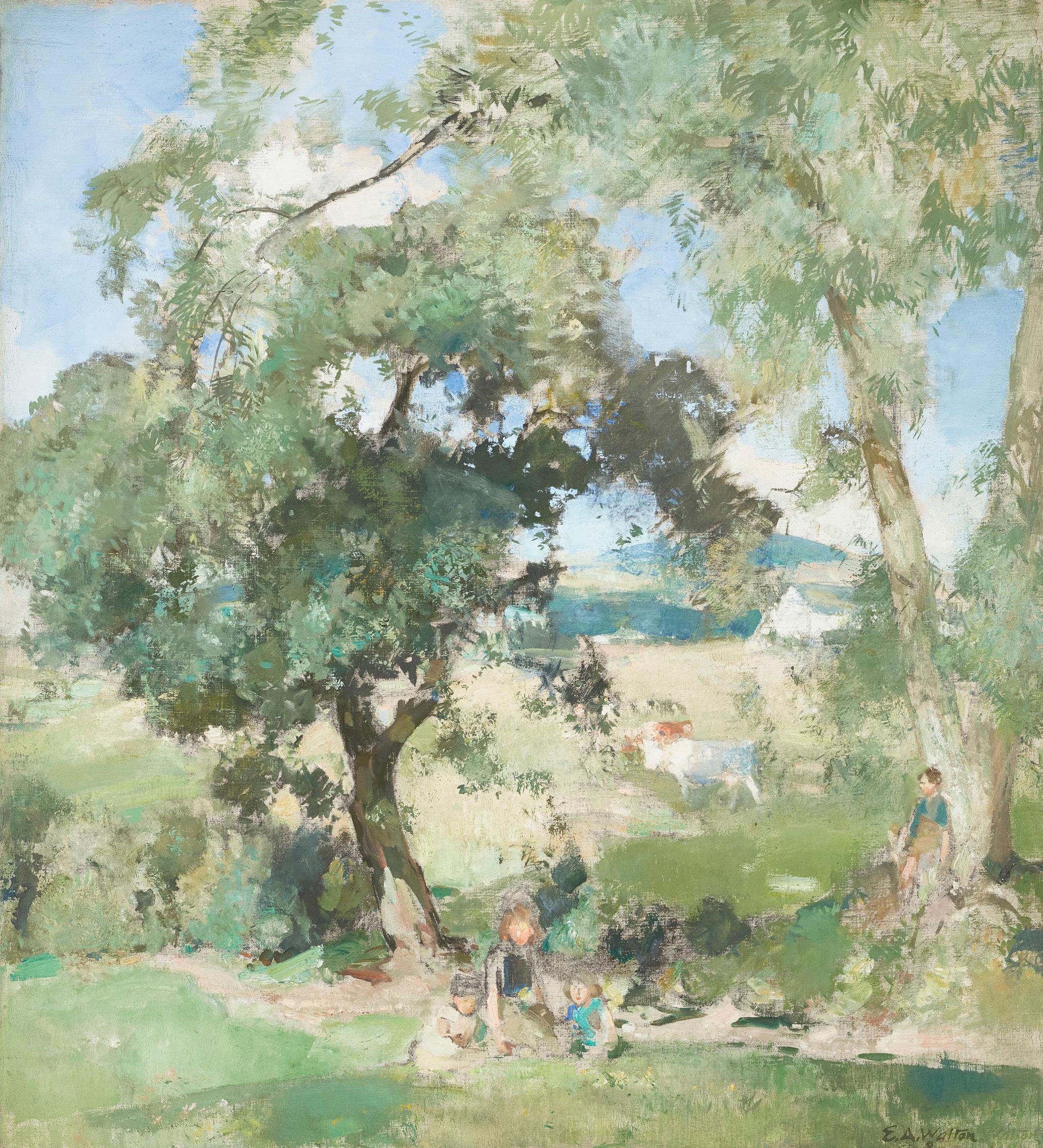
Signed, oil on canvas
98cm x 85cm (38.5in x 33.5in)
Provenance: Presented by J. Greenlees, Esq., 1923. £10,000-15,000

EDWARD ARTHUR WALTON
R.S.A., P.R.S.W., H.R.W.S. (SCOTTISH 1860-1922) THE LONE TREE
Signed, watercolour
48cm x 67cm (19in x 26.5in)
Provenance: Fulton Bequest, 1933.
Exhibited: Palace of the Arts, Empire Exhibition, Scotland, Bellahouston Park, 1938, no.226 repr. b/w p.34.
Note: Titled ‘Landscape’, in Illustrated Catalogue of Paintings, Drawings, Sculpture in the Collections of Paisley Corporation and Paisley Art Institute, 1948.
£2,000-3,000

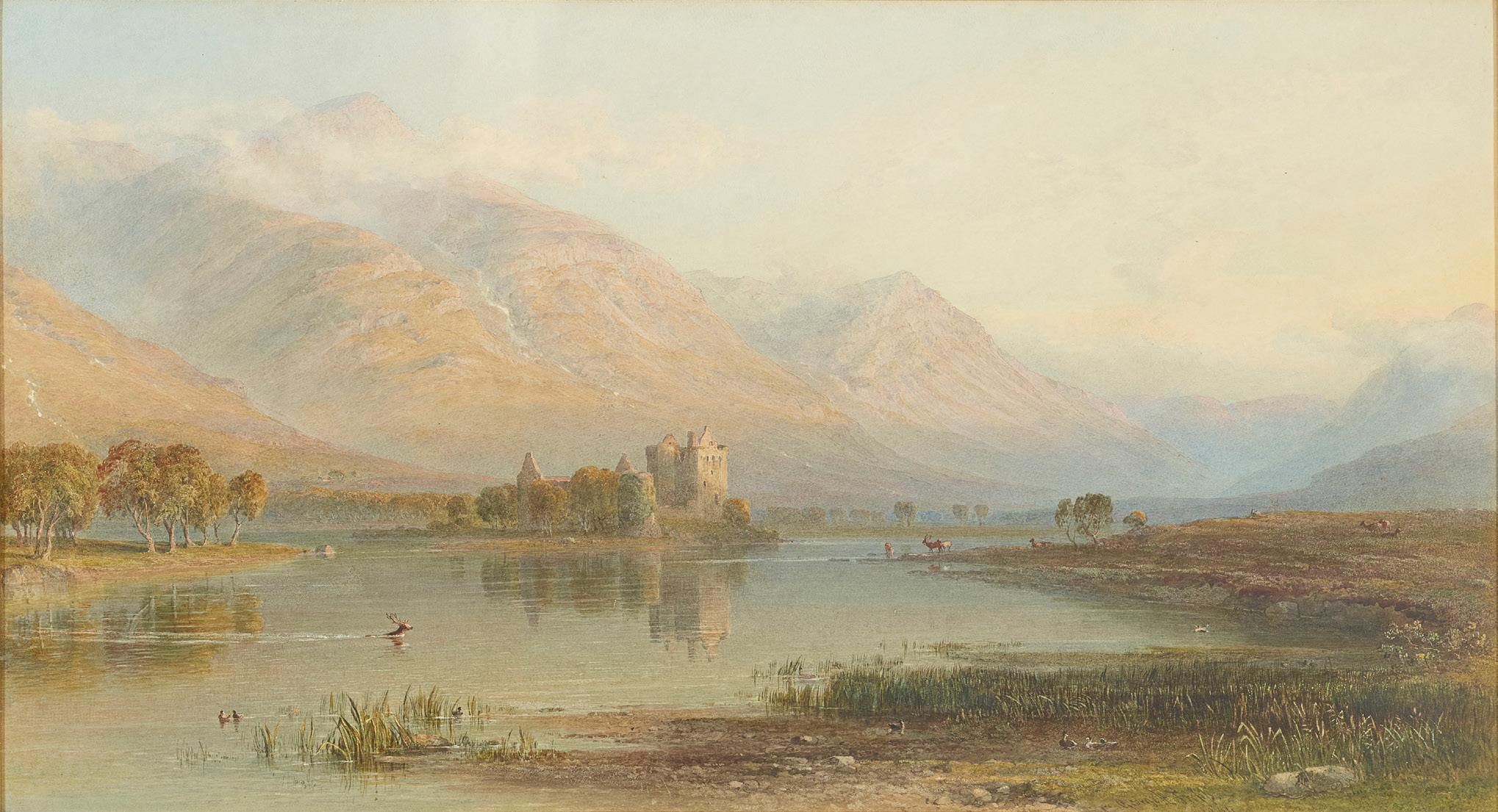
23
GEORGE ARTHUR FRIPP (BRITISH 1813-1896) KILCHURN CASTLE, LOCH AWE
Signed, watercolour
34.5cm x 62.5cm (13.5in x 24.5in)
£800-1,200
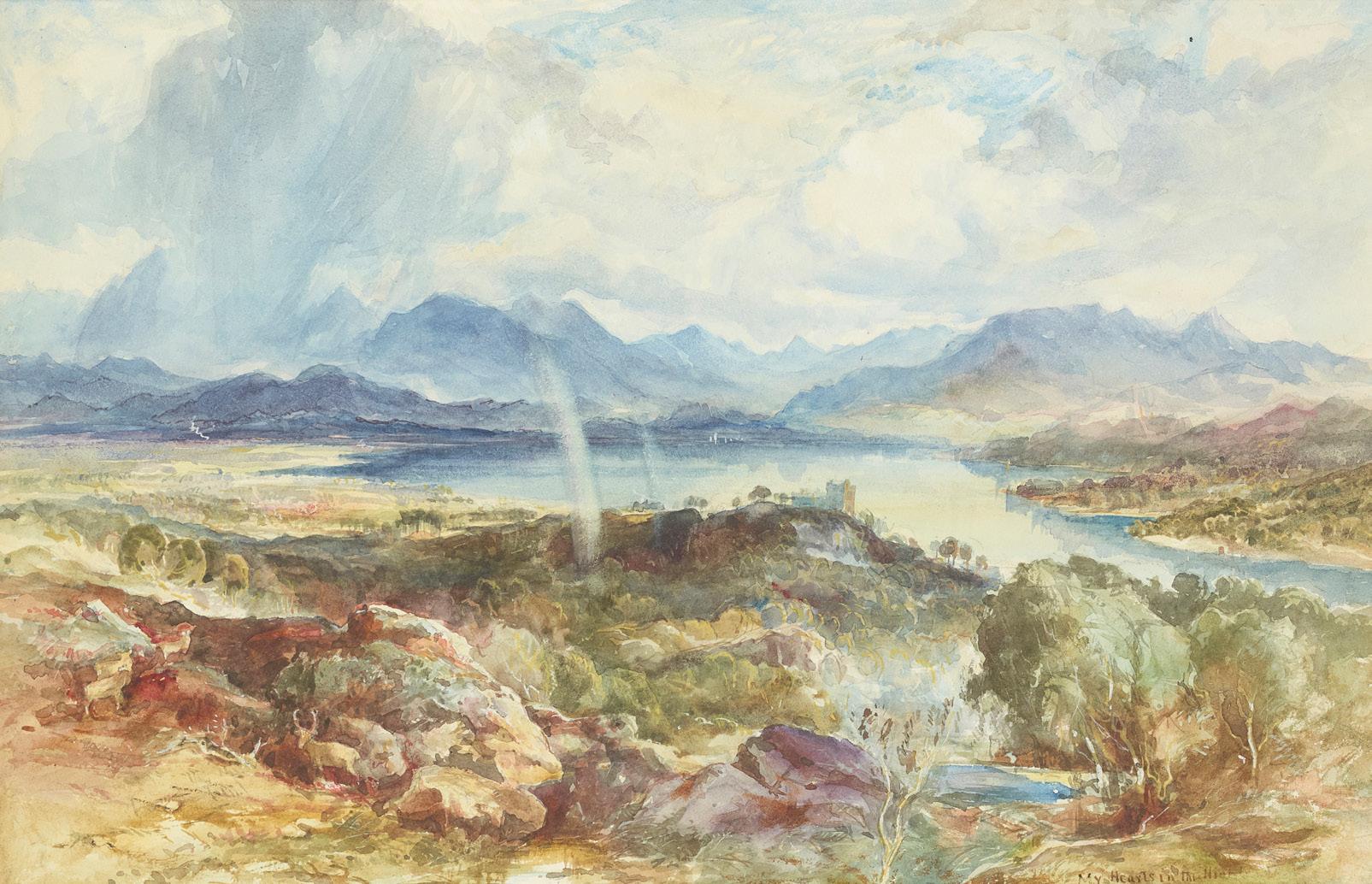
24
HORATIO MCCULLOCH
R.S.A. (SCOTTISH 1805-1867)
MY HEART IS IN THE HIGHLANDS
Inscribed with title, watercolour
33cm x 49cm (13in x 19.25in)
Provenance: Presented by Richard Edmiston, Esq., 1937. £600-800

Replete with sinuous lineation and compositional flair, Passing Day is a sensational example of David Forrester Wilson’s early Symbolist work, which earned the artist favour with generations of collectors – including none other than Andy Warhol.
While the precise meaning of Passing Day remains elusive, it might be interpreted as an allegory for the transition from day into night. On the banks of a woodland stream we find a languorous androgyne, possibly representing the ‘Day’, whose russet gown is in tumbling disarray. Their head tips back in a state of ecstasy, slumber - or death. Certainly, they appear to submit to the pallid figure shrouded in black who hovers in the air, possibly representing ‘Night’. The androgyne appears ready to be lifted out of the waking world below, where bright, gem-like wildflowers sprout along the riverbank, and borne into the shadowy world above, where the diminishing twilight transforms the trees and hills into dark indistinction. Between the two worlds, the sentinel heron looks on impassively.
Wilson was an acolyte of the eminent Belgian Symbolist Jean Delville, who had been his tutor at the Glasgow School of Art. Professor Delville encouraged his students to continue their studies on the continent, and accordingly in 1905 Wilson visited Belgium, Italy and France, as well as London. By the time Wilson returned to Scotland word of
his prodigious talent had spread, and he was invited by Fra Newbery, head of the Glasgow School of Art, to return to the School as a member of staff. By 1931 Wilson had been appointed Professor of Drawing and Painting, a role he maintained until his retirement from teaching in 1938.
Wilson was commissioned to execute a lunette for the banqueting hall of the Glasgow City Chambers in 1911, alongside other eminent Glasgow painters such as Sir John Lavery, E. A. Walton and George Henry. Wilson’s lunette, titled ‘Time and History’, remains one of his most important works. His Royal Scottish Academy obituary recorded that ‘his painting is characterised by refined drawing and colour and a strong sense of decoration. It is poetical in feeling which he often expressed through allegory. All his work is founded in the best historical traditions’.
When Andy Warhol’s estate was offered posthumously at Sotheby’s in 1988, several works by David Forrester Wilson emerged from Warhol’s personal collection. One particularly significant Symbolist composition went on to sell for $110,000, ten times its pre-sale estimate. Titled ‘The Wind’, the piece portrayed two girls struggling to lead a goat home as the wind pulls at their clothes and hair. Wilson’s unorthodox take on the pastoral idyll must have appealed to Warhol’s tastes, for the painting hung in the boardroom of ‘The Factory’ in New York, and was said to have been one of the Pop Artist’s favourites.

DAVID FORRESTER WILSON R.S.A. (SCOTTISH 1873-1950) PASSING DAY
Signed, oil on canvas
102cm x 102cm (40in x 40in)
Provenance: Presented by J. A. D. McKean, Esq., 1923.
£10,000-15,000
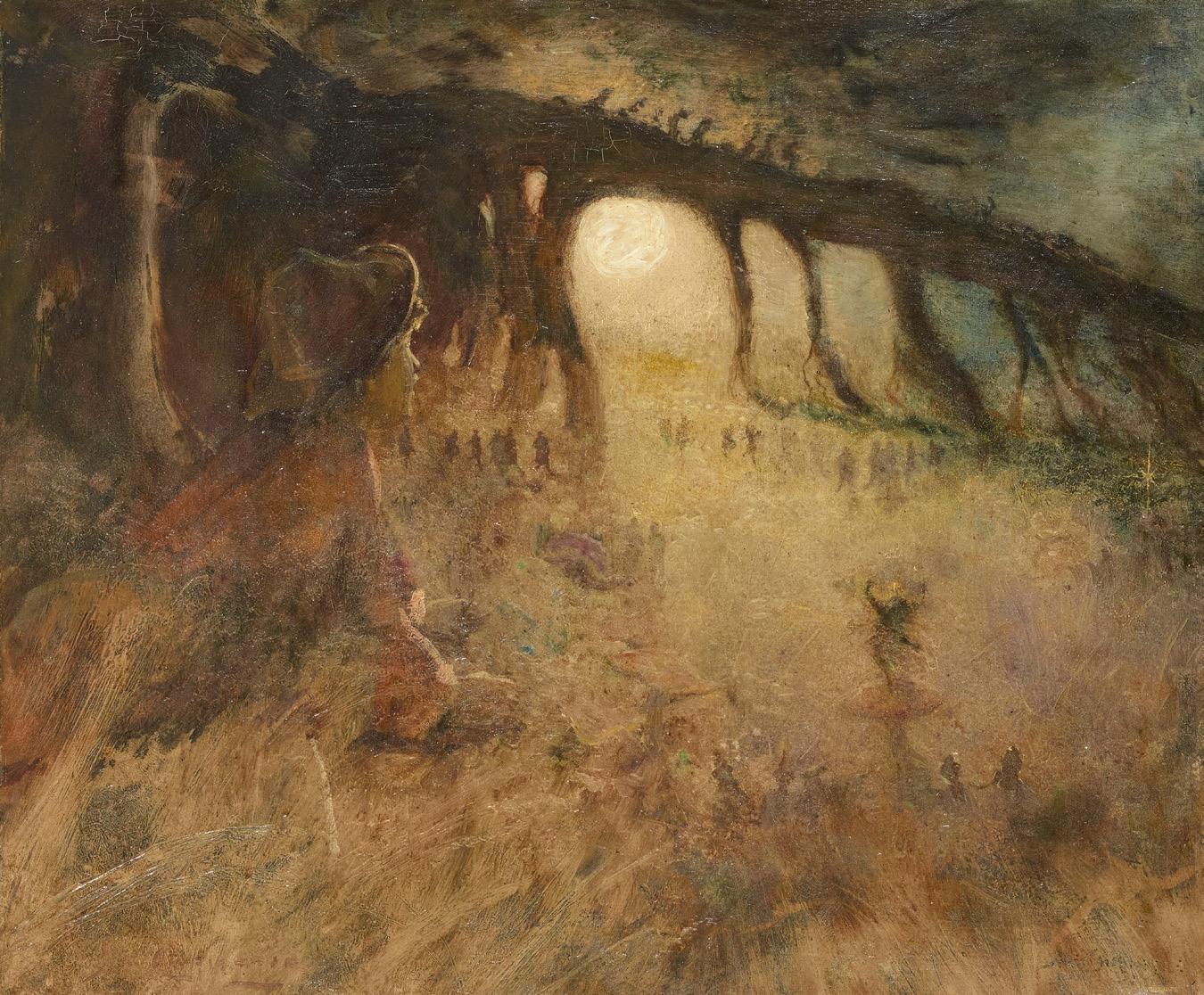

27
WILLIAM KENNEDY (SCOTTISH 1859-1918)
REVERIE
Signed, oil on canvas
41cm x 51cm (16in x 20in)
Provenance: Fulton Bequest, 1933.
£1,000-1,500
26
JAMES ELDER CHRISTIE (SCOTTISH 1847-1914) HALLOWE’EN
Signed, oil on canvas 51cm x 61cm (20in x 24in) £600-900
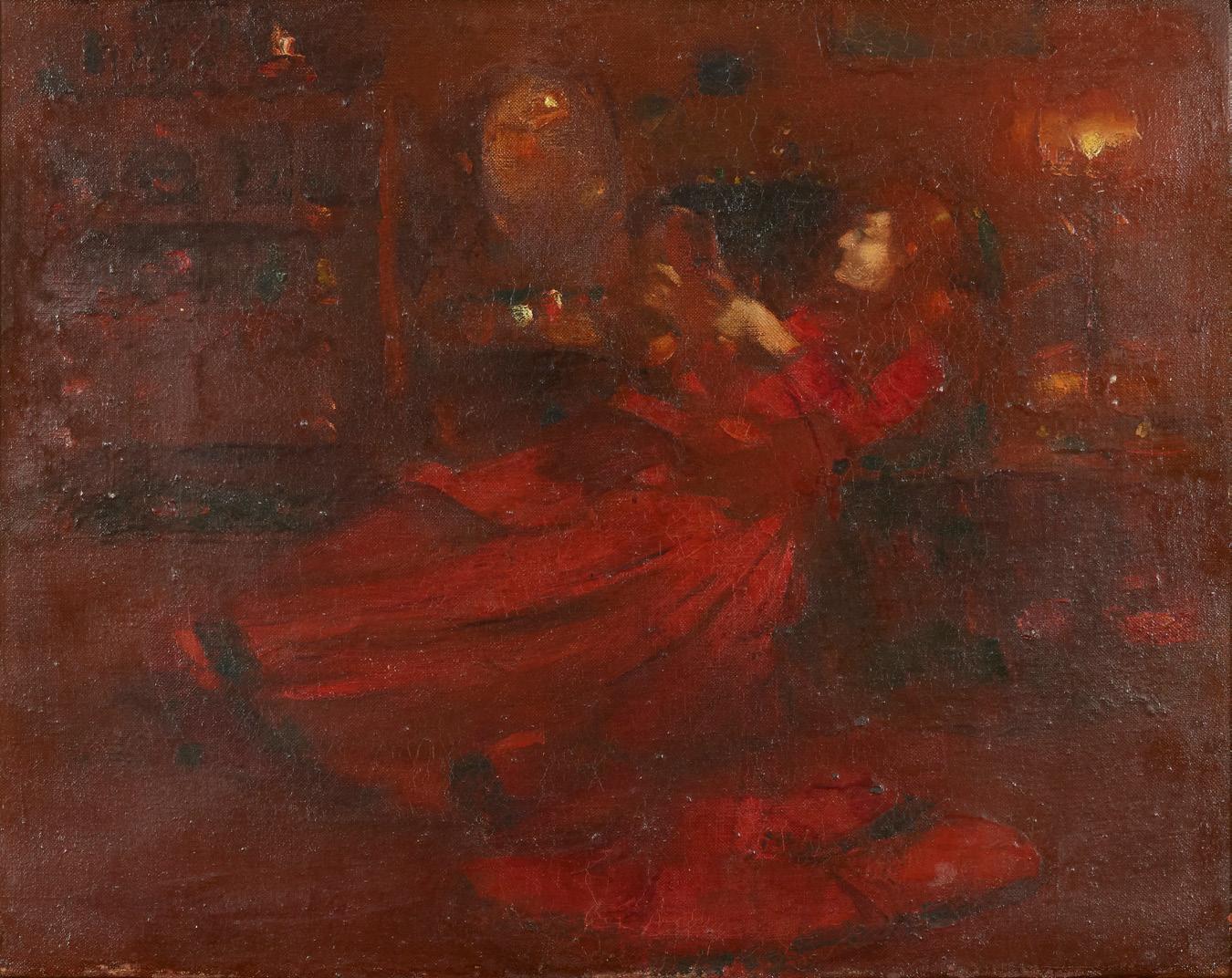

28
JAMES ELDER CHRISTIE (SCOTTISH 1847-1914)
SUFFER LITTLE CHILDREN TO COME UNTO ME
Signed, oil on canvas
198cm x 268cm (78in x 105.5in), unframed
Provenance: Presented by Cranston’s Tea Rooms, Ltd., 1938.
£3,000-5,000

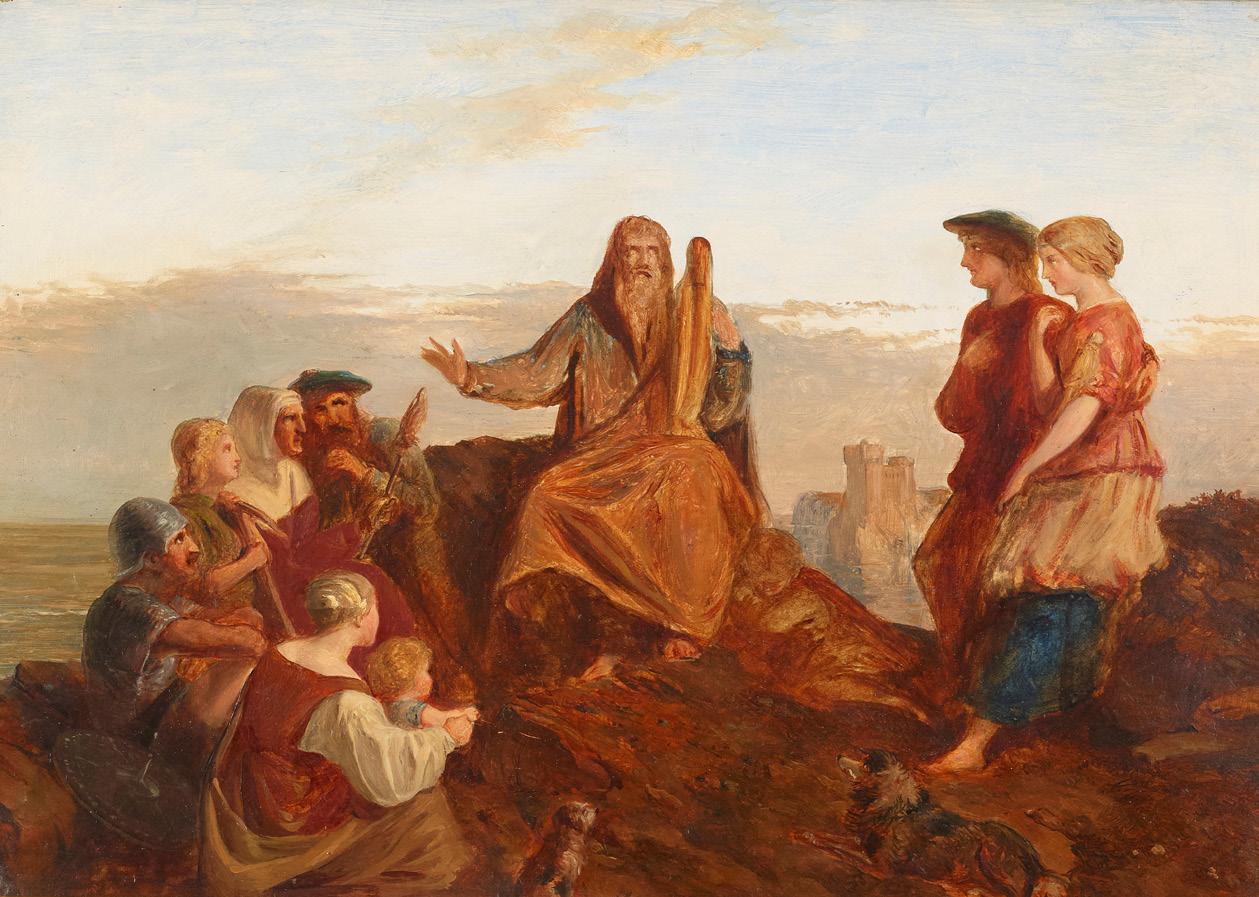
29
SIR WILLIAM ALLAN R.A., P.R.S.A. (SCOTTISH 1782-1850) BLIND HARRY RECITING THE DEEDS OF WALLACE
Oil on board
26cm x 37cm (10.25in x 14.5in)
Provenance: Presented by Mrs C. J. Allan, 1913.
Exhibited: City of Edinburgh Museum and Galleries, William Allan: Artist Adventurer, 30 June-6 October 2001, cat.no.30, illustrated in catalogue
Note: This painting is believed to be a sketch for a larger composition.
£400-600
30
JAMES ELDER CHRISTIE (SCOTTISH 1847-1914)
TAM O’SHANTER
Signed, oil on canvas
30.5cm x 41cm (12in x 16in)
Provenance: Presented by Edward Cochran, Esq, 1919.
£1,200-1,800
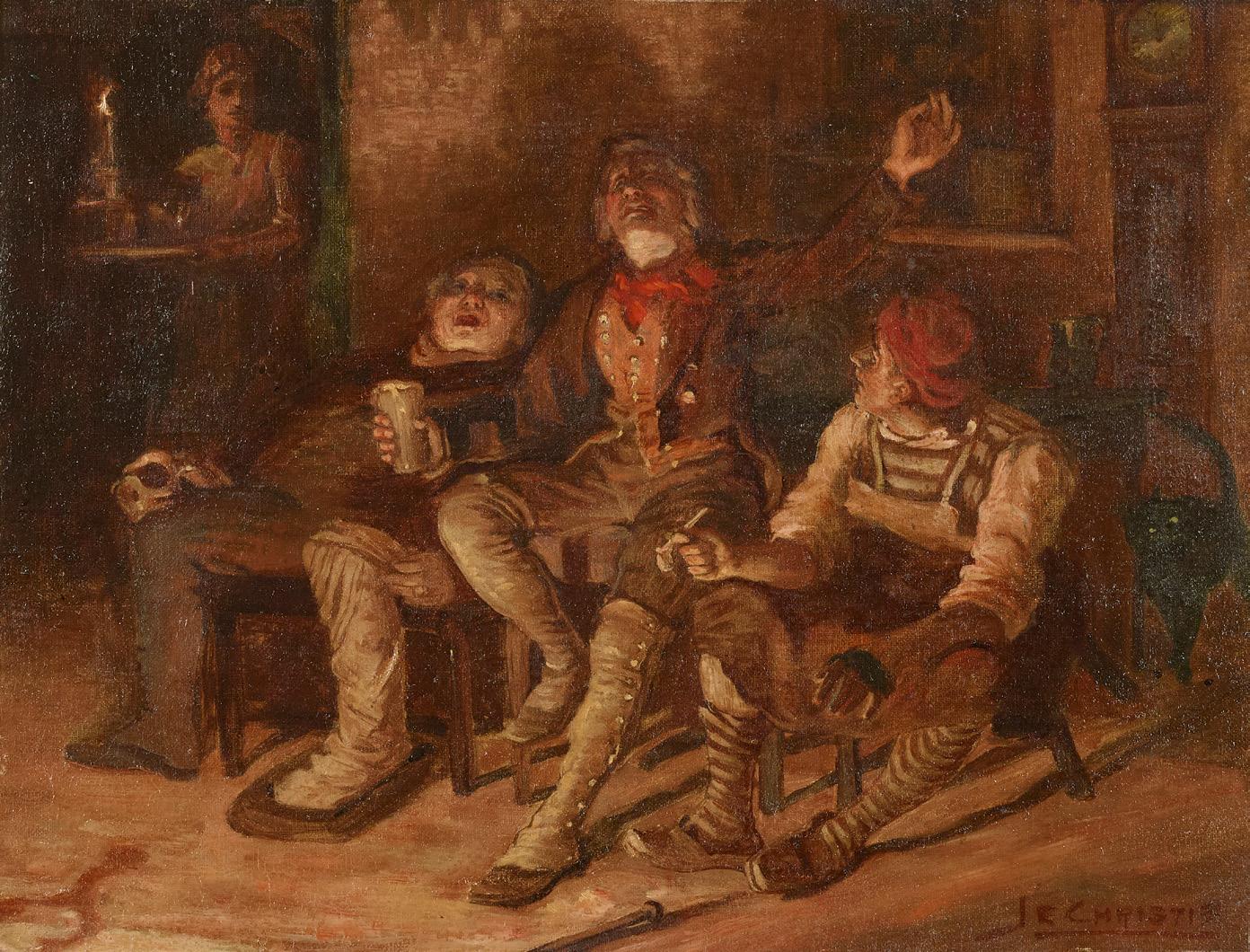

31

FRANK MURA (AMERICAN 1861-C.1930) A BRITTANY FISH MARKET
Signed, oil on canvas
105cm x 166.5cm (41.5in x 65.5in)
Provenance: Presented by James Begg, Esq., 1926. £1,000-2,000
32
ADEMOLLO (ITALIAN 1825-1911) GARIBALDI NEAR PALERMO
Signed and dated ‘70, oil on canvas
97cm x 141cm (38.25in x 55.5in)
Provenance: Presented by Stuart M. Jack, Esq., 1937. £1,000-1,500
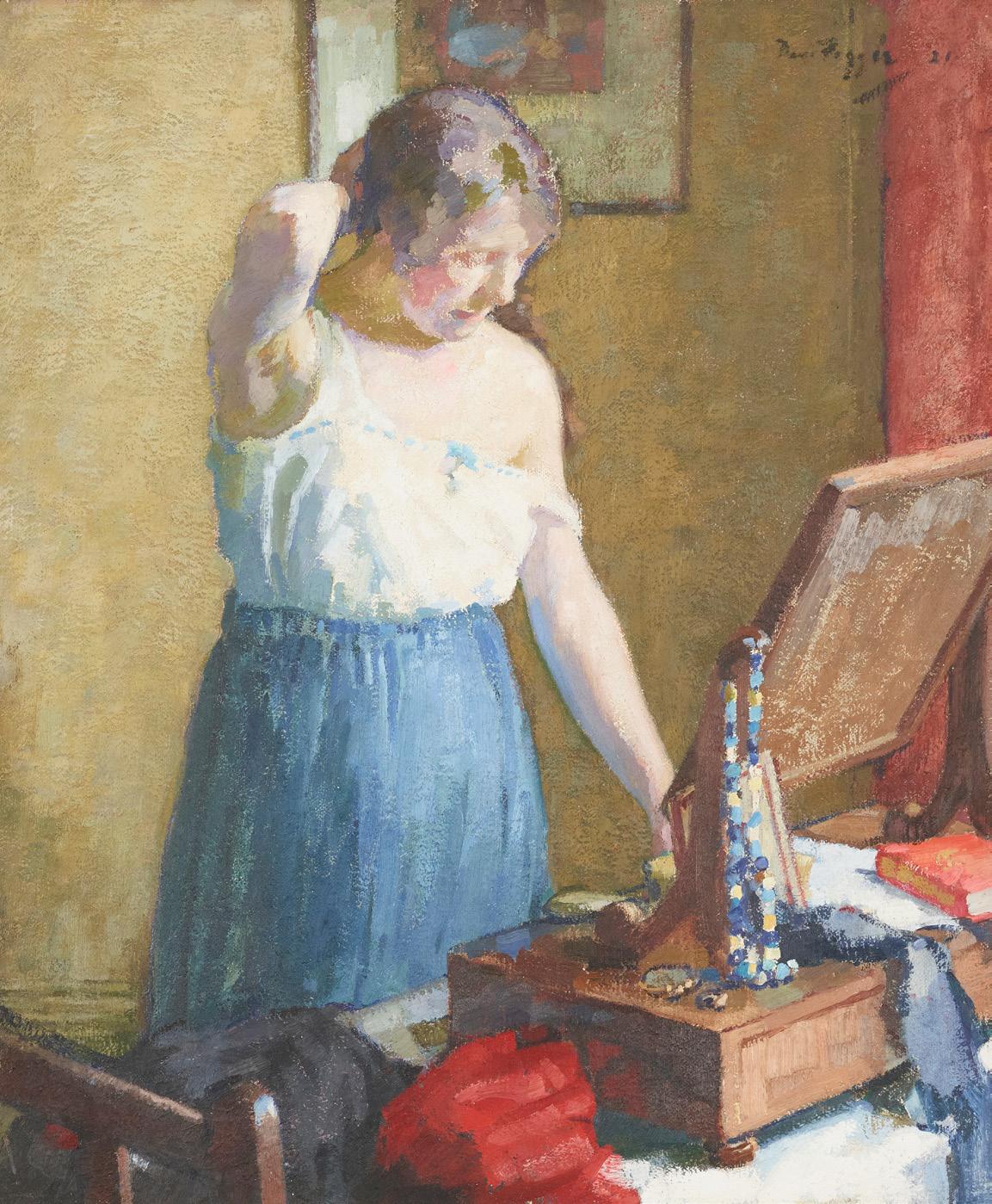
DAVID FOGGIE R.S.A., R.S.W.
(SCOTTISH 1878-1948) MOTHER AND CHILD
Signed, oil on canvas
81cm x 71cm (32in x 28in)
Provenance: Purchased by Paisley Art Institute, 1926.
£1,000-1,500 33
DAVID FOGGIE R.S.A., R.S.W. (SCOTTISH 1878-1948) THE DRESSING TABLE
Signed and dated ‘21, oil on canvas
61cm x 51cm (24in x 20in)
Provenance: Presented by Mrs John S. Allan, 1937.
£1,000-1,500


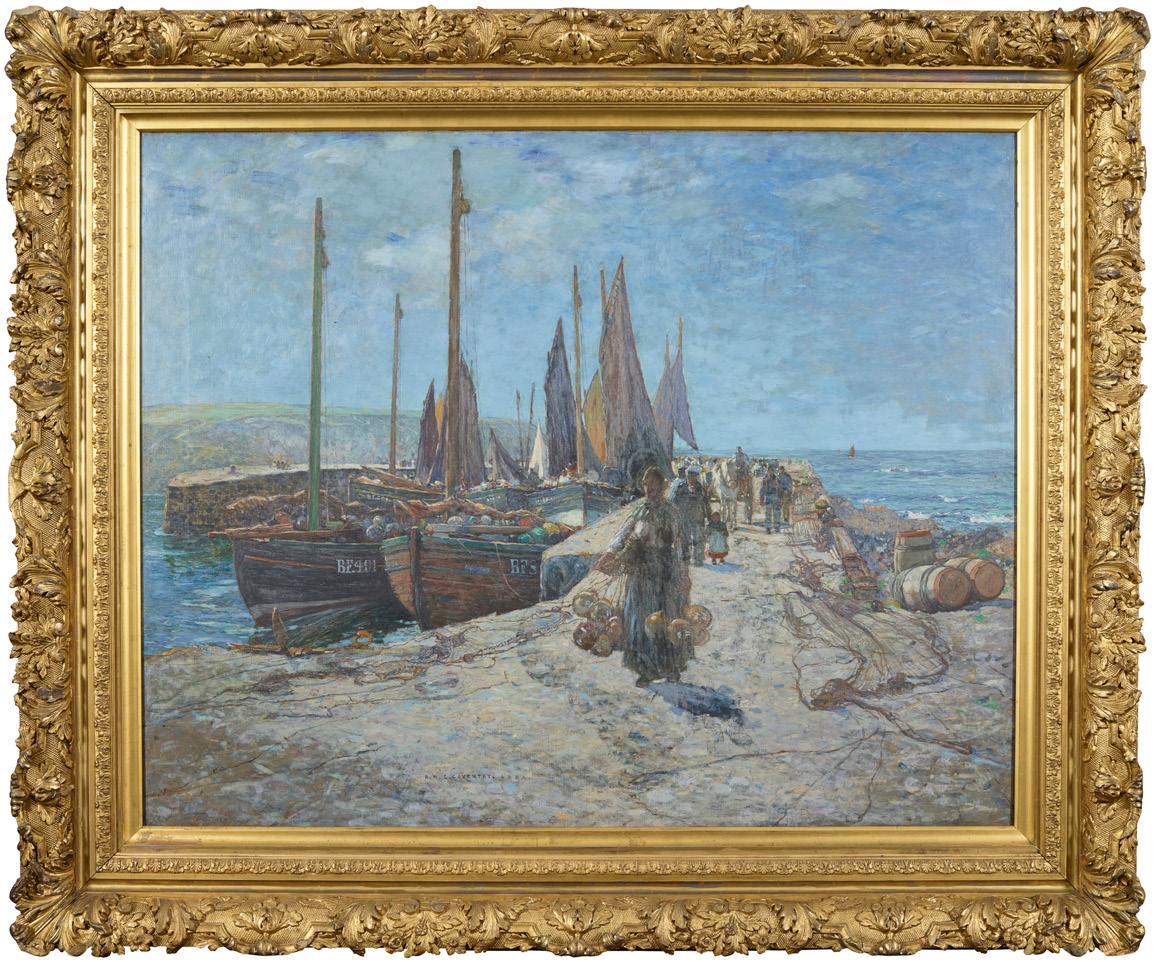
MCGOWN COVENTRY A.R.S.A., R.S.W. (SCOTTISH 1855-1941)
PORTSOY HARBOUR
Signed, oil on canvas
101.5cm x 127cm (40in x 50in)
Provenance: Presented by Sir John Anderson, 1940. £4,000-6,000
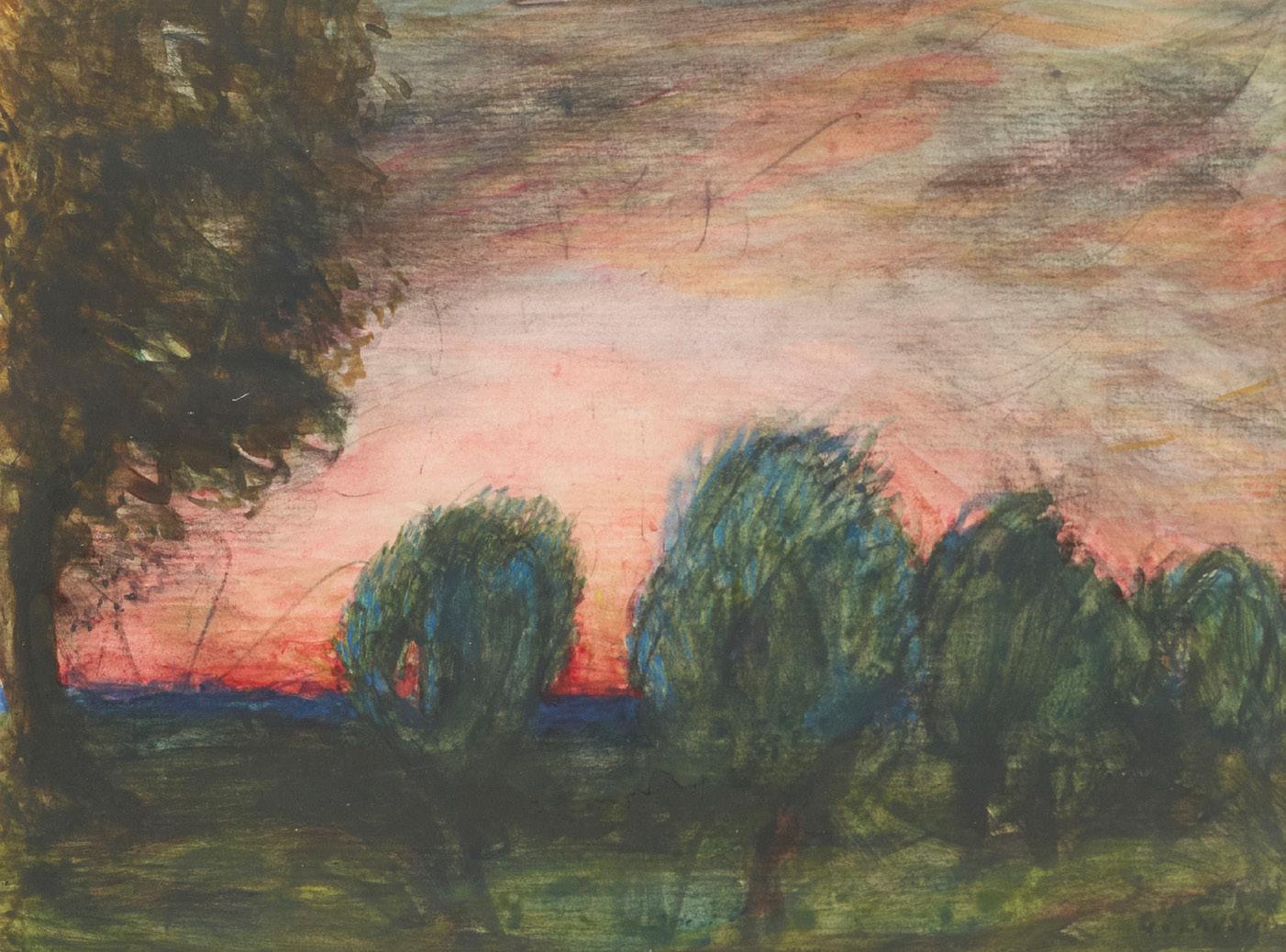
SIR GEORGE CLAUSEN
R.A., R.W.S. (BRITISH 1852-1944) A RAINY SUNSET
Signed, mixed media
16cm x 21.5cm (6.25in x 8.5in)
Provenance: The Leicester Galleries, London; Fulton Bequest, 1933.
£600-800
37
SIR GEORGE CLAUSEN R.A., R.W.S. (BRITISH 1852-1944) COTTAGES AT NIGHT
Signed, mixed media
12.5cm x 19cm (5in x 7.5in)
Provenance: The Leicester Galleries, London.
£600-800

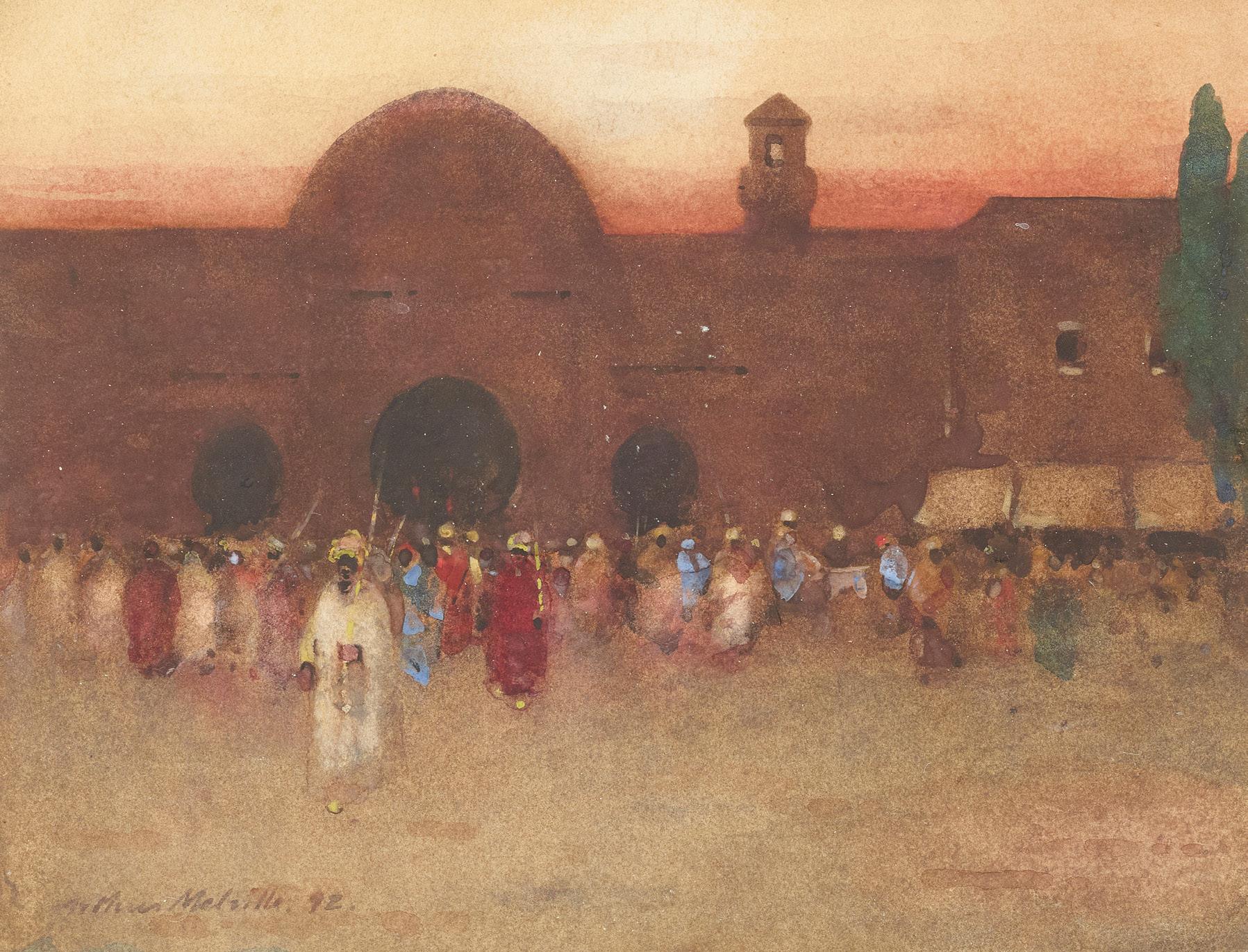
38
ARTHUR MELVILLE A.R.S.A., R.S.W., A.R.S. (SCOTTISH 1855-1904)
THE MOSQUE, EVENING
Signed and dated ‘92, watercolour 18cm x 23cm (7in x 9in)
Provenance: Fulton Bequest, 1933. £5,000-8,000
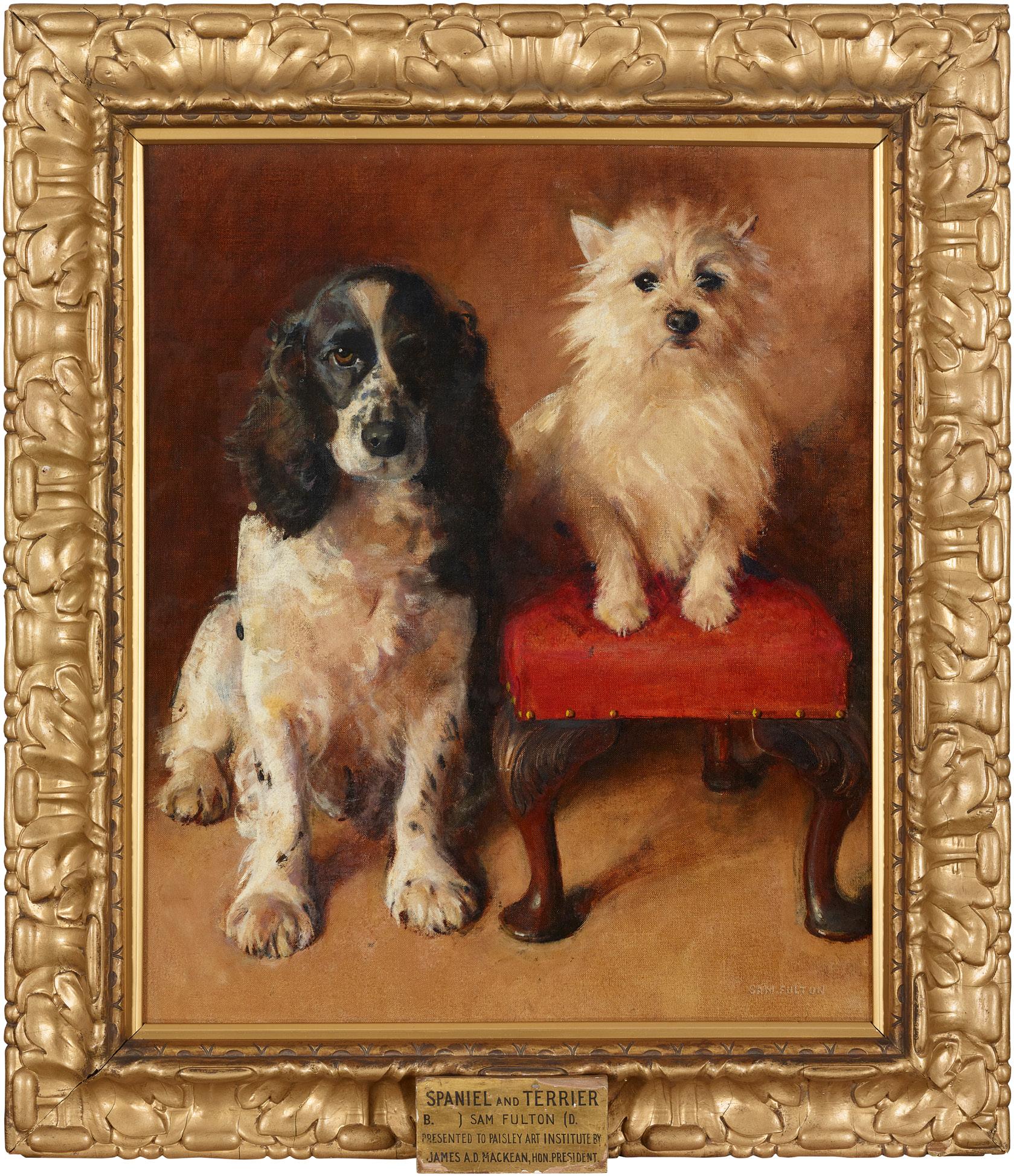

39
SAM FULTON (SCOTTISH 1855-1941)
SPANIEL AND TERRIER
Signed, oil on canvas
61cm x 51cm (24in x 20in)
Provenance: Presented by J. A. D. McKean, Esq., 1931.
£3,000-5,000
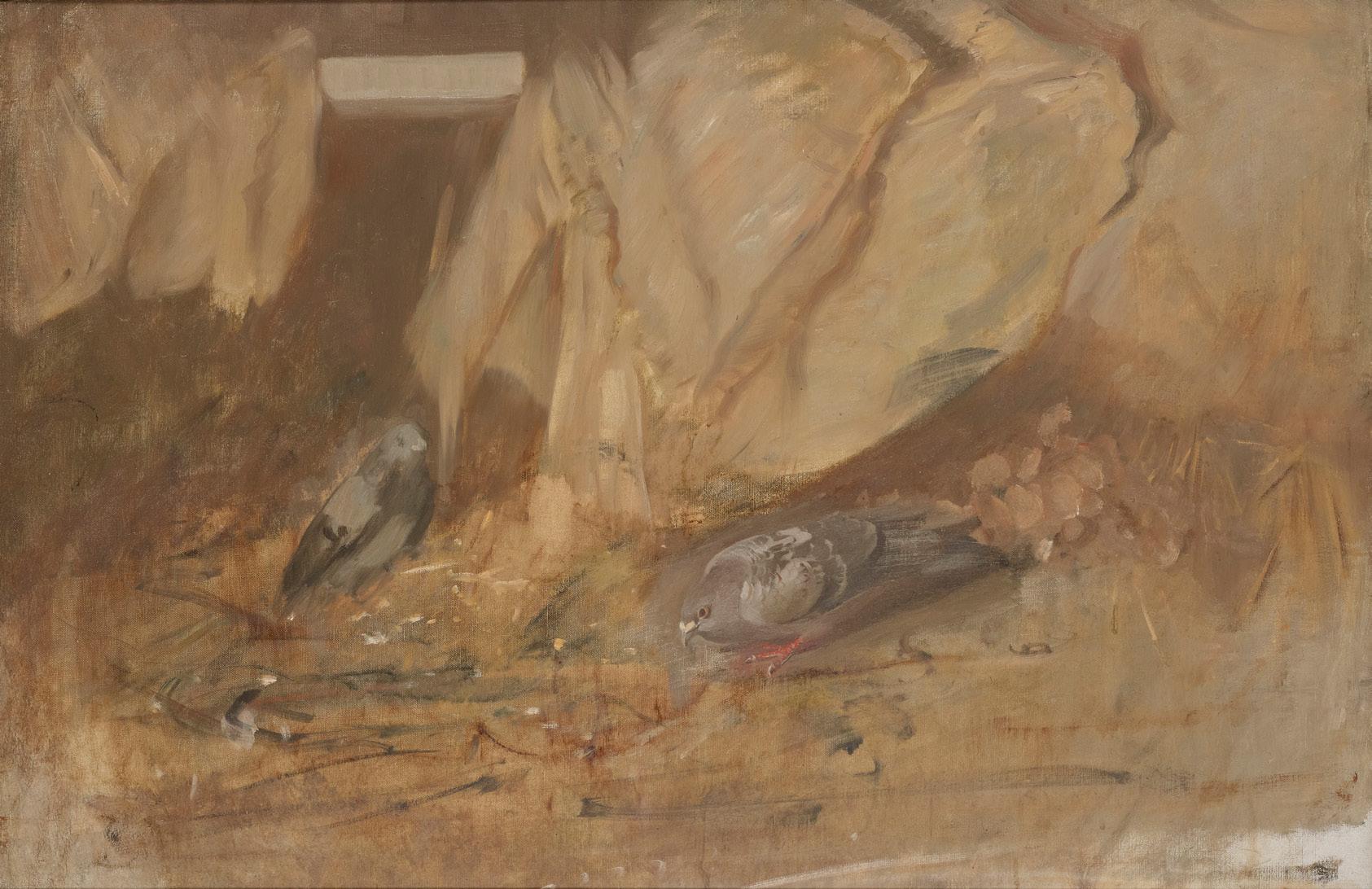
40 JAMES TORRANCE (SCOTTISH 1859-1916)
THE GLEANERS
Oil on canvas
61cm x 91cm (24in x 36in)
Provenance: Presented by the Artist’s wife, Louise Ellen Perman, 1917.
£600-800
41 §
JOHN MURRAY THOMSON R.S.A., R.S.W., S.S.A. (SCOTTISH 1885-1974) GOAT AND KIDS
Signed, oil on canvas
61cm x 91cm (24in x 36in)
Provenance: Purchased by Paisley Art Institute, 1936.
£600-900
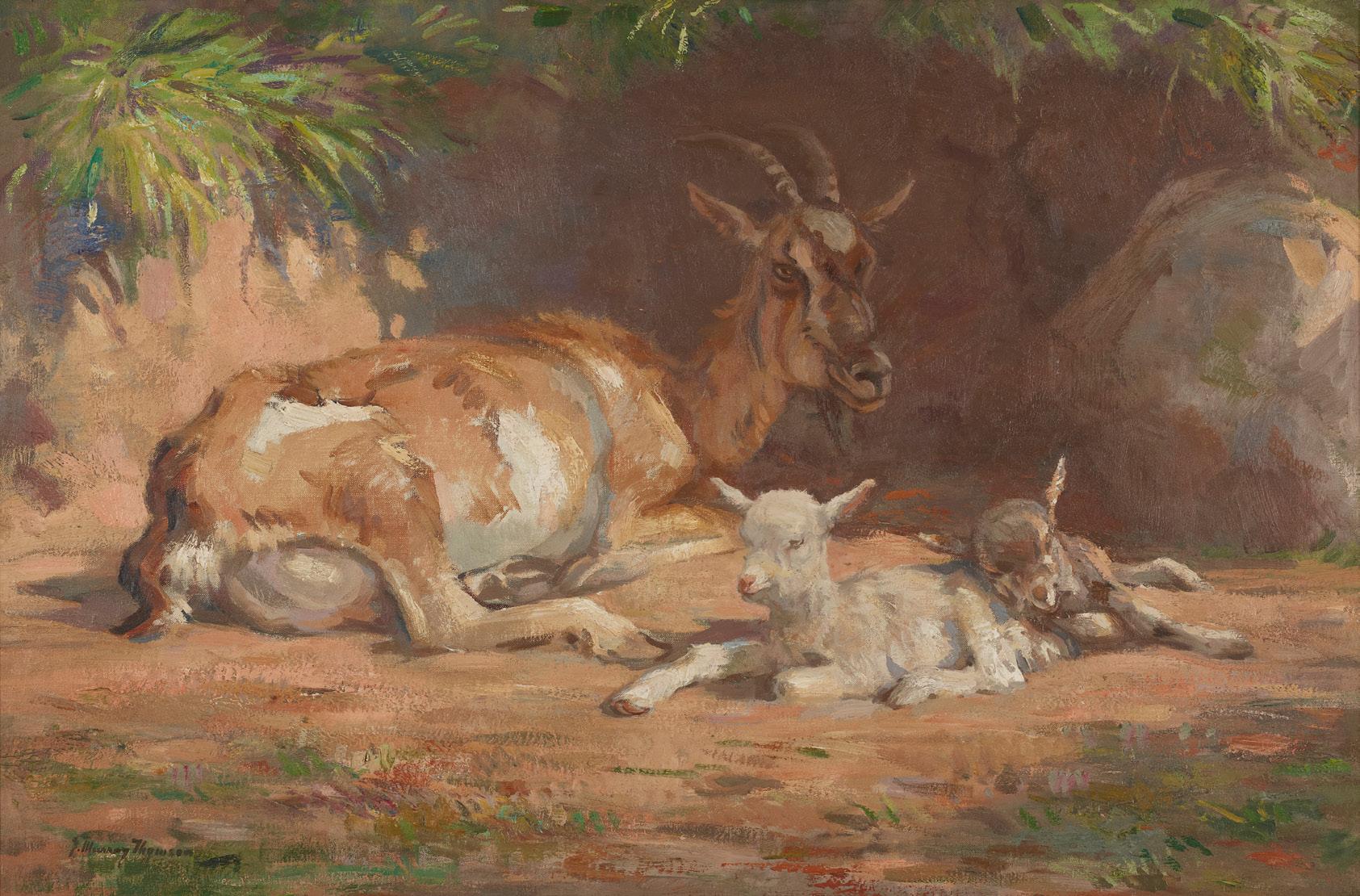

42
SIR JAMES GUTHRIE P.R.S.A., H.R.A., R.S.W., L.L.D. (SCOTTISH 1859-1930) FIRELIGHT REFLECTIONS
Signed and dated 1889, pastel on brown paper 61cm x 72cm (24in x 28.25in)
Provenance: Fulton Bequest, 1933. £10,000-15,000
Exhibited: London, Grosvenor Gallery, Third Pastel Exhibition 1890, no.172, where titled ‘Firelight’; Glasgow, Lawrie’s Gallery, A Series of Fifty Pastels by Mr James Guthrie, March 1891 (?); Palace of the Arts, Empire Exhibition, Scotland, Bellahouston Park, 1938, no.552, repr. b/w p.42; Glasgow and London, The Fine Art Society, Guthrie and the Scottish Realists, 1981-82, no.35, where titled ‘Firelight Reflections’;
London, Barbican Art Gallery, Impressionism in Britain, 1995, no.91; London, Tate Gallery, Degas, Sickert and Toulouse-Lautrec – London and Paris, 18701910, 2006, no.31; Glasgow, Kelvingrove Art Gallery & Museum, Pioneering Painters - The Glasgow Boys, 2010, no.122 (repr. in catalogue); Assen, Holland, Drents Museum, The Glasgow Boys - Schots Impressionisme, 20156, unnumbered, (repr. p.33 in catalogue).
Literature: ‘Our London Correspondence’, The Glasgow Herald, 17 October 1890, p.7;
‘From Private Correspondence’, The Scotsman, 17 October 1890, p.5;
‘Pastels at the Grosvenor’, The Echo, 21 October 1890, p.1; ‘Pastels at the Grosvenor Gallery’, Illustrated London News, 25 October 1890, p.526; Caw, James L., Sir James Guthrie, PRSE, HRA, RSW, LLD, MacMillan & Co., London, 1932, p.234, where titled ‘Firelight’); Billcliffe, Roger, The Glasgow Boys, 1985, Frances Lincoln, London, 2008, p.256 (repr. fig 272).
With the return of British students from Paris in the mid1880s, the debates about Impressionism intensified. Young artists had observed the popularity of old media such as coloured chalks and soft pastels in the hinterland between drawing and painting. Fixed and layered, the drawing medium could be worked to an intensity that almost rivalled oil paint on canvas. Painters such as Jean-François Millet, Edouard Manet, Edgar Degas, Jacques-Emile Blanche, JeanFrançois Raffaelli, and Léon Lhermitte and many others were enamoured of the effects to be achieved by their use and such was the enthusiasm in Britain that Sir Coutts Lindsay, listening to young painters like George Clausen, established an annual pastel exhibition at his cherished Grosvenor Gallery in Bond Street in 1888.¹ In Scotland, by this date, Arthur Melville, John Lavery, Joseph Crawhall, Thomas Millie Dow and Edward Arthur Walton had all begun to experiment with the ‘new’ medium and so too did Guthrie. Indeed, in the latter’s case it became a principal means of expression, outside the portrait practice he was currently establishing. Writing at this time, Robert Macaulay Stevenson noted that, …especially of late, some of his [Guthrie’s] happiest efforts have been in pastel … a material in which he worked with every evidence of natural aptitude … long before the recent pastel fad became fashionable in the art world.²
James L Caw, the artist’s biographer places Guthrie’s pastels into two distinct groups – those of 1888, produced at Cambuskenneth, generally depicting landscapes, with two interiors of a ‘rope walk’, and those of 1890, devoted to fieldworkers, railway navvies and to the pursuits of the Helensburgh well-to-do. The most daring of these were interiors, worked in soft pastel rather than hard chalk, and of these, the present example was shown at the third Grosvenor Gallery Pastel Exhibition in October 1890, an exhibition notable for fine displays of the work of Blanche and that of the Belgian painter Fernand Khnopff.³ Caw distinguished between the two groups by hinting at Guthrie’s growing confidence, stating that the second group was ‘more abstract in conception’, but ‘no less direct’.⁴ He informs us that Guthrie’s interiors were all done at Eastwood, the house of John G Whyte, a Helensburgh dentist and amateur watercolourist, who was a close friend of Guthrie and his mother ⁵. Indications of the Whytes’ advanced taste are confirmed in the fan held by one of the figures and the octagonal oriental ‘Kursee’ side-table on the left of the composition. The dentist’s daughter Christine is likely to be one of the models for Firelight.⁶
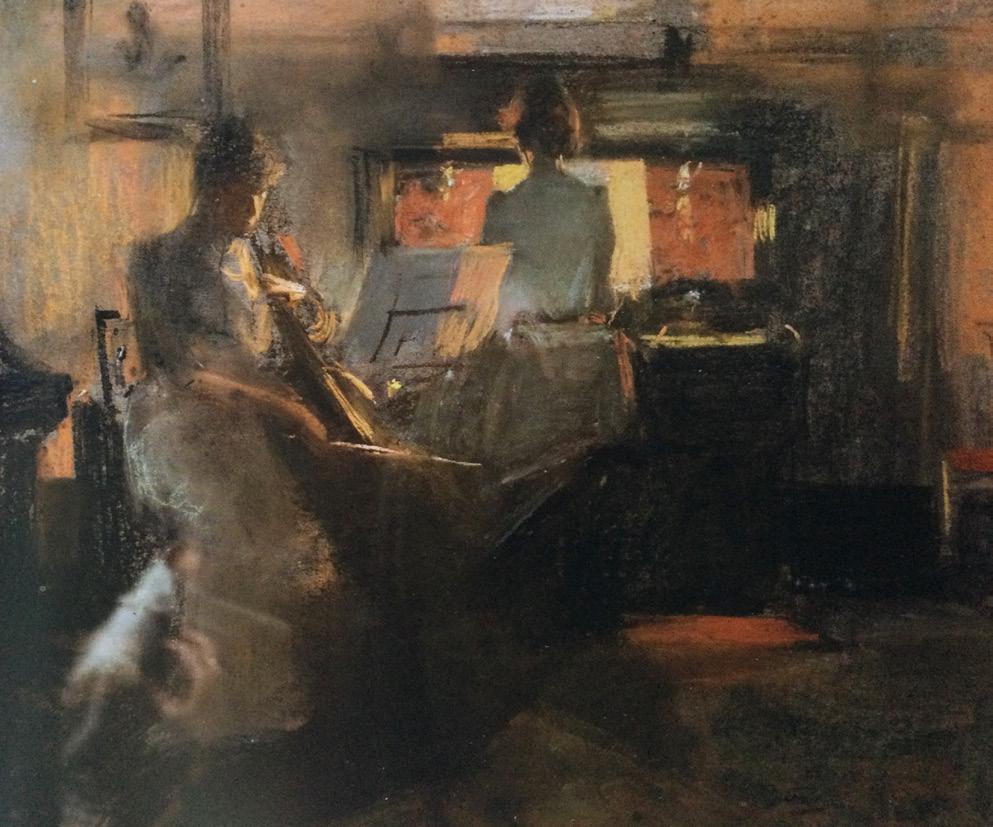
The Glasgow Herald and The Scotsman praised Firelight for the ‘excellent placing of the figures’ and as a ‘beautiful and harmonious piece of tone’ when reviewing the exhibition, while The Illustrated London News, describing its author as a ‘distinguished leader of the Scotch Impressionists’, placed this ‘striking bit of work’ above that of Guthrie’s friend, Arthur Melville. Following the closure of the Grosvenor Gallery show Firelight joined Guthrie’s solo exhibition of pastels, and works such as Candlelight [illustrated above], unsold in Dowdeswell’s gallery in December 1890 when it transferred to Thomas Lawrie & Son’s gallery in Glasgow, the following March.
Although supporters of the avant-garde, the so-called, ‘new critics’, George Moore, DS MacColl and RAM Stevenson, had supported Guthrie’s pastel enterprise in London, it had been a commercial failure. Hampered by being staged in ‘part of a passage partitioned off to make a room’, the works were displayed in cramped conditions alongside a Newlyn School exhibition.⁷ There was no catalogue, no titles given to
James Guthrie, Candlelight, 1890, pastel, 42.5 x 51.4 cms, Private Collection
1
2 Stevenson, c. 1891, as in note 12.
3 When the exhibition opened Lindsay, now loaded with debt, indicated that he was unable to continue supporting his gallery and it would close at the end of the year. A group of exhibitors quickly formed a Pastel Society, but although revived at the end of the decade, this too failed initially to secure backing from the art trade. My distinction between hard and soft pastels can also be applied to the Guthrie oeuvre, where some, generally earlier examples, are essentially coloured, hatched drawings,
individual pieces, and to the artist’s dismay, no works were sold.⁸ Dowdeswell confessed to Caw that Guthrie had been in too much of a hurry and ‘… we can’t afford to go on having artistic successes like that’.⁹ The situation was reversed in March when everything was sold in Glasgow. Christine Whyte, who had promised to buy an unsold work, was left with nothing.¹⁰
Although Guthrie produced a few pastels after the Glasgow show, the demands of his portrait practice were calling.¹¹
The impact of the medium is however evident in the vivid coloration of Midsummer, 1892, his Royal Scottish Academy Diploma painting, while the intimisme of works like Firelight anticipates that of Edouard Vuillard. However, of all the approval of his peers, Guthrie is likely to have appreciated that of Sidney Starr, one of the most advanced Whistler followers, showing at the New English Art Club. Writing in The Whirlwind, Starr commented on some of Lindsay’s ‘hopelessly vulgar’ selections for the Grosvenor Gallery, before turning to Guthrie’s keen sensitivity to ‘the right use of his material’, concluding with the assessment,
That he is an artist, in an age of much incompetent manufacture, is evident from his delight in drawing, his sensitiveness to colour, his perfect pleasure in recording that which seems to him beautiful, without thought for those who should or should not be of like conviction. ¹²
We are grateful to Professor Kenneth McConkey for writing this catalogue entry.
while in the present example, blocks of tone are smoothed into the surface using pastels of a softer kind. As in Crawhall’s work, Guthrie is likely to have initially placed such areas using the shaft of the pastel, rather than its point. The largest group of pastels assembled by Roger Billcliffe in the last fifty years (23 in all), enabled the flexibility of Guthrie’s application of the medium to be demonstrated. It showed not only changes of handling and material, but the use of different supports (papers) and hard and soft pastels.
4 Caw 1932, pp. 233-35, lists 15 in the first group and 45 in the second; finding only six thereafter.
5 For Whyte, see Ailsa Tanner, Helensburgh and The Glasgow Boys, 1972 (exhibition catalogue, Helensburgh and District Art Club), pp. 6 & 24.
6 Caw 1932, p. 56.
7 Sidney Starr, ‘Mr Guthrie’s Pastels’, The Whirlwind, 20 December 1890, p. 180.
8 These were a bugbear for The Illustrated London News, but not for the ‘new critics.’
9 Caw 1932, p. 57.
10 Ibid.
11 Caw 1932, p. 235 lists four between 1892 and 1894, and two in 1927.
12 Starr 1890, as note 21.
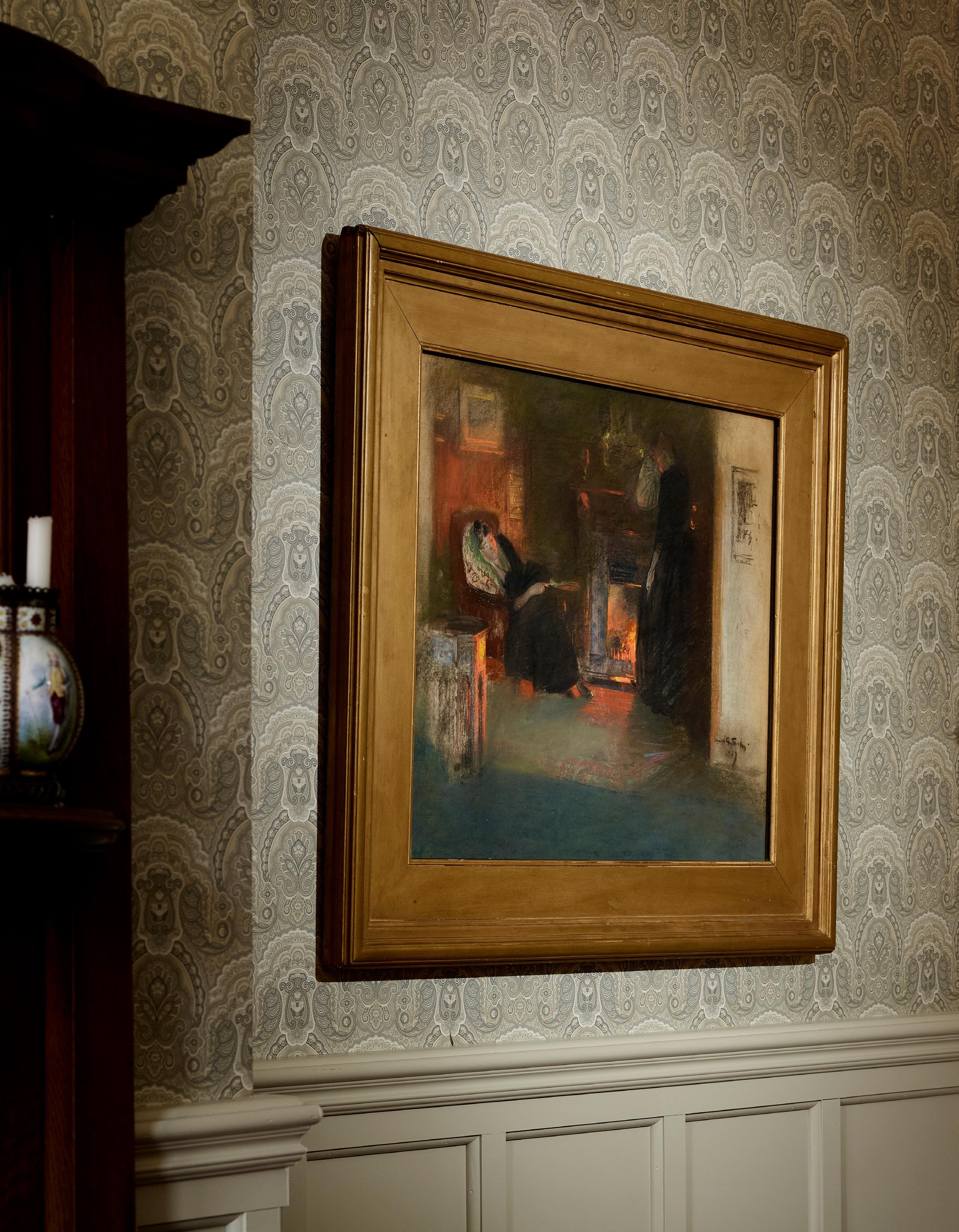
P.R.S.A., H.R.A., R.S.W., L.L.D (SCOTTISH 1859-1930) THE STONEBREAKER
Signed and dated ‘95, oil on canvas 160cm x 106cm (63in x 41.75in)
Provenance: Sir Frederick C Gardiner LLD, by 1924; Presented by James H Brown to Paisley Art Institute, 1948. Exhibited: Edinburgh, Royal Scottish Academy, 1924 no.141; Glasgow, Royal Glasgow Institute of the Fine Arts, 1926, no. 107, lent by Sir Frederick C Gardiner, KBE, LLD; Newcastle Polytechnic Art Gallery, Peasantries, 1981-82, no. 58 (cover repr. in catalogue; p. 59, entry by Kenneth McConkey) and tour to Sheffield, Paisley and Aberdeen Art Galleries. Literature: Caw, James L., Sir James Guthrie, PRSE, HRA, RSW, LLD, MacMillan & Co., London, 1932, pp.43, 215 & 230; Bilcliffe, Roger, The Glasgow Boys, Frances Lincoln, London, 2008, pp.169 & 171 repr.;
A Paisley Legacy: The Paisley Art Institute Collection, Centenaries Catalogue, Paisley, 2015, p.46 repr.
£70,000-100,000



Courbet, The
On 8 October 1931 Sir John Lavery rose to his feet at the opening of the Sir James Guthrie Memorial Exhibition in Kelvingrove Art Gallery to pay tribute to his old friend who had died in the previous Autumn. Casting his mind back to the days when Guthrie was one of the guiding spirits among the Glasgow Boys, Lavery ‘doubted if there existed half-a-dozen of Sir James’s pictures that he didn’t struggle over to the extent of re-painting again and again after they were adjudged to be complete’.1 Guthrie, wracked with self-doubt in his early years, was a perfectionist who failed to recognize perfection.
When he, Lavery, Melville, Walton and Macaulay Stevenson were together like ‘a brotherhood of the early Christians’, Guthrie would embark on a large canvas – Fieldworkers Sheltering from a Shower, for instance, begun at Cockburnspath in 1884 - only to abandon it. Then, having managed to complete In the Orchard 1885-86 (Glasgow Museums/National Gallery of Scotland) he would embark upon the equally ambitious depiction of a wayside conversation between a stonebreaker and a farmhand riding a white horse. Begun at Kirkcudbright in 1886, this was also never resolved at the time. In 1923, in his mid-sixties, he removed the section containing the horse and completed the present monumental Stonebreaker standing at rest, straightening his back and flexing his neck muscles.2
For many years this work has puzzled historians in its apparent references to contemporary French Realism and Naturalism. A specific relationship has been proposed to Gustave Courbet’s iconic Stone Breakers of 1849. [illustrated top left; destroyed]
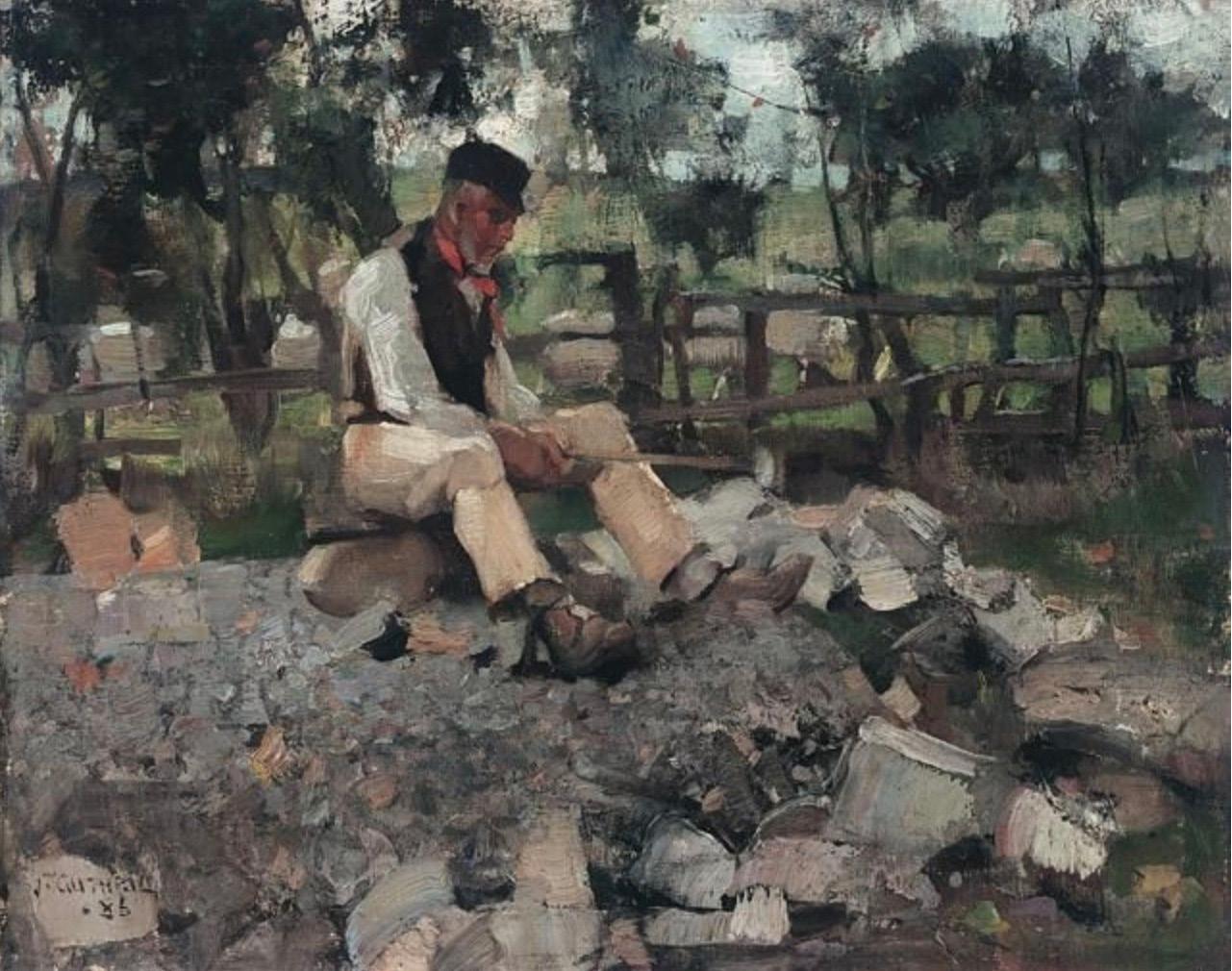
London
Although evidence for a possible visit to Paris in 1882 during the posthumous Courbet Retrospective Exhibition at the Ecole des Beaux Arts may never be completely confirmed, it is clear that Guthrie and his Glasgow contemporaries were profoundly influenced by recent developments that brought peasant subject matter back into focus in France and Britain in the 1880s, and for this they looked to contemporaries such as Jules Bastien-Lepage and George Clausen. Breadth of handling and square brushwork, modified in the present canvas, is obvious in the small version of The Stonebreaker, also painted at this time, while it is possible that both were painted in the vicinity of Kirkcudbright, on St Mary’s Isle, the long peninsula that stretches due south of the town towards the Solway Firth. [illustrated top right]
However, of the works of this year, there can be no doubt that the present monumental Stonebreaker is the most formidable. It carries a message that, to some limited extent, equates to Courbet’s programme. The motto adopted for the new Glasgow School by Macaulay Stevenson – ‘Progress and Poverty’ – seems embedded in this iconic image.
We are grateful to Professor Kenneth McConkey for writing this catalogue entry.
1 ‘A Wonderful Artist …’, The Scotsman, 9 October 1931, p. 6. The full text of Lavery’s speech is contained in the Caw Papers, National Gallery of Scotland Library.
2 Guthrie’s model wearing a shabby felt hat and jerkin may well be the fieldhand who appears in contemporary work by George Henry and Edward Atkinson Hornel.
3 Guthrie’s visit to Paris in 1882, (Caw 1932, p. 49), is confirmed in Macaulay Stevenson’s notes on the artist, (c. 1891, unpublished ms; private collection). Guthrie would for instance, have known of future members of the Glasgow School – Lavery, William Kennedy and Thomas Millie Dow – who had decamped to Paris in November 1881.
4 Both Lepage and Clausen had exhibited at the Glasgow Institute of the Fine Arts.
5 The smeared blues in the background of The Stonebreaker can be read as an estuary.
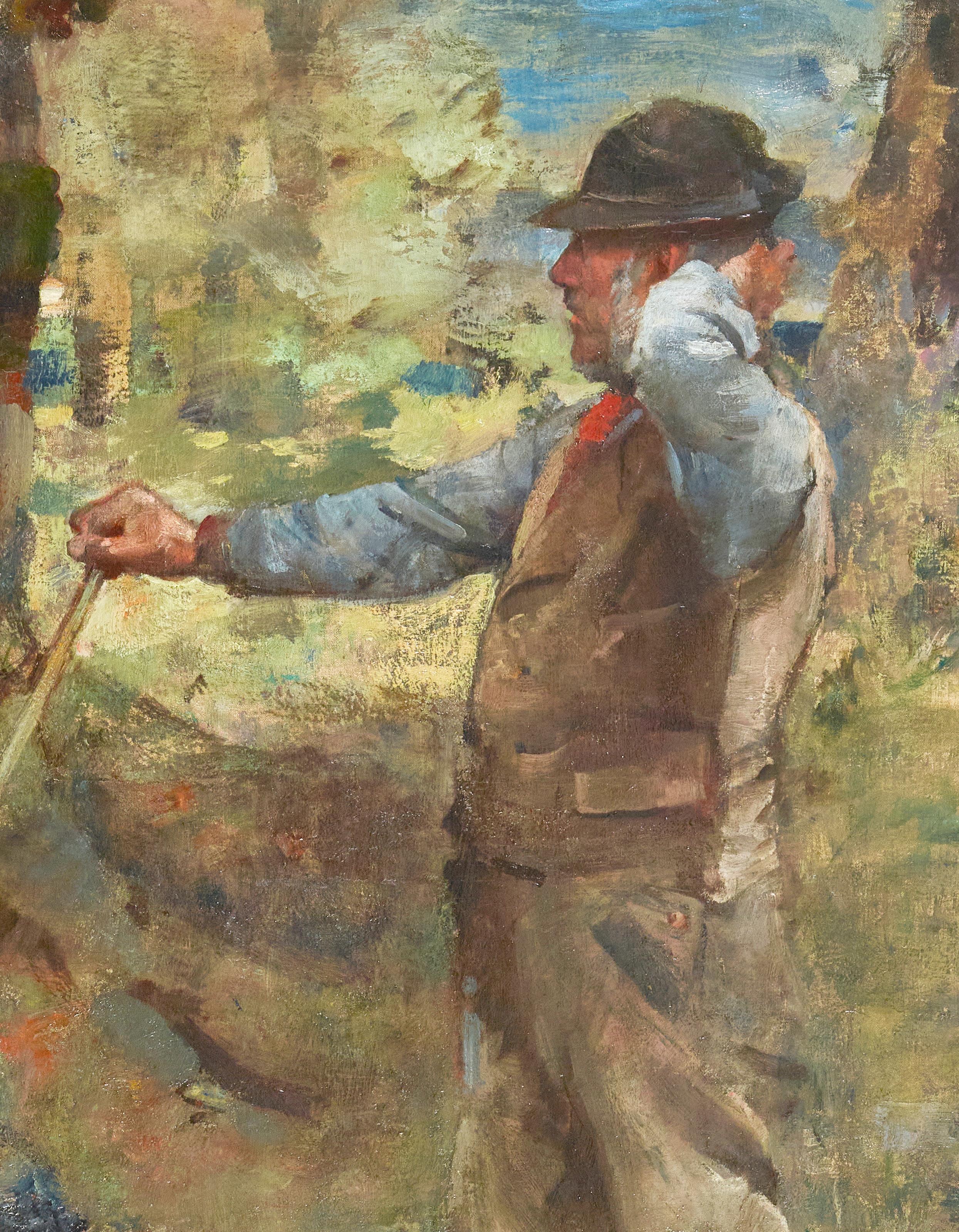
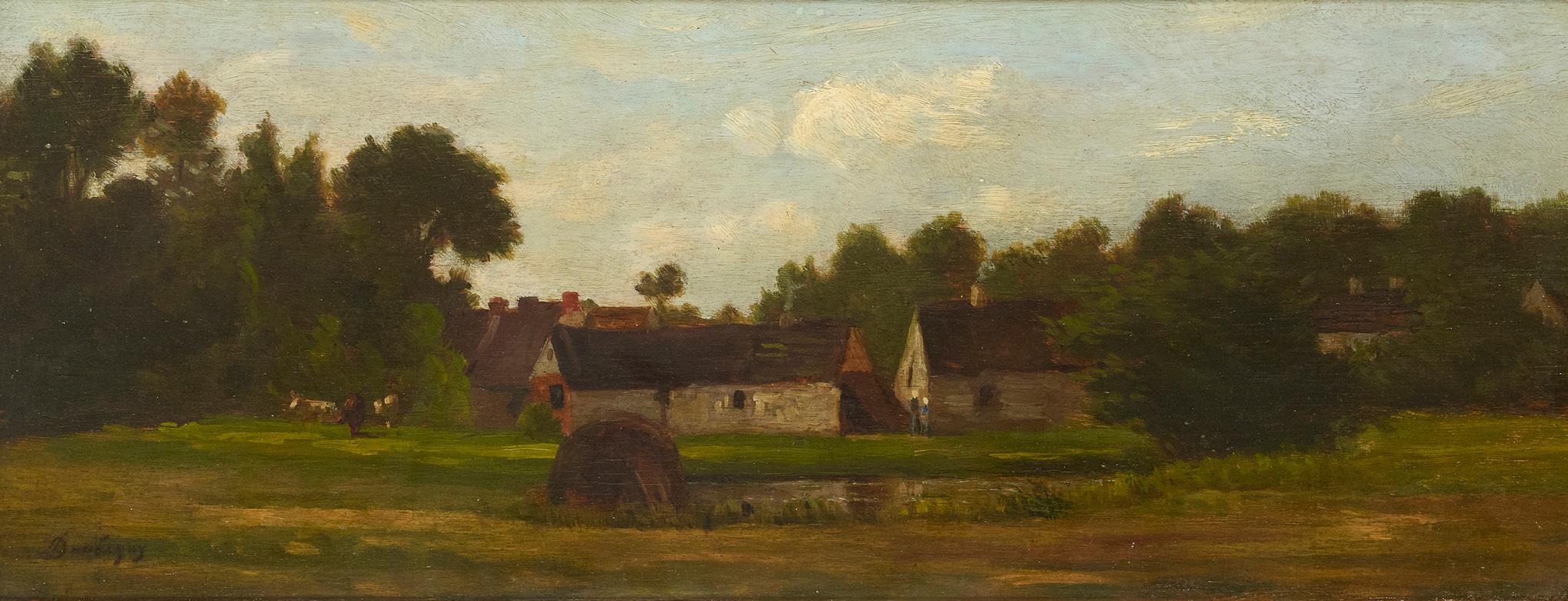
44
CHARLES-FRANÇOIS DAUBIGNY (FRENCH 1817-1878)
FERME PRÈS DE VALMONDOIS
Signed, oil on panel
16cm x 41cm (6.25in x 16in)
£3,000-5,000
Provenance: Pulchri Studio, The Hague, Collection de Feu M. F. H. M. Post, J. Steffelaar Et Autres, 13th November 1894, no.25; Christie’s, London, Alexander Young sale, 30th June, 1st and 4th July 1910, no.56; Thomas Agnew & Sons, London; Barbizon House, London; Fulton Bequest, 1933.
Literature: Hellenbranth, Robert, Charles-François Daubigny: 1817-1878, Morges, p.75, illustrated, no.203.
Note: Titled ‘Landscape’ in Illustrated Catalogue of Paintings, Drawings, Sculpture in the Collections of Paisley Corporation and Paisley Art Institute, 1948.

45
CHARLES-FRANÇOIS DAUBIGNY (FRENCH 1817-1878)
PAYSAGE AU BORD DE L’OISE, ÎLE DE VAUX
Signed, oil on cradled panel
18.5cm x 35.5cm (7.25in x 14in)
£3,000-5,000
Provenance: Christie’s, London, Alexander Young sale, 30th June, 1st and 4th July 1910; Thomas Agnew & Sons, London.
Literature: Hellenbranth, Robert, Charles-François Daubigny: 1817-1878, Morges, p.88, illustrated, no.244
Note: Titled ‘Le Coucher de Soleil’, in Illustrated Catalogue of Paintings, Drawings, Sculpture in the Collections of Paisley Corporation and Paisley Art Institute, 1948.
46
THÉODORE ROUSSEAU (FRENCH 1812-1867)
LANDSCAPE
Signed with initials, oil on canvas 16.5cm x 20cm (6.5in x 8in)
Provenance: Fulton Bequest, 1933.
£3,000-5,000
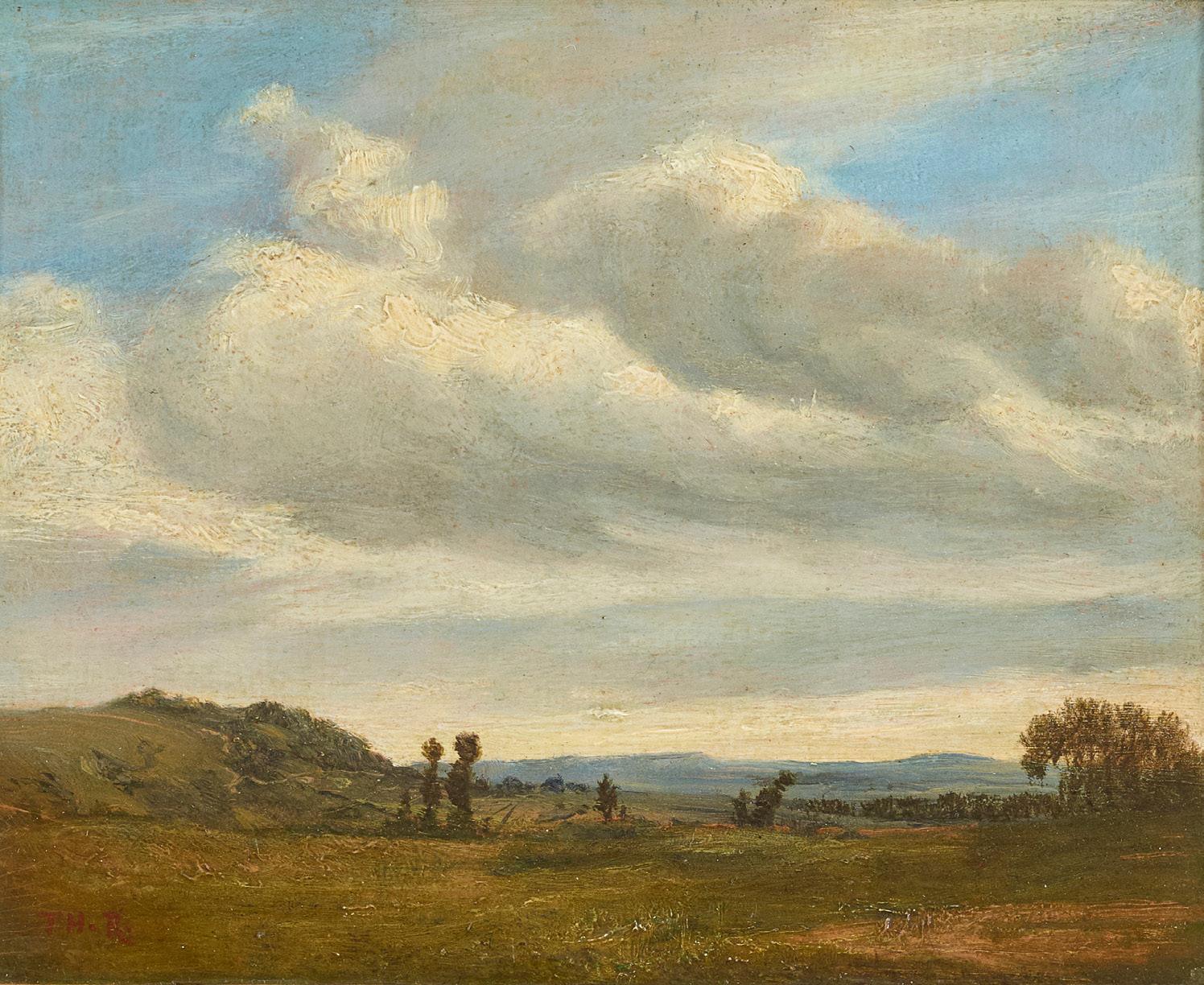
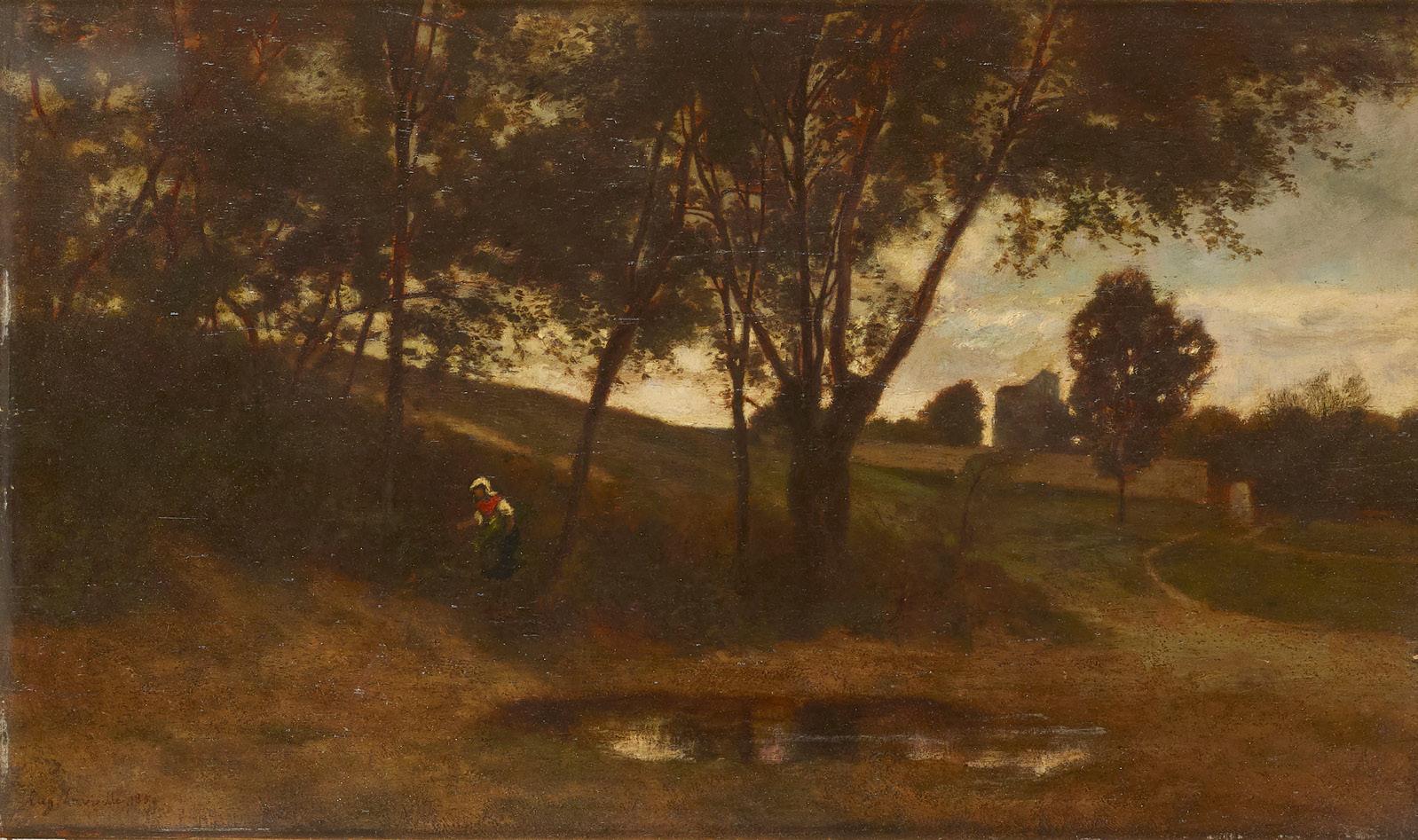
47
EUGÈNE LAVIEILLE (FRENCH 1820–1889) IN THE WOODS
Signed and dated 1850, oil on cradled panel 21cm x 35.5cm (8.25in x 14in)
Provenance: Fulton Bequest, 1933.
Note: Titled ‘Landscape’, in Illustrated Catalogue of Paintings, Drawings, Sculpture in the Collections of Paisley Corporation and Paisley Art Institute, 1948. £400-600
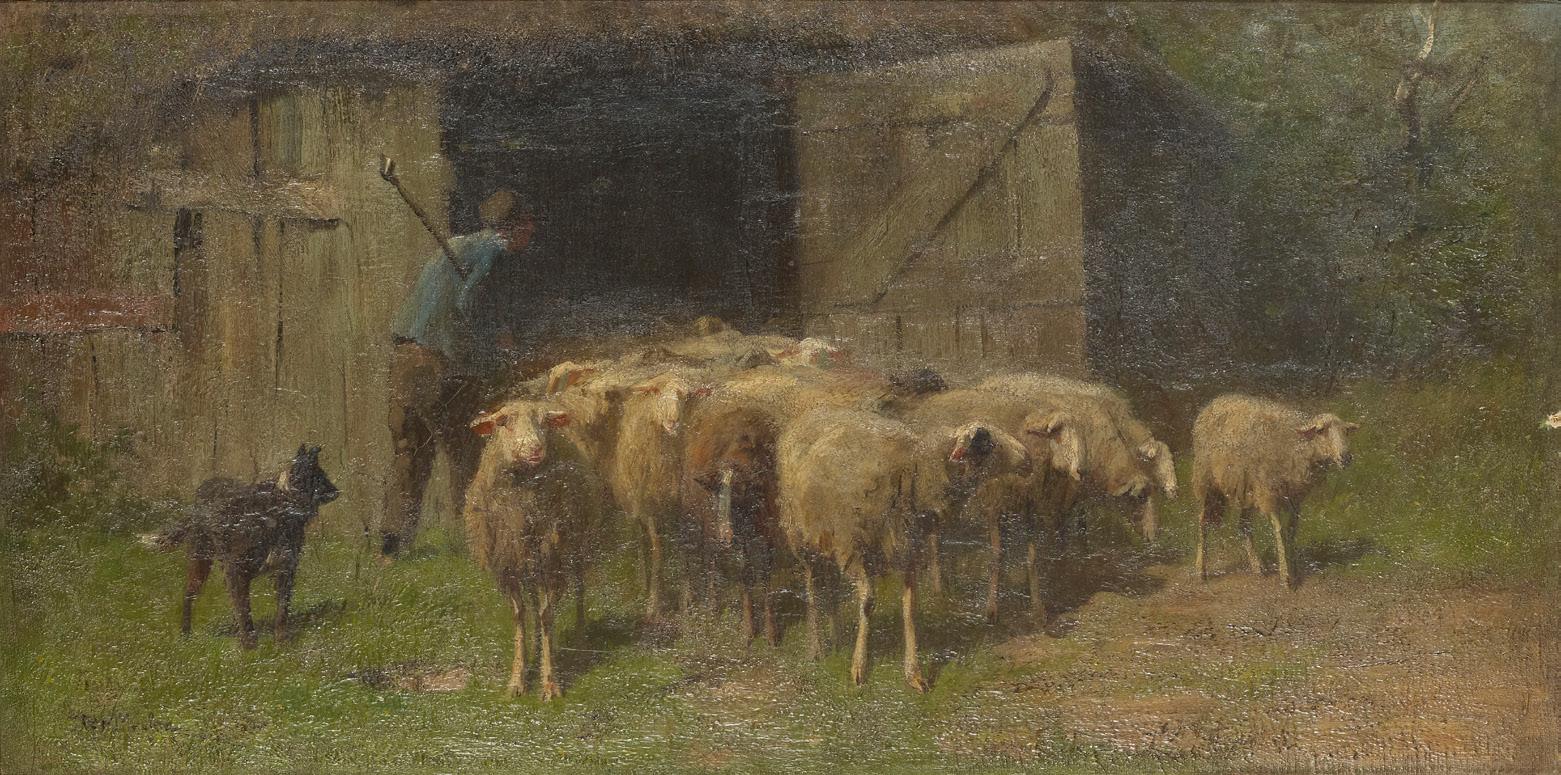
48
FRANÇOIS PIETER TER MEULEN (DUTCH 1843-1927)
OFF TO PASTURE
Signed, oil on canvas 33cm x 63.5cm (13in x 25in)
£600-900
49 CHARLES-ÉMILE JACQUE (FRENCH 1813-1894)
MEADOW PASTURES
Signed, oil on panel
13cm x 10cm (5.25in x 4in)
Provenance: Fulton Bequest, 1933.
£1,000-1,500


50
FRIEDRICH ECKENFELDER (SWISS 1861-1938)
WATERING HORSES
Signed, inscribed and dated ‘Munchen 1888’, oil on panel
30.5cm x 44cm (12in x 17.25in)
£1,000-1,500
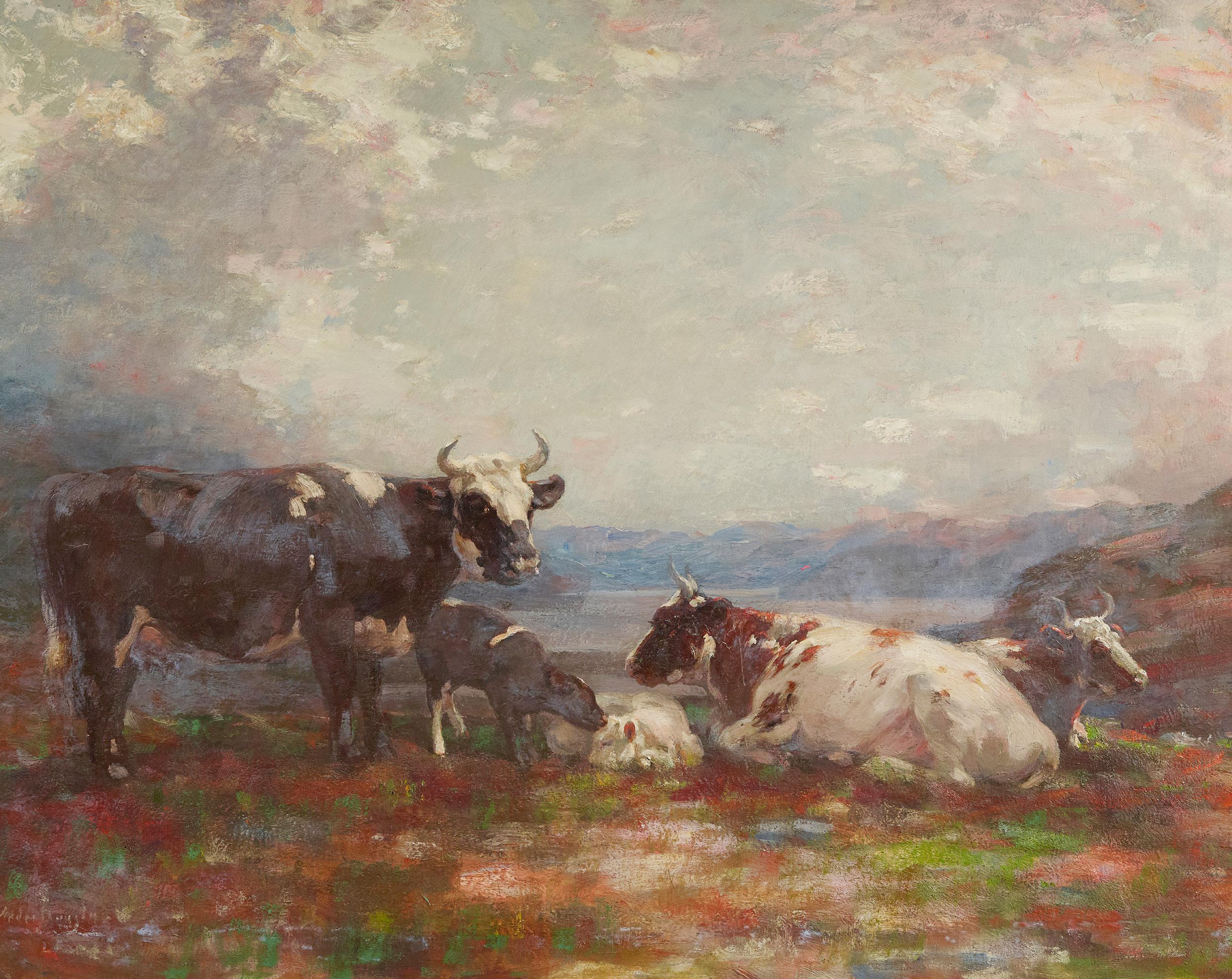

(SCOTTISH 1870-1930)
CATTLE RESTING
Signed, oil on canvas 122cm x 154cm (48in x 60.5in)
Provenance: Presented by John S. Allan, Esq., 1935.
£1,000-2,000
R.W.A., A.R.C.A. (SCOTTISH 1855-1946)
BRIDPORT WEAVING
Signed, oil on canvas
82cm x 152.5cm (32.5in x 60in)
Provenance: Presented by W. Lang, Esq., 1928.
Exhibited: Glasgow School of Art, Fra Newbery, Artist and Art Educationist, August 1996, p.33, no.43.
Literature: Rawson, George Mansell. Francis Henry Newbery and the Glasgow School of Art. PhD thesis, Glasgow School of Art, 1996, pp.278-279; Rawson, George. Fra Newbery, Artist and Art Educationalist, 1855-1946. The Fouilis Press of Glasgow School of Art, 1996. p.33, cat.no. 43, where titled ‘An Old Bridport Weaving Shop’.
£4,000-6,000
Francis Newbery, or ‘Fra’ as he was known by his students, was central to the avant-garde movement which occurred in Glasgow between 1880 and 1920 at the Glasgow School of Art (GSA). Born in Devon, Newbery studied at Bridport and the National Art Training School in London. In 1885, aged 30, he was offered the position of Headmaster and Director of the Glasgow School of Art. Under his guidance, the art school was transformed from being a moderately successful institution to one of international reputation at the forefront of the modern movement.

The dynamic new headmaster brought an enlightened, energetic leadership which resulted in significant change, including the construction of the new Charles Rennie Mackintosh-designed GSA building which Newbery oversaw and supported. Within the school, he equally encouraged male and female students. This meant that in 1905 Glasgow became the first school in Britain to admit women to its architectural program. Newbery also promoted increased interaction with the Continent, employing tutors from Europe, such as the Belgian Symbolist Jean Delville, at a time when few others in Britain would dare to do so. He also chose to involve his students with important exhibitions abroad.
Much of his success at GSA was led by the acclaim surrounding the work of artists such as Mackintosh, Margaret and Francis Macdonald, and Jessie M. King in the 1890’s. As a painter, Newbery was closely associated to, and exhibited with, the Glasgow Boys, a group of artists who were part of the European avant-garde in the early 1890s. In particular, he had close ties to Lavery, Guthrie, E.A. Walton, and enjoyed a close relationship throughout his life with Mackintosh.
Bridport Weaving dates to the mid-1920s. It relates to a mural he created for Bridport Town Hall in 1924. The
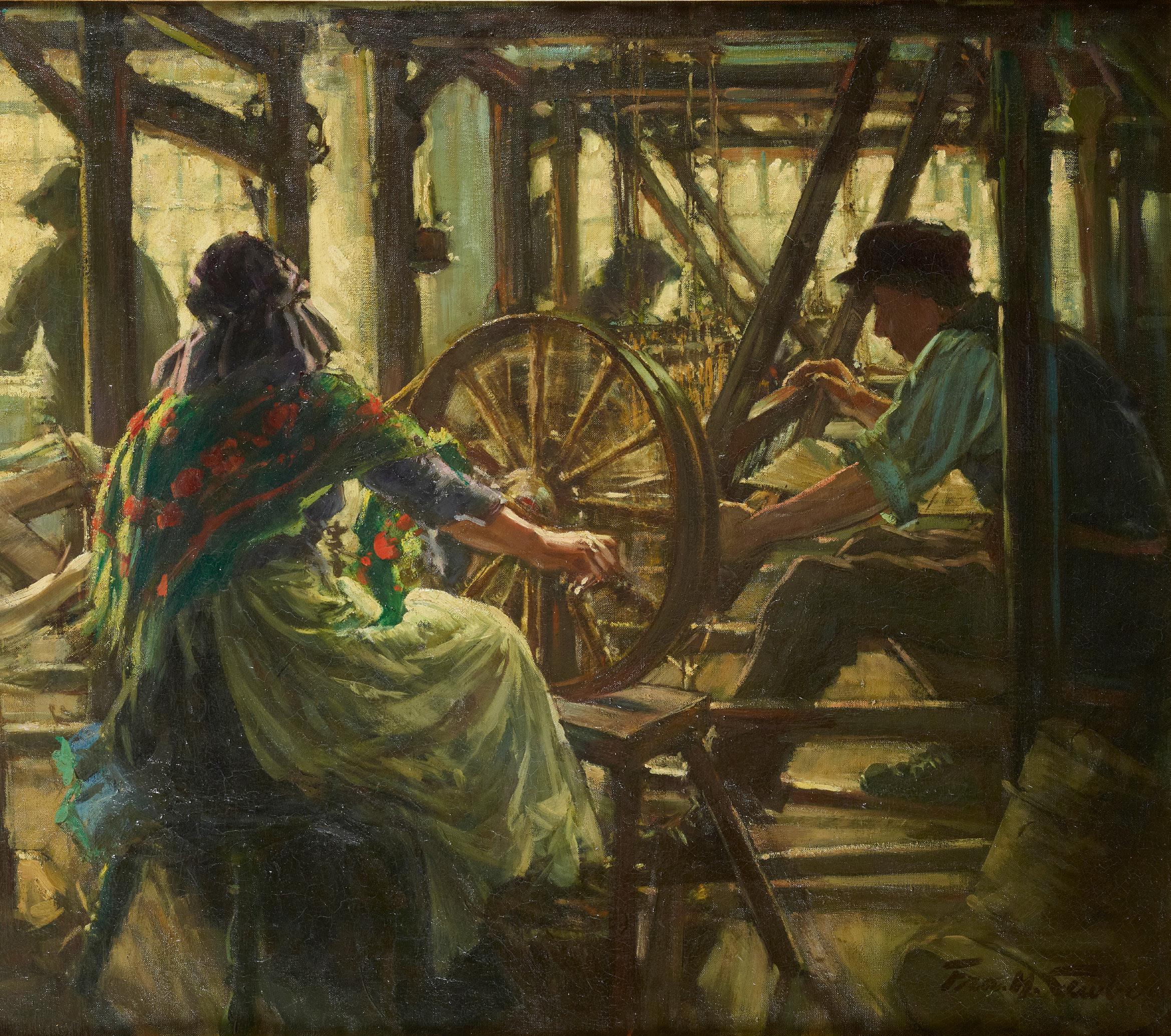
mural comprised four scenes illustrating local traditional industry, including sailcloth weaving, twine spinning, yarn bleaching and net braiding, with the allegorical figure ‘The Spirit of Bridport’ represented by a young woman in a fifth central panel.
The oil on canvas offered here for sale is a fine example of the sophisticated compositional arrangements Newbery was capable of achieving. In his 1996 PhD thesis, Dr. George Rawson records that Bridport Weaving was ‘a reconstruction of one which Newbery had known and had as the workers’ foreman a Scot, William Rathbone, who
Newbery remembered had been one of the last handloom weavers in Bridport.’ A complex interior of criss-crossing beams and loom equipment serves as a device to lead the viewer’s eye back and forth across the composition, resting finally on Rathbone’s face. As Rawson notes, ‘[the] scene is one of hard concentrated work and contains a strong sense of movement. Three of the four figures are seen straining over their machinery. Immersed in their labour they offer no personal contact with, or acknowledgement of, the spectator.'

ALEXANDER FRASER JNR R.S.A., R.S.W. (SCOTTISH 1828-1899)
THE OLD MILL, BARNCLUITH
Signed, signed verso, oil on canvas 91cm x 71cm (36in x 28in)
Provenance: Presented by Robert Edmonds, Esq., 1928.
Exhibited: Hankyu Department Store, Umeda Main Store, Osaka, Japan, The Beautiful Landscape of Scotland, 11-16 November 1983; touring to Tenmaya Department Store, Okayama Main Store, Okayama, Japan, 18-23 November 1983.
£2,000-3,000
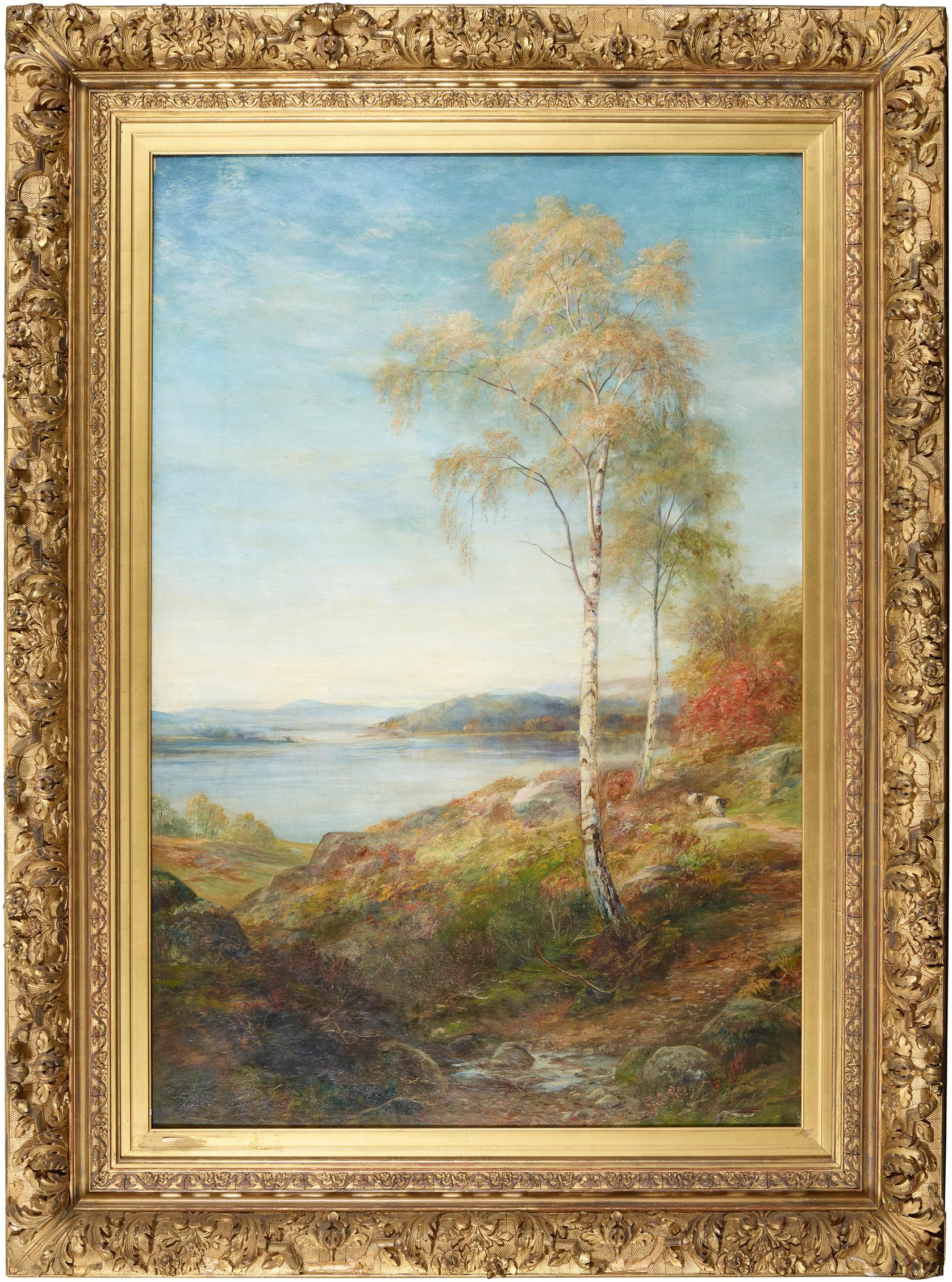
AUTUMN AFTERNOON ON LOCH KATRINE
Signed with monogram, oil on canvas
127cm x 84cm (50in x 33in)
Provenance: Presented by the Misses Bow, 1939.
Note: Titled ‘By the Loch’ in Illustrated Catalogue of Paintings, Drawings, Sculpture in the Collections of Paisley Corporation and Paisley Art Institute, 1948.
£2,000-3,000
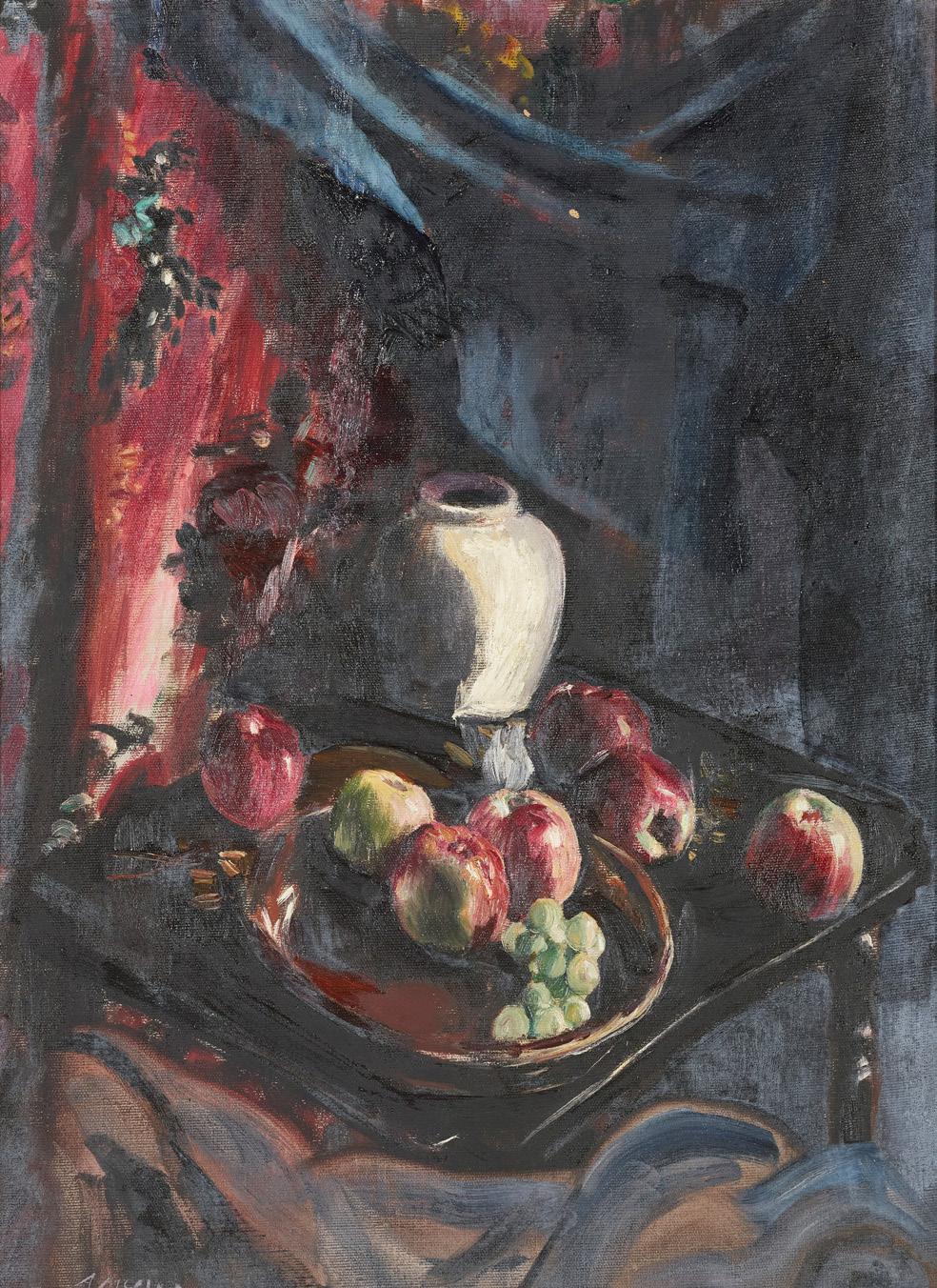
55 §
ARCHIBALD MCGLASHAN A.R.S.A. (SCOTTISH 1888-1980)
STILL LIFE WITH FRUIT
Signed, oil on canvas
71cm x 51cm (28in x 20in)
Provenance: Presented by J. W. Erskine, Esq., 1928. £800-1,200

(FRENCH 1833-1908)
A VASE WITH FLOWERS
Signed, oil on panel
46cm x 36cm (18in x 14in)
Provenance: Fulton Bequest, 1933. £1,000-1,500

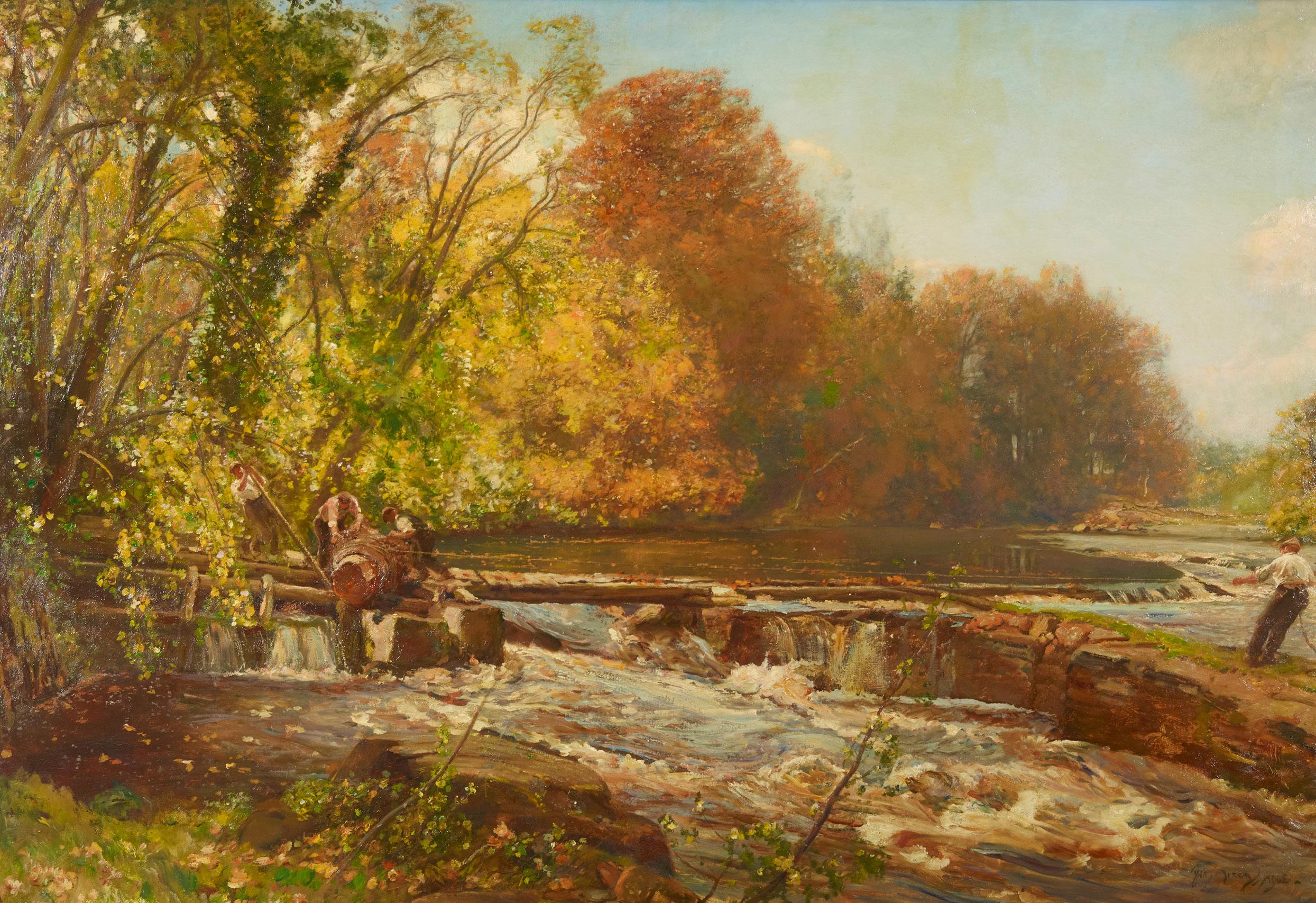
SIR DAVID MURRAY R.A., H.R.S.A., P.R.I., R.S.W. (SCOTTISH 1849-1933)
THE BREATH OF AUTUMN
Signed and dated 1908, signed and inscribed on the backboard, oil on canvas on board support 122cm x 183cm (48in x 72in)
Provenance: Bequeathed by the Artist, 1934.
£5,000-8,000

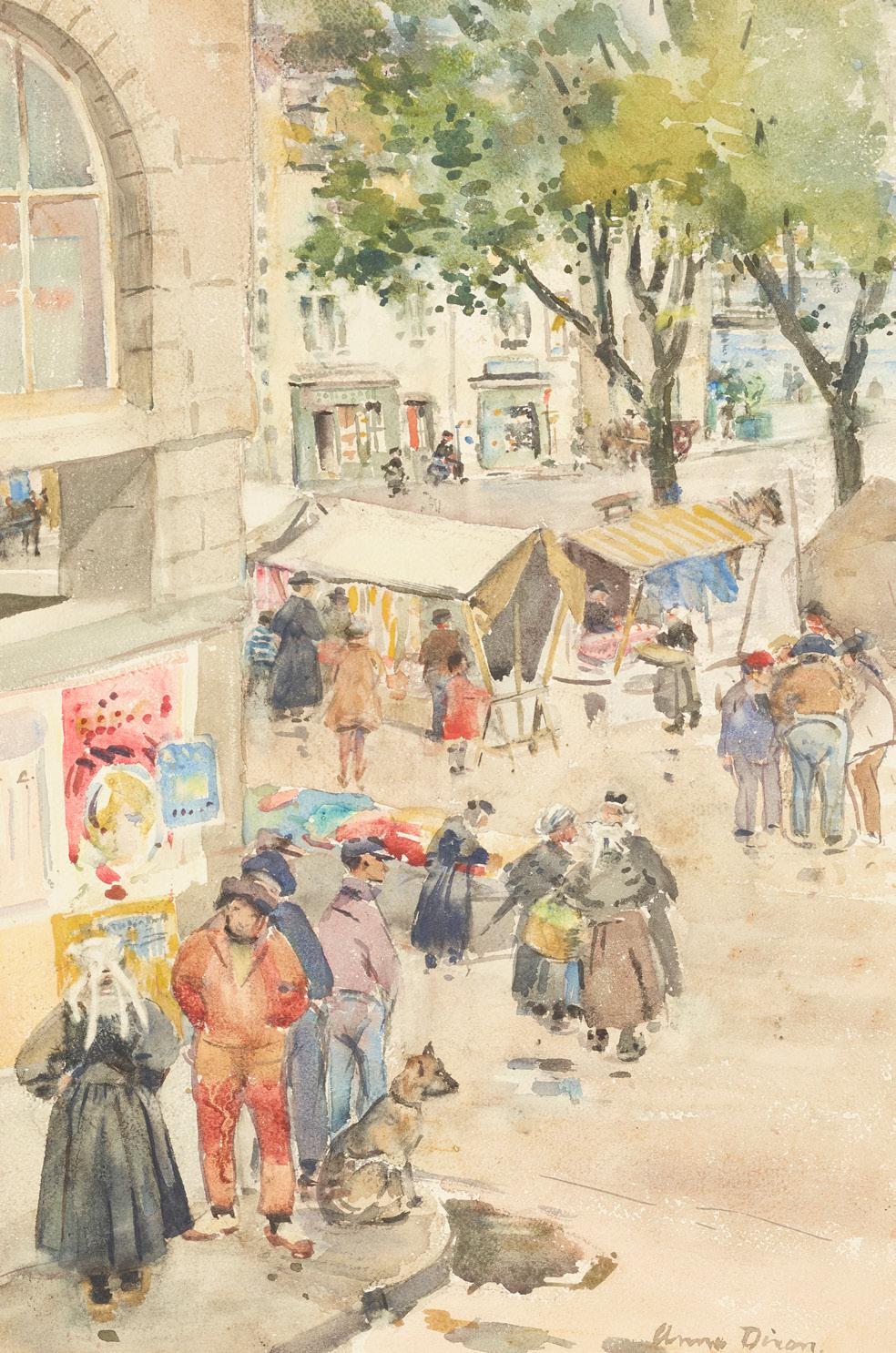
58 §
ANNA DIXON R.S.W. (SCOTTISH 1873-1959)
THE MARKET, CONCARNEAU
Signed, watercolour
46cm x 30.5cm (18in x 12in)
Provenance: Presented by Mrs J. S. Allan, 1931.
£250-350
59
NICO JUNGMAN (DUTCH 1872-1935)
OUDE DELFT
Signed, watercolour
23cm x 32cm (9in x 11.5in)
Provenance: Fulton Bequest, 1933.
Literature: Nico and Beatrix Jungman, Holland, Adam & Charles Black, London, 1904, repr.col. un-numbered and non-paginated, between pages 60 and 61
£600-900
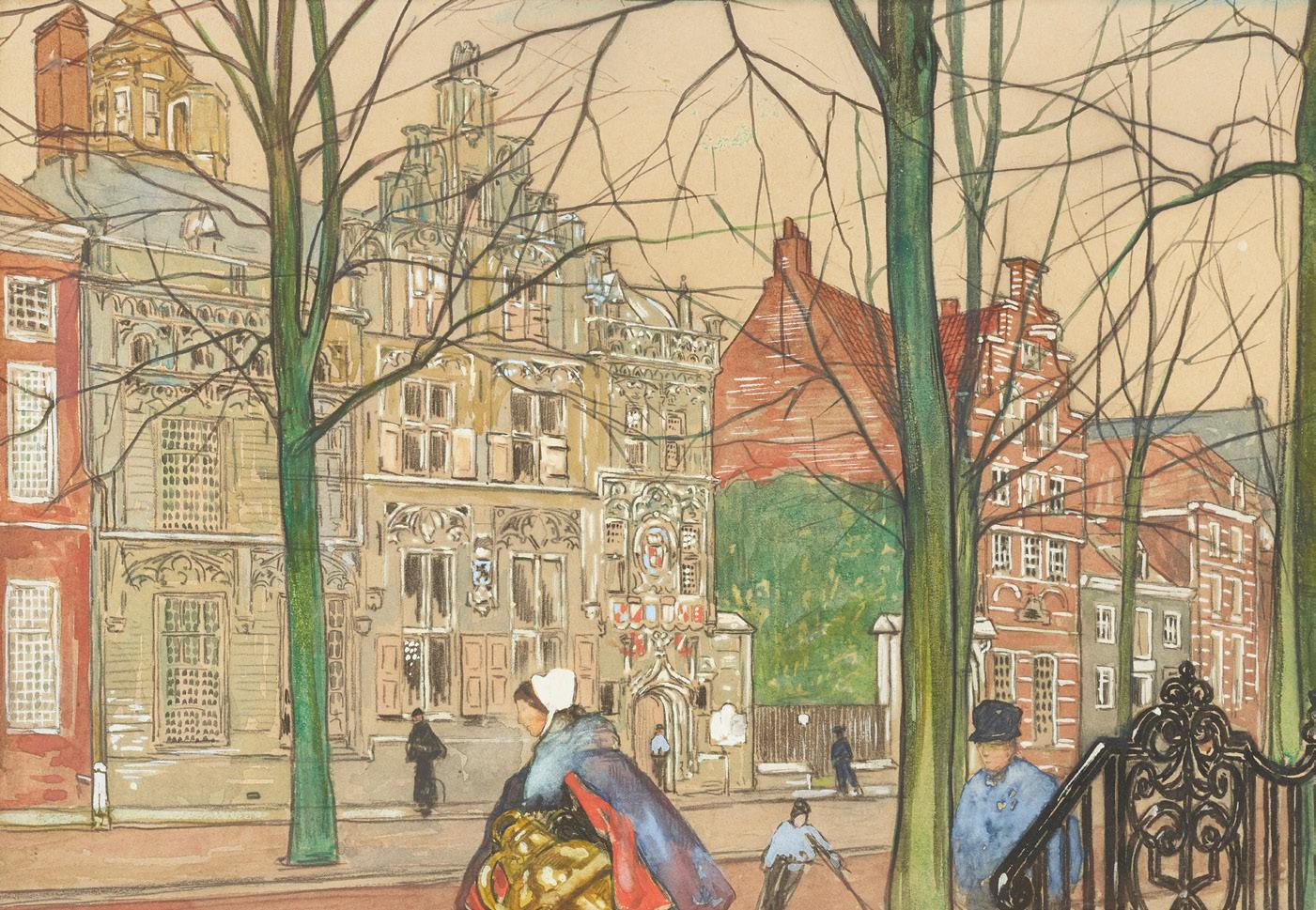

60 §
SIR WILLIAM RUSSELL FLINT P.R.A., P.R.W.S., R.S.W., R.O.I., R.E. (SCOTTISH 1880-1969)
TENNIS ON THE SANDS
Signed, watercolour 66cm x 96.5cm (26in x 38in)
Provenance: Presented by Miss C. M. Clark Millar, 1945.
Note: Titled ‘The Kiln by the Sea’ in Illustrated Catalogue of Paintings, Drawings, Sculpture in the Collections of Paisley Corporation and Paisley Art Institute, 1948.
£7,000-10,000
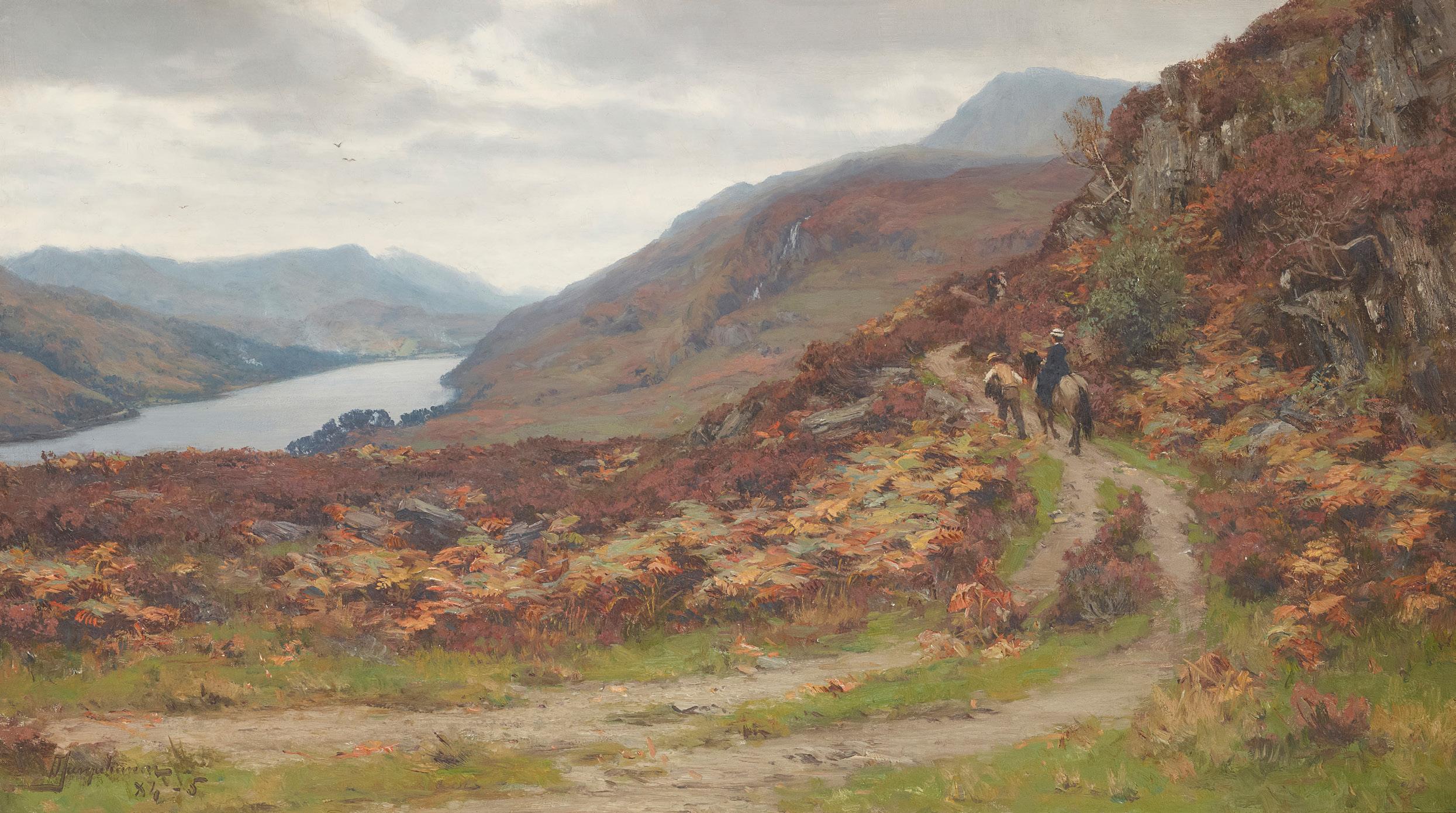
DAVID FARQUHARSON
A.R.A., A.R.S.A., R.S.W., R.O.I. (SCOTTISH 1840-1907)
QUEEN’S VIEW, LOCH TUMMEL
Signed and dated ‘84-5, oil on canvas 51cm x 91cm (20in x 36in)
Provenance: Presented by Mrs Paterson, 1916.
Exhibited: Hankyu Department Store, Umeda Main Store, Osaka, Japan, The Beautiful Landscape of Scotland, 11-16 November 1983; touring to Tenmaya Department Store, Okayama Main Store, Okayama, Japan, 18-23 November 1983.
£3,000-5,000

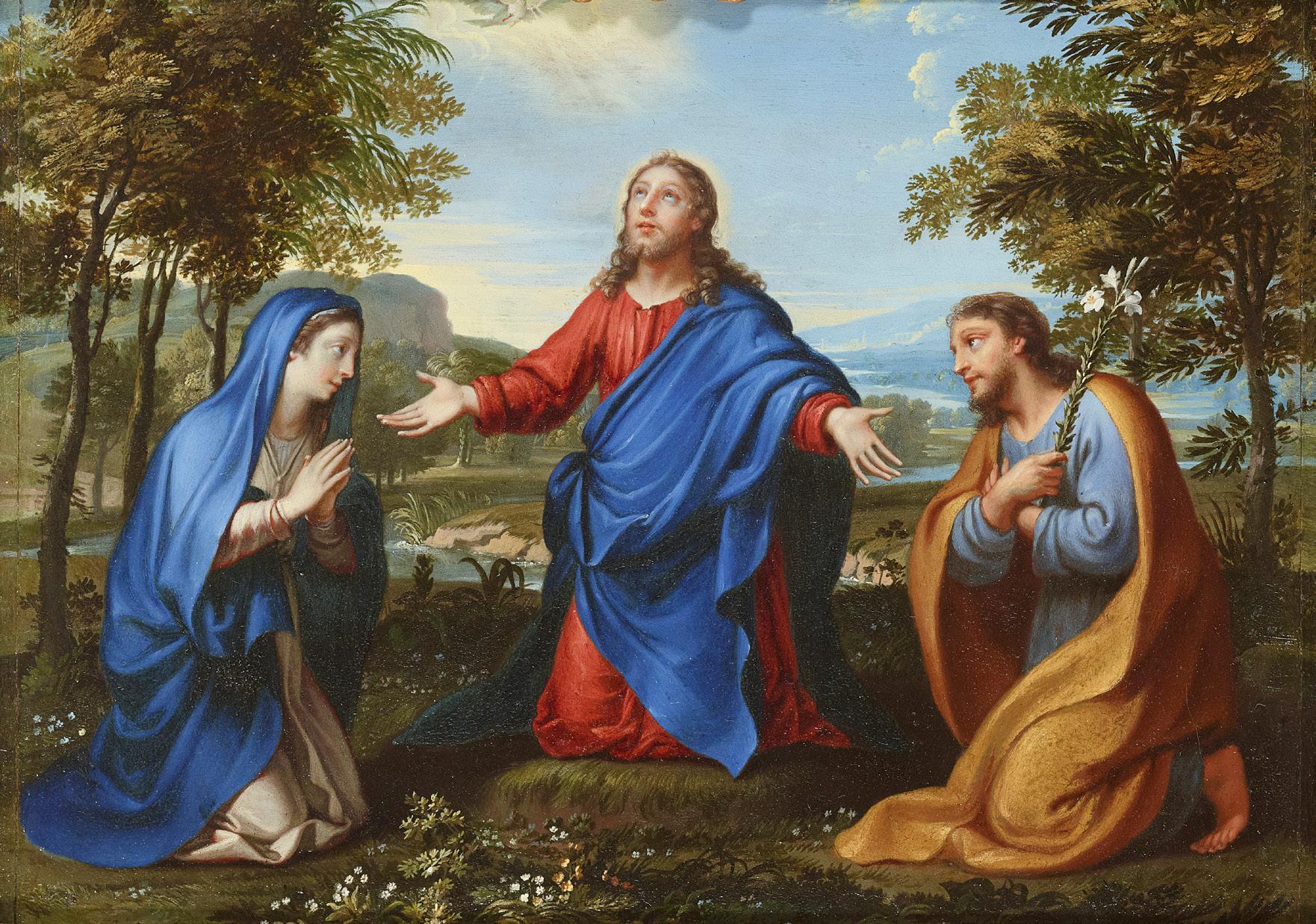

CIRCLE OF CARLO DOLCI
THE EARTHLY TRINITY (CHRIST, THE VIRGIN MARY AND JOSEPH IN A LANDSCAPE)
Oil on copper, with 1cm panel extensions to left and right edges
33cm x 46cm (13in x 18in)
£4,000-6,000
R.S.A. (SCOTTISH 1821-1901)
MICHELANGELO SCULPTING
THE STATUE OF ‘NIGHT’ Oil on canvas, arched top 61cm x 76cm (24in x 36in)
Provenance: Presented by A. M. McDougall, Esq., 1932.
£30,000-50,000
is a masterpiece conceived?
Paton invites us to ponder the very alchemy of genius by welcoming us into Michelangelo Buonarotti’s studio as he finishes carving ‘Night’. In a shadowy loggia the Renaissance artist crouches in front of his monumental marble, pausing after a campaign of chiselling to appraise his work. A spent hourglass sits on a nearby table, and a toolbox and sketchbook lie at the artist’s feet, while the view through the arch suggests that Michelangelo has taken the silhouette of Florence as his muse. The city glows blue under the light of the moon, which crests around the arch, illuminating the artist upon the completion of his masterwork.
Paton’s use of breaking light to represent ‘divine inspiration’ can be connected to the Pre-Raphaelite artist William Holman Hunt’s seminal 1853 painting ‘The Awakening Conscience’ (Tate Britain). Paton had declined an invitation to join the Pre-Raphaelite Brotherhood, electing instead to return to Scotland, but he continued to paint in a PreRaphaelite style and remained familiar with the Brotherhood and their output. So moved was Paton by ‘The Awakening Conscience’ that he was impelled to produce several of his own works exploring the enigma of creation and enlightenment. These include an 1861 painting of Luther who, after a sleepless night induced by a crisis of faith, is suddenly granted spiritual clarity as a ray of dawn sun touches his brow (National Galleries of Scotland), as well as a painting of Dante meditating on the nature of sin beneath an apparition of two adulterous lovers from his Divine Comedy (Bury Art Museum). In the 1860s Paton produced a further painting of Michelangelo in contemplation, which was gifted to the William Morris Gallery in 1935 from the collection of Sir Frank Brangwyn.

It might be conjectured that Paton’s interest in the nature of creative conception has something to do with the fact that he received little formal artistic training. At the age of seventeen he took his first job as Head Designer at a muslin manufacturer in Paisley, and after working in this capacity for three years, he briefly studied at the Royal Academy Schools in London, where he formed a lifelong friendship with John Everett Millais. (Rodger, Robin. The Patons of Dunfermline: Bi-Centenary of Sir Joseph Noël Paton RSA (1821-1901). Royal Scottish Academy, December 10 2021. [accessed 24th July 2024]). By all accounts, Paton was an expert on folklore and fairytale, themes which inspired many of his paintings and brought him considerable success and renown.
In 1861 Paton travelled to Italy, where he likely beheld Michelangelo’s ‘Night’ in the Medici Chapel in San Lorenzo, Florence. Upon his return, Paton published a book of poetry which included ‘A Confession’, a tongue-in-cheek reflection on Michelangelo’s art, so majestic as to drive the viewer to distraction:
No, Buonarotti, thou shalt not subdue
My mind with thy Thor-hammer! All that play
Of ponderous science with Titanic thew And spastic tendon - marvellous, ‘tis true!Says nothing to my soul. Thy “terrible way” Has led enow of worshippers astray; I will not walk therein!
(Sir Joseph Noël Paton, Poems by a Painter, William Blackwood, Edinburgh, 1861, p.156)

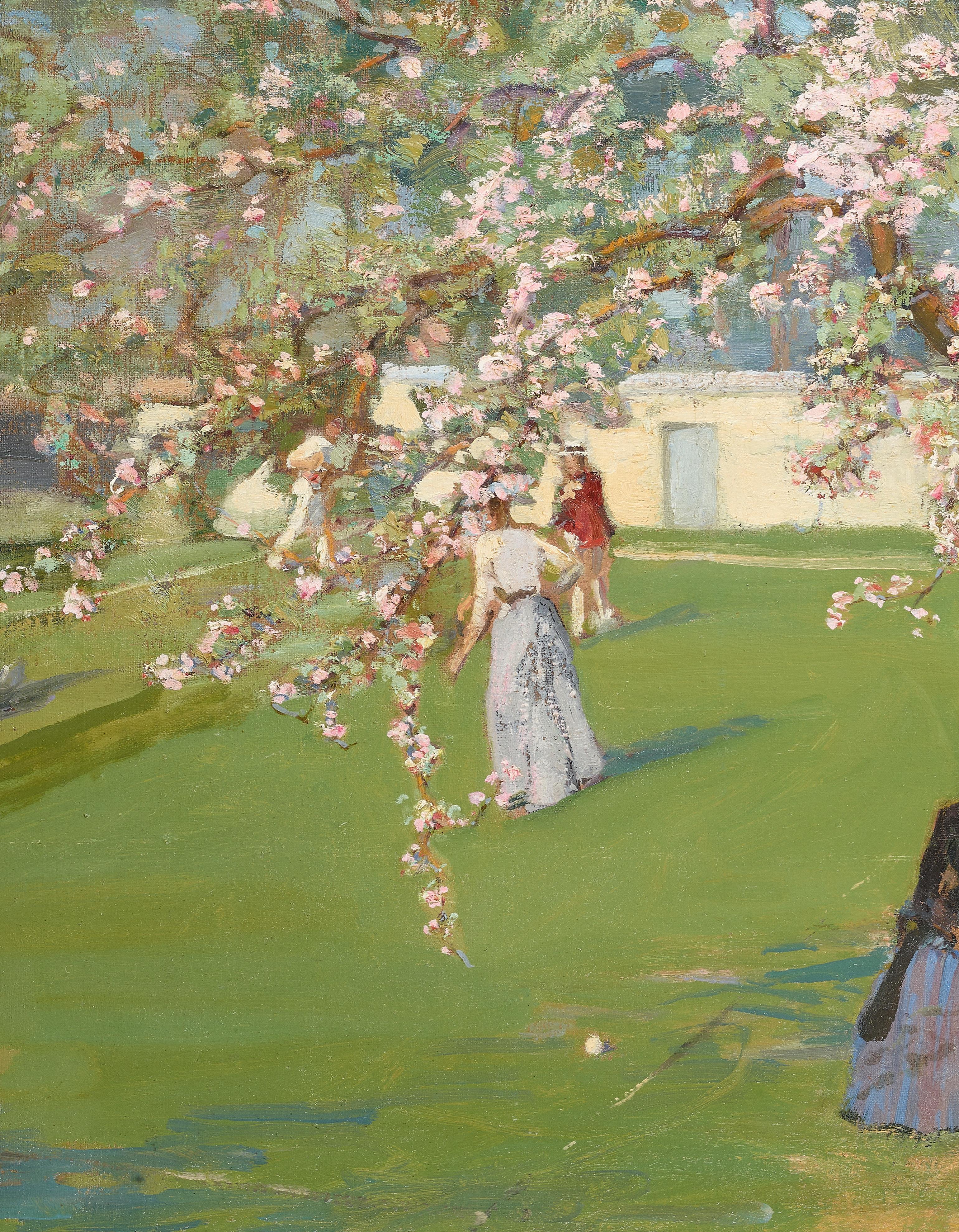
Works By Sir John Lavery

During the early summer of 1889 Lavery returned to Paisley to make kit-kat sketches of dignitaries who had been invited to the reception held for The State Visit of Queen Victoria to the Glasgow International Exhibition in the previous year.1 These tiny portraits would come together with 250 others in a large commemorative canvas depicting the event (Glasgow Museums). His year had begun in a flurry of travel arrangements and studio appointments. By the late Spring the project was well underway. Lavery had just returned from Darmstadt where he had painted the portrait of Princess Alix of Hesse (Private Collection), and other members of the royal retinue, when the short trip from Glasgow to Paisley took place. A visit, however brief, could not be made without calling upon friends in the town where he had staged his first solo exhibition in 1886. Principally these were members of the Fulton family who, on one particular day, had taken their daughter, Alice, to the local tennis club.2 [Illustrated below]
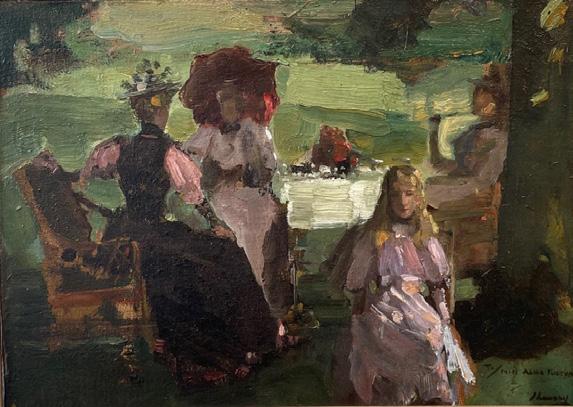
While the girl is omitted from the present canvas, both small oil sketches produced in preparation for it include her, while focussing upon the figure group at the right of the composition. A note in the minutes of Paisley Art Institute in 1915 identifies the women taking afternoon tea as Mrs William MacKean and Mrs Archibald Coats of Woodside,
while the lady in the background wearing a red shawl was Mrs Stewart Clark of Filnside.3 The three tennis players, glimpsed through blossoming trees are Nina Fullerton, Hugh Macfarlane and the watercolourist, Alexander Balfour McKechnie.4 The note concludes by describing the present work as ‘an excellent example of the artist’s earlier “Impressionist” style’, implying that, as with the preparatory sketches, it was completed on the spot. The spot, the original Paisley lawn tennis club in Garthland Place, is likely to have been sited on land partly occupied by the Abercorn Bowling Club, close to the railway line.5
Lawn tennis was, by 1889, approaching the height of its popularity. Invented by Major Clopton Wingfield in 1874, with the unappealing name, ‘Sphairistike’, it quickly replaced croquet as a middle-class pastime when boxed sets of essential equipment went on the market.6 For the fashionconscious factory-owners of Paisley, as the present canvas confirms, it provided the ideal theatre for social rivalries. For the artist however, in the midst of a year when time was measured in end-on appointments, dropping into the Paisley Lawn Tennis Club was a moment of delight. One had only to open a little pochade box or erect a lightweight tripod easel for the picture to come to him, unbidden. Lavery would later describe such moments as ones that brought him to ‘concert pitch’. These were times when in an elysian garden of women, the scene composed itself if you were quick enough to grasp its essence. In the present instance, there was no hesitation.
We are grateful to Professor Kenneth McConkey for writing this catalogue entry.
1 McConkey 2010, pp. 43-48.
2 Two sketches are known to have been painted on the spot. As well as the example above, a companion sketch (Private Collection), shows Alice holding a racquet on her lap while the women on the left, one holding a scarlet parasol, have swopped places. The background, simply indicated with a broad brush, represents one of the courts.
3 These women were of course, dynastic leaders of west of Scotland society. I am grateful to Andrea Kusel of Paisley Museum & Art Galleries for bringing this note to my attention in 2011.
4
Both Macfarlane and McKechnie were prominent members of the Club, the former taking on the role of Honorary Treasurer by the 189192 season.
5 Kusel, as above. I am also grateful to Michael Durning and Victoria Irvine, (emails 2015-18), for their valuable work on Lavery’s Fulton connections.
6 Sumner, 1911, p. 13.


64
SIR JOHN LAVERY R.A., R.S.A., R.H.A., P.R.P., H.R.O.I., L.L.B. (IRISH 1856-1941)
PAISLEY LAWN TENNIS CLUB
Signed and dated 1889, oil on canvas 63.5cm x 76cm (25in x 30in)
Provenance: Presented by James Begg, Esq., President of Paisley Art Institute (1920-27), 1917.
Exhibited: Paisley, Paisley Art Institute, Annual Exhibition, 1918, no.157, where titled ‘Courts of the Paisley Lawn Tennis Club, June 1889’; St Andrews, Crawford Art Centre, John Lavery: The Early Career, 18801895,1983, no.13; Paisley, Paisley Museum & Art Galleries, A Paisley Legacy: The Paisley Art Institute Collection, 2015, no.12.
Literature: McConkey, Kenneth, Sir John Lavery, Canongate Press, Edinburgh, 1993, p.42; McConkey, Kenneth, ‘Tennis Parties’, in Ann Sumner ed., Court on Canvas, Tennis in Art, Barber Institute & Philip Wilson Publishers, 2011, pp.63-64, repr. fig 3.17.
£400,000-600,000
During 1884, the last of his student years in France, John Lavery was keen to prepare for a triumphant return to Scotland, sending recent works to exhibitions in Paisley, Glasgow, Edinburgh, Dundee and Kilmarnock. His continental mannerisms brought him to the attention of collectors and fellow painters alike, and among these was Joseph Fulton, co-owner of a large cloth scouring, finishing and dyeing works, inherited from his grandfather. The family was one of Paisley’s biggest employers. The Fultons lived in some style at Glenfield House, a baronial mansion built in 1859, on an estate overlooking the town. There, three small dams were constructed to supply soft water to the family firm from burns that flowed from the nearby Gleniffer Braes. The mill-owner offered Lavery a cottage adjacent to one of these ponds, close to the house, to act as his studio while he painted the portraits of his daughters (Paisley Museum), and other works in the district.¹ [Illustrated below]
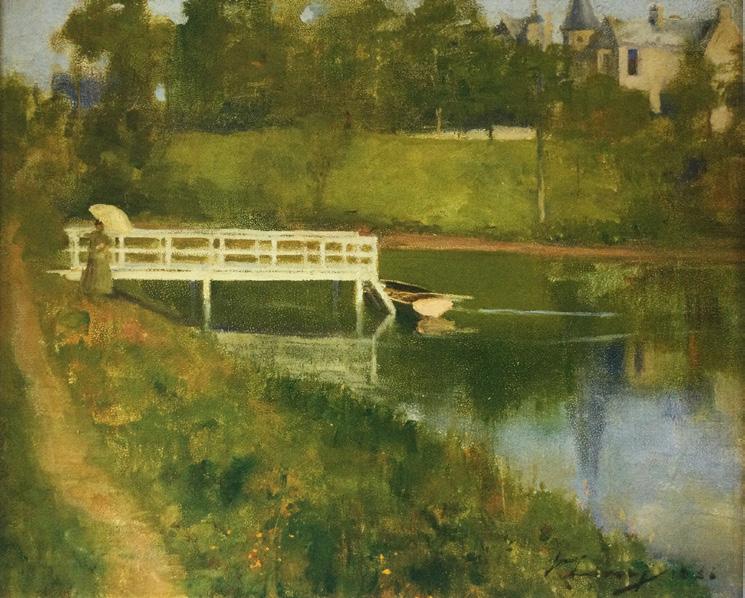
John Lavery, The Pond at the Glen, Paisley, 1886, 25.4 x 30.5cm, Private Collection
These included scenes in the Paisley suburbs and views of the braes, including the Craigielinn waterfall, the subject of the present work. The Parasol (Private Collection), a watercolour of 1885 indicates that the artist was already familiar with the woodland paths leading to the site.2
Lavery was no stranger to such an environment. Many recent canvases had been executed en plein air in the forest of Fontainebleau, within walking distance of his hotel at Grez-sur-Loing. One of these was even inscribed as an ‘Impression’, indicating his awareness of the work of the French Impressionists.3 However, Lavery’s malleable
SIR JOHN LAVERY R.A., R.S.A., R.H.A., P.R.P., H.R.O.I., L.L.B. (IRISH 1856-1941)
THE GLEN
Signed and dated 1886, oil on canvas 61cm x 46cm (24in x 18in)
Provenance: Fulton Bequest, 1933. £70,000-100,000
Exhibited: Paisley, Clark Hall, Portraits, Pictures and Sketches Painted in the Neighbourhood, November 1886, (? uncatalogued exhibition); Edinburgh, National Gallery of Scotland, The Discovery of Scotland, 1978, no11.7; St Andrews, Crawford Art Centre, John Lavery: The Early Career, 1880-1895,1983, no.9; Hankyu Department Store, Umeda Main Store, Osaka, Japan, The Beautiful Landscape of Scotland, 11-16 November 1983; touring to Tenmaya Department Store, Okayama
Main Store, Okayama, Japan, 18-23 November 1983; Edinburgh, The Fine Art Society, Sir John Lavery RA, 1856-1941, 1984, no 22 and tour to London, The Fine Art Society, Belfast, Ulster Museum, Dublin, National Gallery of Ireland; Paisley, Paisley Museum & Art Galleries, A Paisley Legacy: The Paisley Art Institute Collection, 2015, no.28.
Literature: McConkey, Kenneth, John Lavery, A Painter and his World, Atelier Books, Edinburgh, 2010, p.214, note 118.
1 Thereafter, what was originally ‘Burn Crook’, became known as ‘Lavery Cottage’. The Pond at the Glen, Paisley, (above) represents the view of Glenfield House a few steps from Lavery’s cottage (both now demolished). During these years Lavery also maintained a studio in St Vincent Street, Glasgow, in what might be described as the artists’ quarter, in close proximity to Glasgow Art Club, of which he was a member.
approach to handling also embraced possibilities he found in the work of Bastien-Lepage. Specifically, this alluded first and foremost to massing the essential shapes and forms of the composition, adroitly placing the figure as a focal point for the beholder’s eye, and mapping colour and tone transitions, before attending to detail. These essential tenets derived from modern French ‘Naturalism’ are evident in the Waterfall: The Glen composition.
Even today, after nearly 140 years, one can see that Lavery was faithful to the setting. Back then, crystal pure tumbling waterfalls, sometimes incorporating a female bather, had been used to symbolise the source of human life – as in Gustave Courbet’s La Source 1868 (Musée d’Orsay, Paris). Lavery’s female figure, picking her steps down the ravine, carries none of this allegory. She is simply there, before us, as we turn a corner. Muse? Motif? Or chance encounter? She gives scale to this fold in the terrain with its sounding cataract.
We are grateful to Professor Kenneth McConkey for writing this catalogue entry.
2 For The Parasol, see Ulster Museum and Fine Art Society, Sir John Lavery RA 1856-1941, 1984, no. 18.
3 Lavery’s An Impression dans la sous bois [sic], 1884 was sold at Christie’s, 10 May 2007 (essay by Kenneth McConkey).
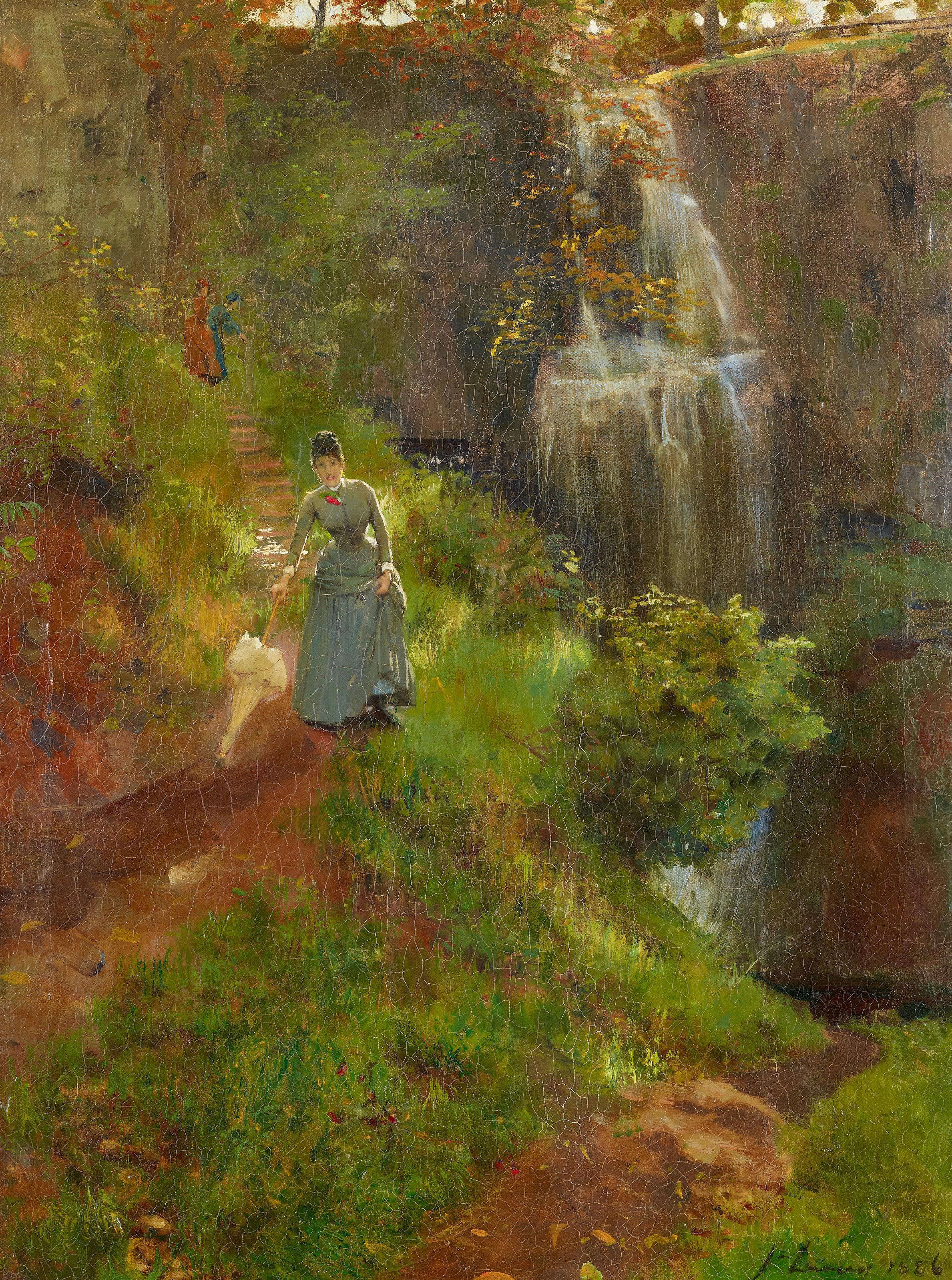


Although essentially a private estate, the Fultons, treated the Gleniffer braes to the south of the town as an area where all the people of Paisley could roam freely, with their backs to the symbols of toil. The perfect expression of this peaceful recreational haunt is Lavery’s A Summer Afternoon, 1886. [illustrated above]
One annual occasion disrupted the natural harmony of the braes, replacing quiet reverie with hubbub and birdsong with a massed choir. The annual Glen Concerts, inaugurated in 1874, were established to raise money for good causes, and for the erection of statues to Robert Burns and the Paisley weaver poet, Robert Tannahill. Attendance was reckoned to average between 20,000 and 30,000, for whom a four-hundred-voice choir sang favourite Scottish airs. Lavery turned out for the event in 1887 and a photograph shows him working on what is probably the present canvas. [illustrated top right]
The Glen Concert is a work of great significance in the Lavery oeuvre. In the years to come he would frequently adopt the role of ‘man in the crowd’, to record a race meeting, bullfight, military parade, or busy Moroccan marketplace. In such situations he had the ability shut out all distracting antics. Here, with its remarkable fluidity, in which grassy slopes are covered by hordes of spectators, enlivened by one or two tiny touches of vermillion banners, the green hillsides of the glen are cast into a remarkable relief. The mottled landscape is almost an exercise in abstraction as, undeterred by onlookers, Lavery’s formidable powers of concentration are on public display.
We are grateful to Professor Kenneth McConkey for writing this catalogue entry.
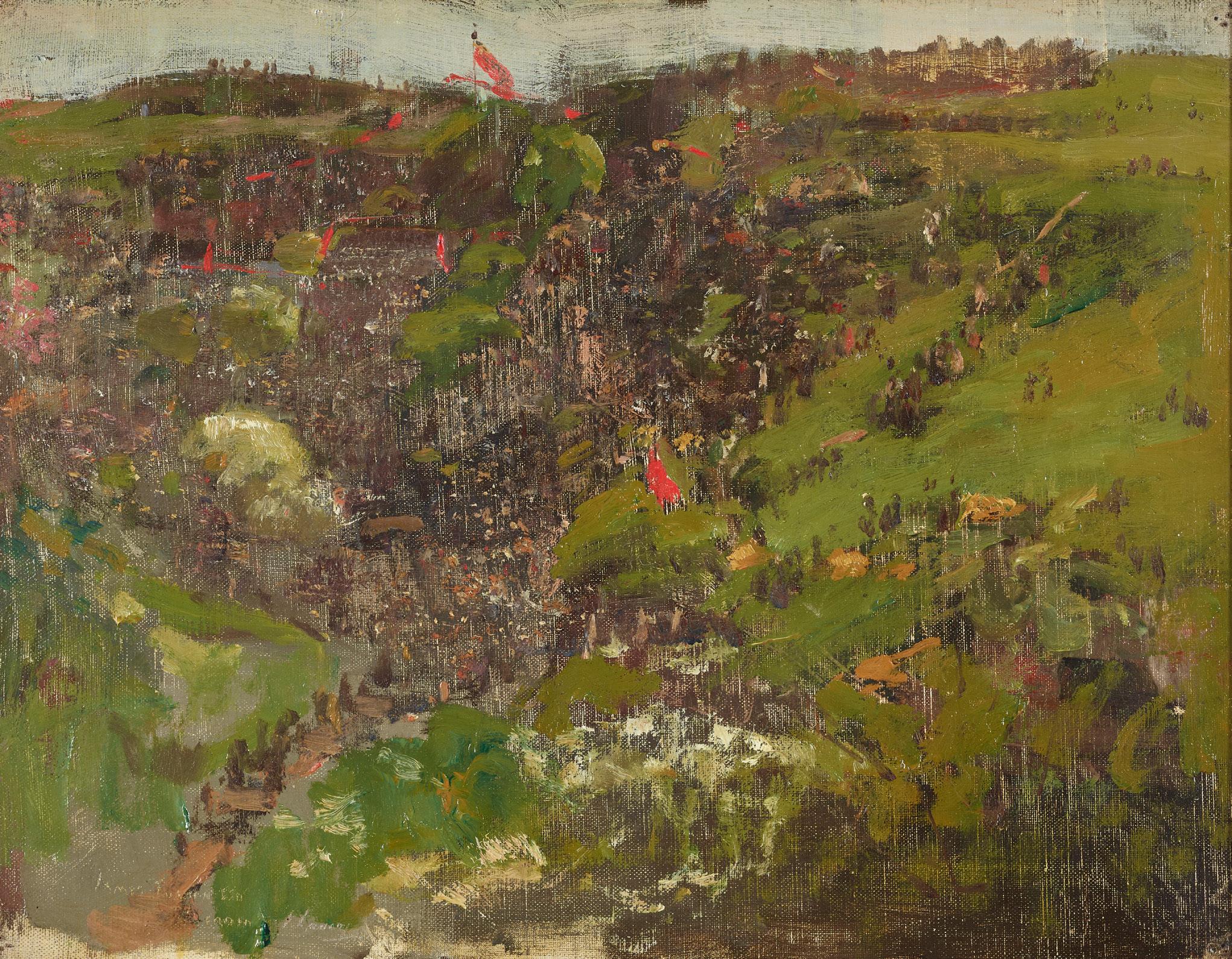

66
SIR JOHN LAVERY R.A., R.S.A., R.H.A., P.R.P., H.R.O.I., L.L.B. (IRISH 1856-1941)
THE GLEN CONCERT
Signed and inscribed ‘James Fulton from J. Lavery’, oil on canvas 46cm x 36cm (18in x 14in)
Provenance: Fulton Bequest, 1933.
Exhibited: St Andrews, Crawford Art Centre, John Lavery: The Early Career, 1880-1895,1983, no.11; Paisley, Paisley Museum & Art Galleries, A Paisley Legacy: The Paisley Art Institute Collection, 2015, no.44.
Literature: McConkey, Kenneth, Sir John Lavery, Canongate Press, Edinburgh, 1993, p.42; McConkey, Kenneth, John Lavery, A Painter and his World, Atelier Books, Edinburgh. 2010, pp.31 & 214.
£30,000-50,000

By 1906, Lavery’s encounters with the sea were confined to a few odd moments on the Antrim coast, the Clyde estuary and the beach at Tangier. His recent purchase of Dar-el-Midfah, the house on Mount Washington, to the west of the Moroccan port, made short descents to nearby beaches a daily possibility during annual winter sojourns. Here he constructed a garden studio and spent up to four months each year. The painter now became obsessed with the moods of the sea, making rapid sketches on 10 x 14-inch canvas-boards in all weathers. Like Turner, he was fascinated by the subtle colour transitions that led the eye from foreground foam to sea over sand, and on to the shrill cerulean and cobalt blues of the deep.
SIR JOHN LAVERY R.A., R.S.A., R.H.A., P.R.P., H.R.O.I., L.L.B. (IRISH 1856-1941)
A ROUGH SEA
Signed, oil on canvas board
25.5cm x 35.5cm (10in x 14in)
Provenance: Fulton Bequest, 1933. Exhibited: London, The Goupil Gallery, John Lavery, RSA, RHA, 1908, no.64 (?); St Andrews, Crawford Art Centre, John Lavery: The Early Career, 18801895,1983, no.24; Paisley, Paisley Museum & Art Galleries, A Paisley Legacy: The Paisley Art Institute Collection, 2015, no.51. £20,000-30,000
Often, at low tide, his shoreline would be punctuated by rocky outcrops that would become sources of fascination for his stepdaughter, Alice, in later years. In the present instance, one of the earliest treatments of this enticing subject matter, we find a rock cluster that would feature in a number of larger canvases. One only had to move a little to left or right for a new abstract arrangement to suggest itself.
We are grateful to Professor Kenneth McConkey for writing this catalogue entry.
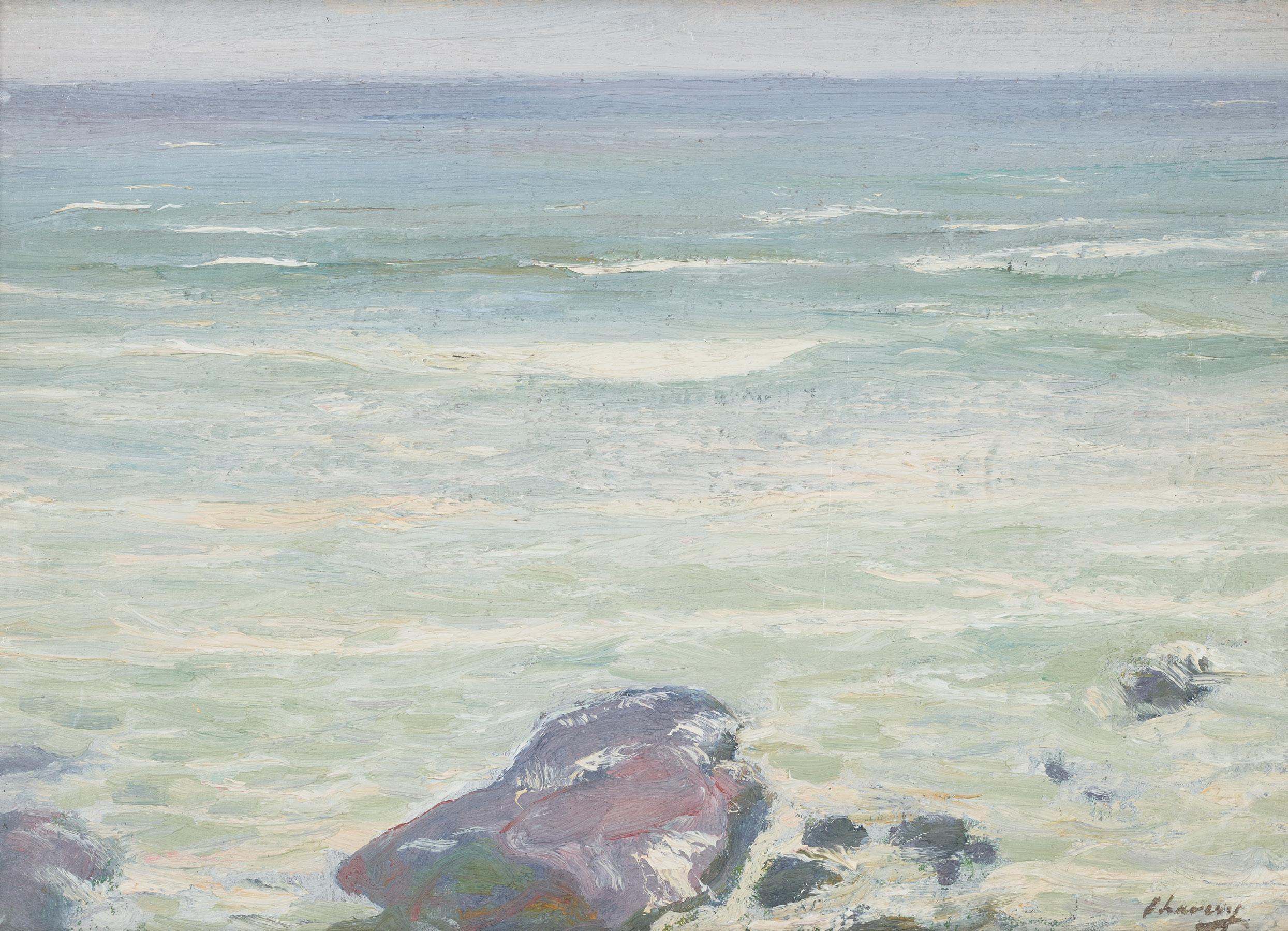
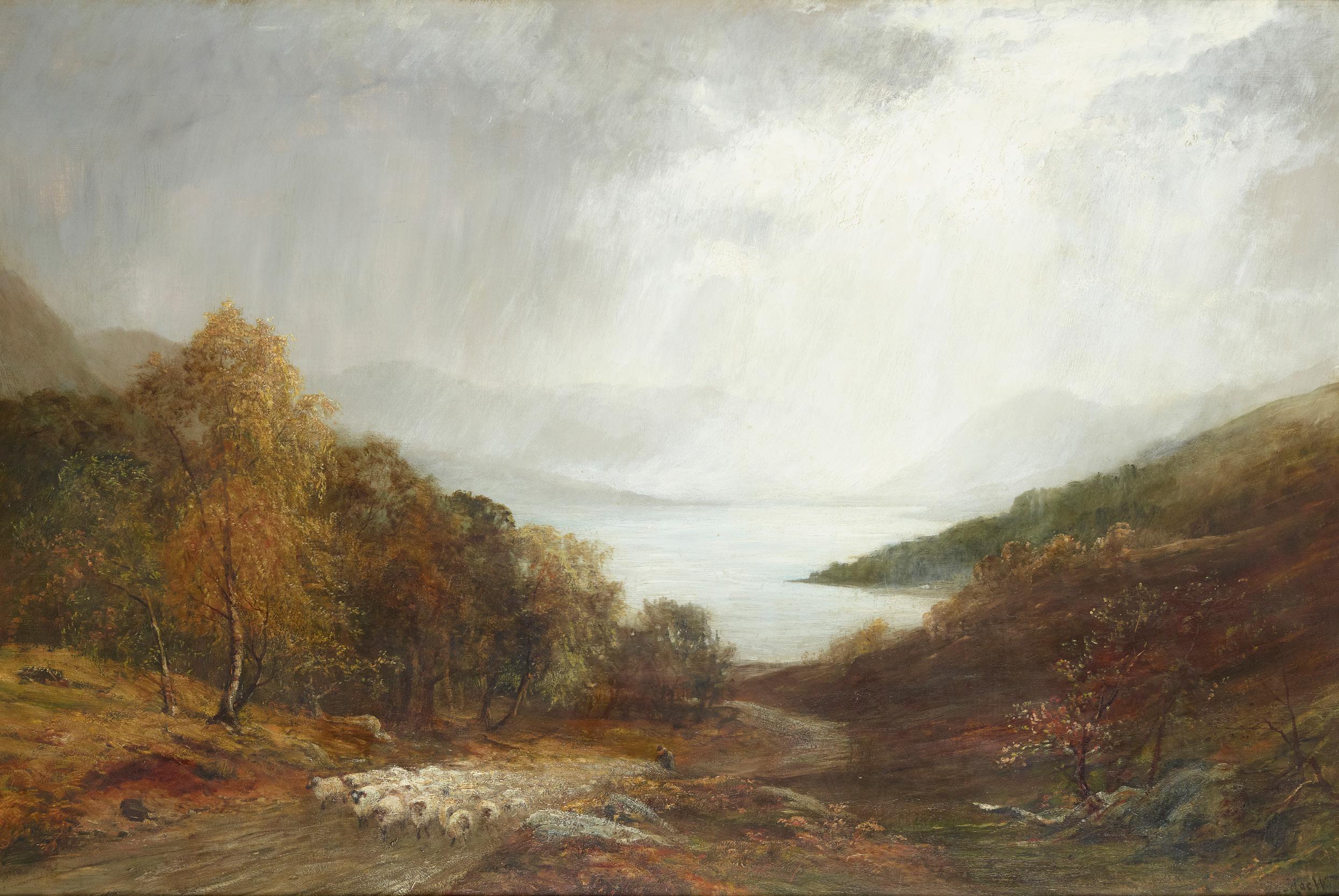
JOHN MACWHIRTER
R.A., H.R.S.A., R.I., R.E. (SCOTTISH 1839-1911)
A HIGHLAND DROVE ROAD
Signed with monogram, oil on canvas 91cm x 140cm (36in x 55in)
Provenance: Presented by Richard Edmiston Esq., Jnr., 1923.
Exhibited: Hankyu Department Store, Umeda Main Store, Osaka, Japan, The Beautiful Landscape of Scotland, 11-16 November 1983; touring to Tenmaya Department Store, Okayama Main Store, Okayama, Japan, 18-23 November 1983.
£2,000-3,000

A.R.S.A. (SCOTTISH 1825-1882)
GLOAMING ON THE EYE
Signed with monogram, oil on canvas
101.5cm x 130cm (40in x 51in)
Provenance: Presented by J. A. D. McKean, Esq., 1929.
£1,000-1,500

70
JOHN DUNCAN R.S.A., R.S.W. (SCOTTISH 1866-1945) MERLIN AND THE FAIRY QUEEN
Signed, oil on board
61cm x 51cm (24in x 20in)
Provenance: Presented by the Executors of the Artist, 1946.
£2,000-3,000
71
JAMES KAY R.S.A., R.S.W. (SCOTTISH 1858-1942) A CONTINENTAL STREET SCENE
Signed, oil on board 51cm x 35cm (20in x 14in)
Provenance: Presented by Richard Edmiston, Esq., 1937.
Note: With card from James Kay acknowledging his election to associateship of the Royal Scottish Academy, 22nd March 1933.
£2,000-3,000


STUART PARK (SCOTTISH 1862-1933) HYDRANGEA
Signed, oil on canvas
63.5cm x 81cm (25in x 32in)
Provenance: Presented by Mrs John S. Allan, 1937.
£1,500-2,000

73
JAMES BELL ANDERSON
R.S.A. (SCOTTISH 1886-1938) STILL LIFE
Signed, oil on canvas
46cm x 56cm (18in x 22in)
Provenance: Presented by Hugh Cochrane, Esq., 1928.
£800-1,200


74
ROBERT WEIR ALLAN R.S.A., R.S.W., R.W.S. (SCOTTISH 1852-1942)
RETURN OF THE FISHING FLEET
Signed, oil on canvas
61cm x 91cm (24in x 36in)
£2,000-3,000

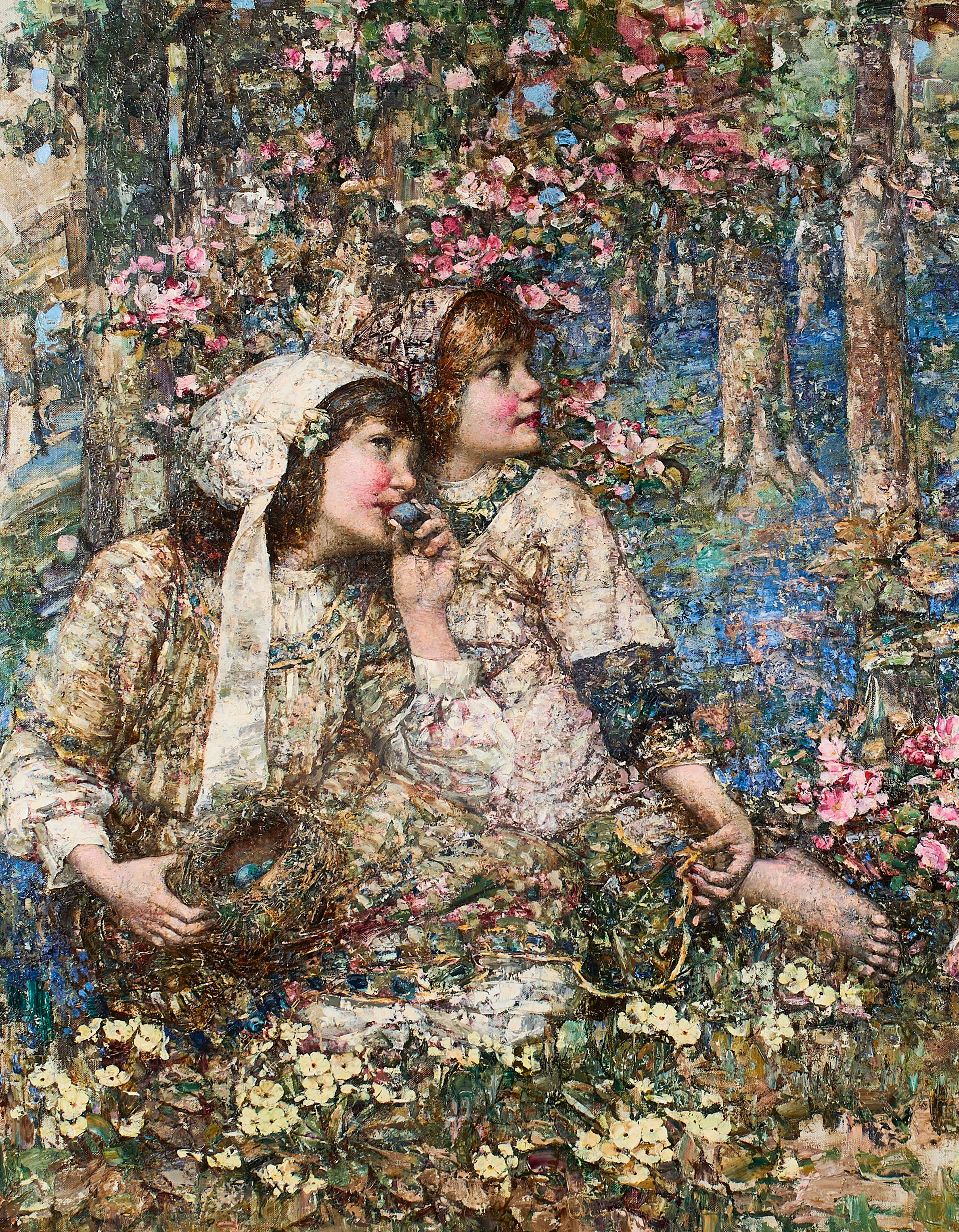

75
EDWARD ATKINSON HORNEL (SCOTTISH 1864-1933)
VOICES IN THE WOODLANDS
Signed and dated 1913, oil on canvas 122cm x 152cm (48in x 60in)
Provenance: Presented by James Begg, Esq., 1915.
Literature: A Paisley Legacy: The Paisley Art Institute Collection, Centenaries Catalogue, Paisley, 2015, p.36
£30,000-50,000
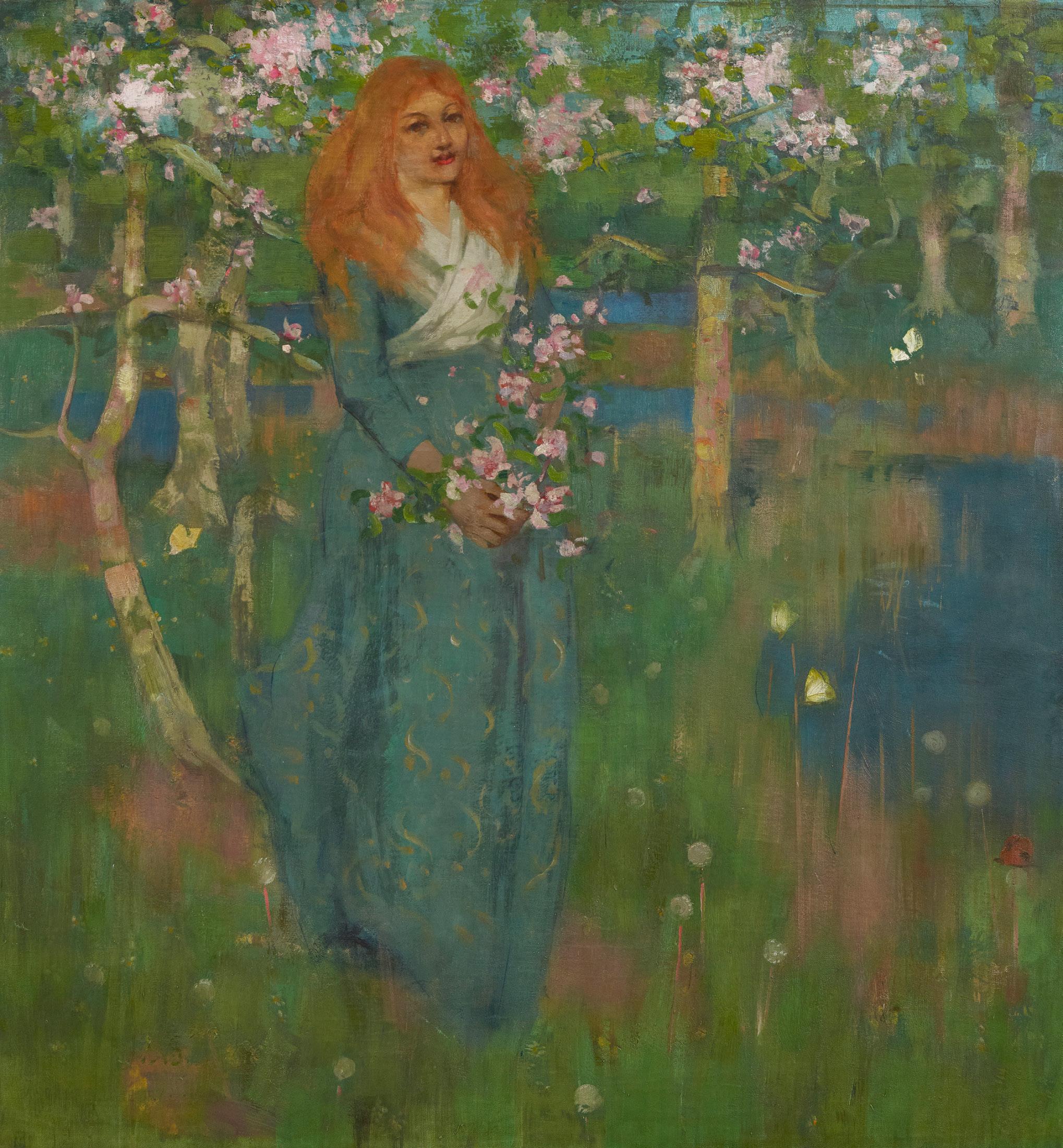
HENRY R.A., R.S.A., R.S.W. (SCOTTISH 1858-1943)
THE BANKS OF ALLAN WATER: SPRING
Signed, oil on canvas
111cm x 104cm (43.75in x 41in)
Provenance: Presented by J. A. D. McKean, Esq., 1922.
Exhibited: Paisley, A Paisley Legacy, The Paisley Art Institute Collection, Centenaries Catalogue, 2015, no.96.
Literature: Martin, David, The Glasgow School of Painting, 1897 (George Bell & Sons), p.26.
Note: Titled ‘Autumn’ in Illustrated Catalogue of Paintings, Drawings, Sculpture in the Collections of Paisley Corporation and Paisley Art Institute, 1948.
£20,000-30,000
On the Banks of Allan Water
When the sweet springtime did fall
Was the miller’s lovely daughter, Fairest of them all,
For his bride a soldier sought her, And a winning tongue had he!
On the Banks of Allan Water, None so gay as she.
On the Banks of Allan Water, When brown Autumn spreads its store
There I saw the Miller’s daughter, But she smiled no more.
For the summer grief had brought her And her soldier, false was he;
On the Banks of Allan Water, None so sad as she.
Neglected in the modern literature on the Glasgow Boys, George Henry’s decorative scheme of 1888 ‘illustrative of The Banks of Allan Water’ was, we are told by David Martin, installed in a ‘west of Scotland mansion-house’ and has ‘never been shown in public’. A major sequence of three works designed for an interior, this passing reference gives no hint of the scale and content of the triptych, the importance of which merits ongoing research, fuller scholarly debate and greater appreciation.
Best known for his 1890 collaboration with Edward Atkinson Hornel in The Druids, bringing in the Mistletoe (Glasgow Museums), and for his year-long trip to Japan with Hornel (1893-4), Henry’s perspicacity was hailed in A Galloway Landscape (1889) [illustrated below] for its instinctive accentuation of the abstract shapes and colours that characterise a very specific terrain. It was, wrote Baldwin Brown, ‘a manifesto’ for the new Glasgow painting.
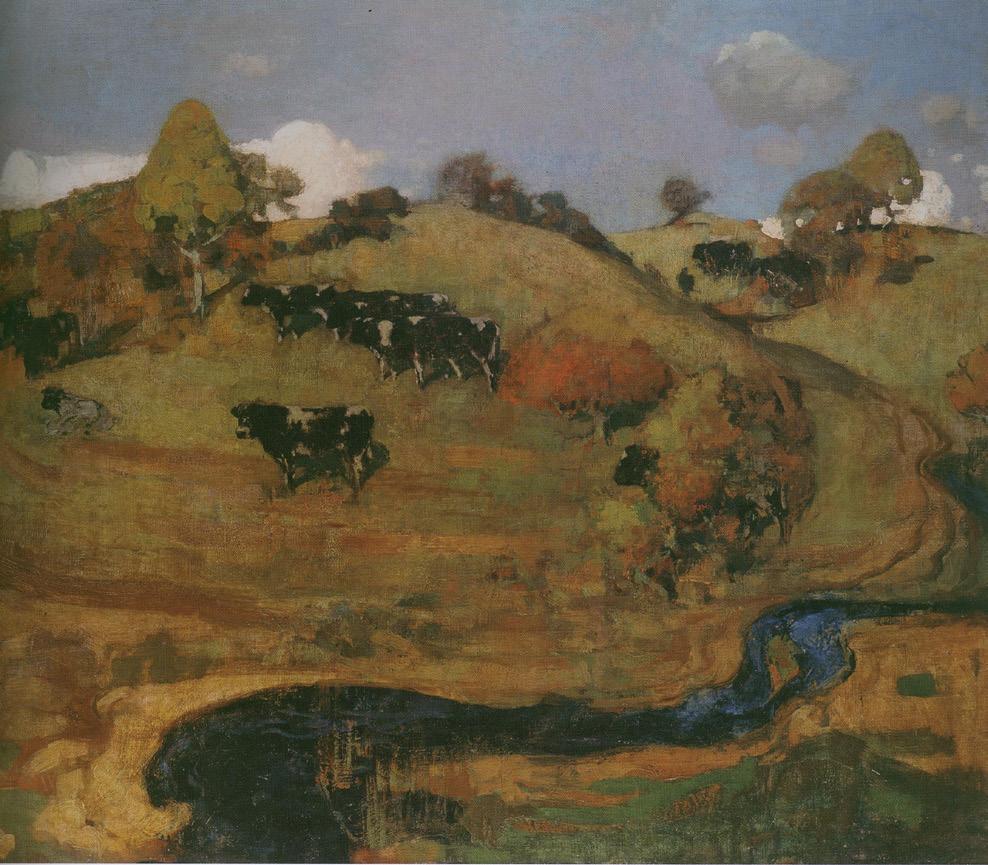
On the Banks of Allan Water, When the winter snow fell fast, There I saw the Miller’s daughter; Chilling blew the blast, But the miller’s lovely daughter, Both from care and cold was free;
On the Banks of Allan Water, There a corpse lay she.
All at once, it seemed as though the young artist had articulated new principles of landscape painting that were less concerned with documentary accuracy than with a fundamental understanding of the primordial forces governing its form. Contemporary critics scrambled to understand this painting, reaching for the term ‘Impressionism’ – a catch-all for anything not quite conventional in contemporary art. Only latterly did it seem possible that this was ‘obviously a post-impressionist picture … fully in spirit with some of the ideas being propagated contemporaneously by the rebellious Gauguin and his circle in France’.
Although the signs were there, it has never been fully understood how and why Henry arrived at this large ambitious work. Smaller works, ‘boilers’ he called them, provide a series of clues, but these often indicate ambivalence, and the sense that the artist’s work in the preceding years could move in any of a number of directions. Although he had visited key sites –Brig-o-Turk, Cockburnspath and Kirkcudbright – the melting pots for the new Glasgow painting, Henry was no camp follower, and anxious to resolve the visual dilemmas posed by Bastien-Lepage’s Naturalism, he sought to make his mark. His ambition would be expressed in a triptych based on three of the four seasons that would resolve the conflict between direct observation and symbolic intent. To do this he turned to a popular song, On the Banks of Allan Water, taking each of its three verses as a separate theme.
The popular ‘Broadside’ ballad in three stanzas that gives rise to this important sequence is thought to have been written by the gothic novelist, Matthew Lewis (1775-1818). It describes the love of a miller’s daughter who withers and dies like the flowers of spring when her soldier-lover is untrue to her. It is considered to have been one of the inspirations for Thomas Hardy’s Far from the Madding Crowd (1874). Its afterlife includes a famous rendition by Adelina Patti, with music by Emma Raymond, sung in the 1880s and recorded in 1905, and, with an elaborated plot, On the Banks of Allan Water was used as the basis for a movie in 1916.

It appears that Henry’s triptych was acquired by James Anderson Dunlop MacKean (1849-1932), future Paisley Burgh Treasurer and Honorary President of the Paisley Art Institute. His grandfather and father, William MacKean and William Muir MacKean, served as Provosts of the town (1879-1882 & 1908-1913). A director of William MacKean Ltd, the family firm of starch producers at St Mirren’s Walks, Macdowall Street, Paisley, it is possible that he commissioned the Henry series for ‘Rozelle’, the JAD MacKean family home. The commission, if such it was, may have come through James Mavor, who took over editorship of The Scottish Art Review in October 1888, from Macaulay Stevenson.
Despite the fact that Henry had visited Bridge of Allan, near Stirling in December 1887 for a gathering of the Glasgow Boys at Cambuskenneth, the confluence of the Allan with the Forth at Bridge of Allan is unlikely to have had much to do with his choice of subject matter for the series - his three paintings being closely related to the girl’s decline in ‘sweet springtime’, ‘brown Autumn’ and ‘Winter snow’. Of greater significance are the connections with Henry’s recent works and the confidence this project gave him in moving forward from Lepage-centred Naturalism to a more decorative and Symbolist facture seen in later addresses to ‘Spring’ and ‘Autumn’. The present Spring and Autumn however, with their echoes of Lepage’s Jeanne d’Arc … [illustrated above] should be regarded as an envoi to this earlier phase of Henry’s career.
As for the prone figure in Winter, it may well be the case that Henry was aware of the Edward Burne-Jones’s Briar Rose series or indeed, John William Waterhouse’s Ophelia, a work to be shown at the Royal Academy in 1889, but these are unlikely precedents. Equally improbable is its anticipation of Giovanni Segantini’s 1891 Symbolist painting, The Punishment of Lust, (Walker Art Gallery, Liverpool) with its prone figures and frieze-like format. It is more probable that the artist was impressed by fellow ‘Glasgow Boy’ Alexander Roche’s Good King Wenceslas (Private Collection) of the previous year. In his own work, the mise-en-scène – a grid of vertical tree trunks punctuating a hillside and glowing – as in the present picture, had been a consistent feature for a number of years, while in his practice and in that of Roche and Macaulay Stevenson, the sinking sun and rising red-yellow moon became a familiar motif.
In Winter, trees and dead fronds form a warp with the deep indigo weft of Allan Water, flowing calmly, and for ever, under its fiery moon. Romantic anthropomorphism - growth and decay, a river-run, a music of time, in tune with human forms and feelings. More than simply ‘illustrative’ of a popular air, this is nature’s poetic requiem for lost love, and the key turning point in Henry’s career.
We are grateful to Professor Kenneth McConkey for writing this catalogue entry.

GEORGE HENRY R.A., R.S.A., R.S.W. (SCOTTISH 1858-1943)
THE BANKS OF ALLAN WATER: AUTUMN
Oil on canvas
111cm x 104cm (43.75in x 41in)
Provenance: Presented by J. A. D. McKean, Esq., 1922.
£20,000-30,000
Exhibited: Paisley, A Paisley Legacy, The Paisley Art Institute Collection, Centenaries Catalogue, 2015, no.97.
Literature: Martin, David, The Glasgow School of Painting, 1897 (George Bell & Sons), p.26; McConkey, Kenneth, ‘Listening to the Voices: A study of some aspects of Jules Bastien-Lepage’s Jeanne d’Arc …’ Arts Magazine, (New York), vol.56, no.5, January 1982, p.156 (illus fig 5).
Note: Titled ‘Autumn’ in Illustrated Catalogue of Paintings, Drawings, Sculpture in the Collections of Paisley Corporation and Paisley Art Institute, 1948.
78
GEORGE HENRY R.A., R.S.A., R.S.W. (SCOTTISH 1858-1943)
THE BANKS OF ALLAN WATER: WINTER
Signed, oil on canvas
111cm x 221cm (43.75in x 87in)
Provenance: Presented by J. A. D. McKean, Esq., 1932.
£15,000-25,000

Exhibited: Paisley, A Paisley Legacy, The Paisley Art Institute Collection, Centenaries Catalogue, 2015, no.98.
Literature: Martin, David, The Glasgow School of Painting, 1897 (George Bell & Sons), p.26; Fowle, Frances, ‘Het Decoratieve Symbolisme van de Glasgow Boys’, in Willemijn Lindenhovius, ed., The Glasgow Boys, Schots Impressionisme 1880-1900, 2015, (exhibition catalogue, Drents Museum, Assen, The Netherlands), p.143, (illus fig 48).
Note: Titled ‘Winter’ in Illustrated Catalogue of Paintings, Drawings, Sculpture in the Collections of Paisley Corporation and Paisley Art Institute, 1948.
1 David Martin, The Glasgow School of Painting, 1897 (George Bell & Sons), p. 26.
2 G Baldwin Brown, The Glasgow School of Painting, 1908, (James MacLehose & Sons), p. 32.
3 George Buchanan, ‘A Galloway Landscape’, Scottish Art Review, vol VII, no. 4, 1960, p. 16.
4 ‘Boilers’, ie potboilers, are referred to on several occasions in letters to Hornel – eg in the summer of 1891 (undated, from Hapland Cottage, Dunlop; Hornel Trustees, Kirkcudbright) Henry talks of expecting ‘… in a few days to start and turn the boilers out at so much per week’.
5 See https://digital.nls.uk/broadsides/view/?id=16484
6 I am grateful to Curzon Tussaud, Michael Durning, Muir MacKean and Colin MacKean (emails 2010-2016), for information on the MacKean collections.
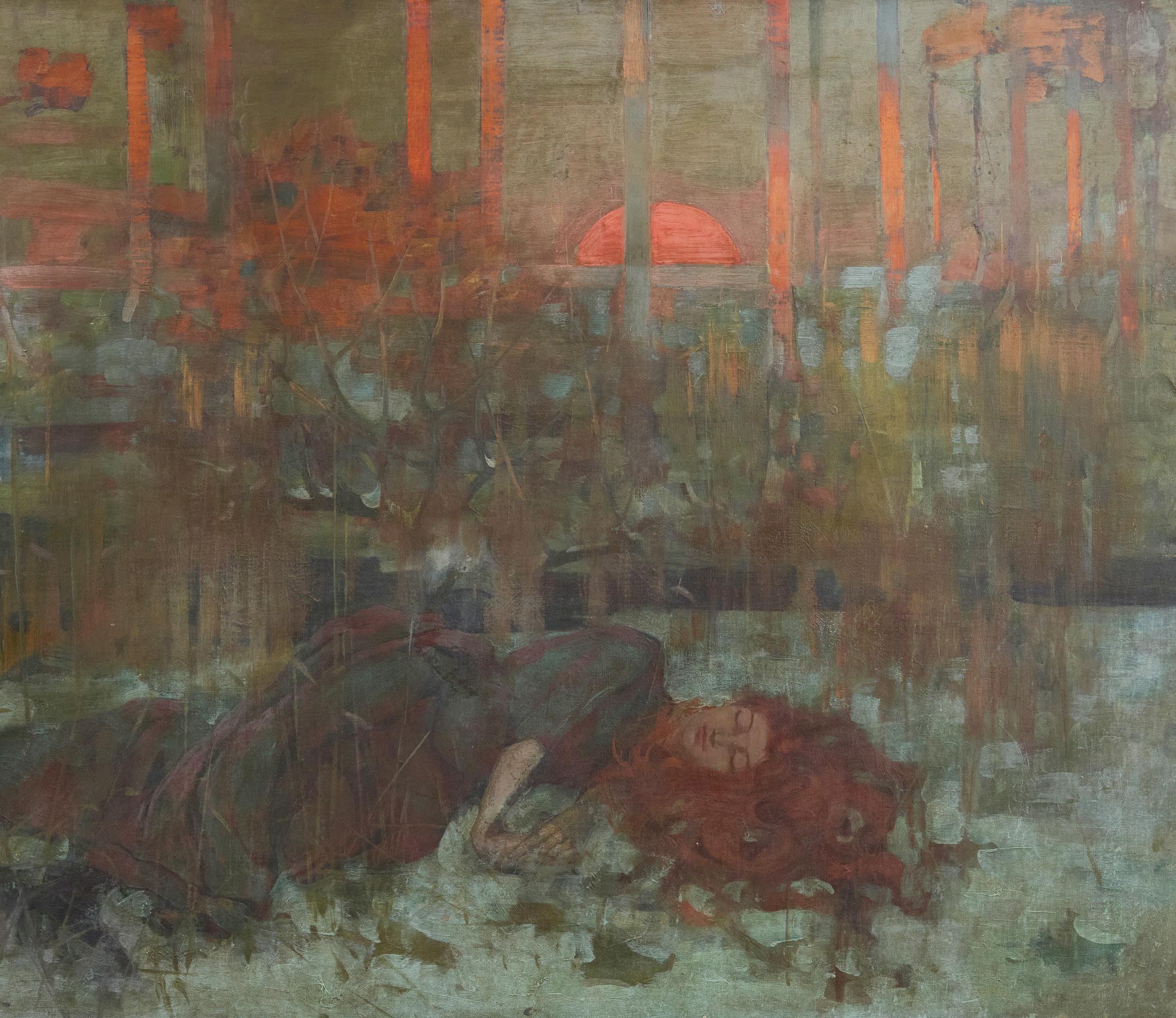
7 An undated letter (c. November 1889?, Hornel Trust, Kirkcudbright) reminds Hornel of ‘ … when Mavor gave me the commission to paint those panels’ and asks ‘could you give me your ideas of what a reasonable price would be?’ He then goes on to give sizes for all three that roughly equate with the present canvases, noting that each contains a figure and concluding that ‘in fact they are just pictures’ – meaning that they are canvases, not wall-paintings nor works on panel. This tantalising reference must refer to the present series. Later undated references, 1889-1892, refer to a decorative scheme or schemes, mentioning John Keppie, and in one instance referring to a house under completion not being ready to take the works. These require further detailed research.
8 Several later exhibited works bear titles such as ‘Spring’ or ‘Autumn’ – notably that shown at the International Society of Sculptors, Painters and Gravers (ISSPG) in 1898.
9 Burne-Jones had been working on the theme of Sleeping Beauty since 1871 and was currently engaged upon the new series to be presented at Agnew’s gallery in 1890 (Buscot Park, Oxfordshire). Waterhouse’s Ophelia (Private Collection) followed his highly successful Lady of Shalott, 1888 (Tate) and although, adopting the Lepage mannerisms, was regarded as a poor sequel to his work of the previous year.
10 Segantini’s canvas was shown in 1898 alongside Henry’s later version of Spring at the ISSPG in 1898.
11 James Nairn’s caricature of ‘King Henry of Luna’ made for the serio-comic journal, Quiz, (Billcliffe, 2008, p. 182) shows the artist standing in front of tall reeds and full moon.
LEON AUGUSTIN L’HERMITTE (FRENCH 1844-1925)
RETOUR DU TROUPEAU A LA FERME DU VIVIER, C.1902
Signed, pastel
33cm x 43cm (13in x 17in)
Provenance: Fulton Bequest, 1933.
Exhibited: The Barbican Art Gallery, London, Impressionism in Britain, 1955, no.125;
Newcastle Polytechnic Art Gallery, Peasantries, 1981-82, no. 38, and tour to Sheffield, Paisley and Aberdeen Art Galleries.z
Literature: Fonteney, Monique Le Pelley, Leon Lhermitte, Catalogue Raisonne, 1991, Editions Cercle d’Art, Paris, Pastels, no.102.
£2,000-3,000
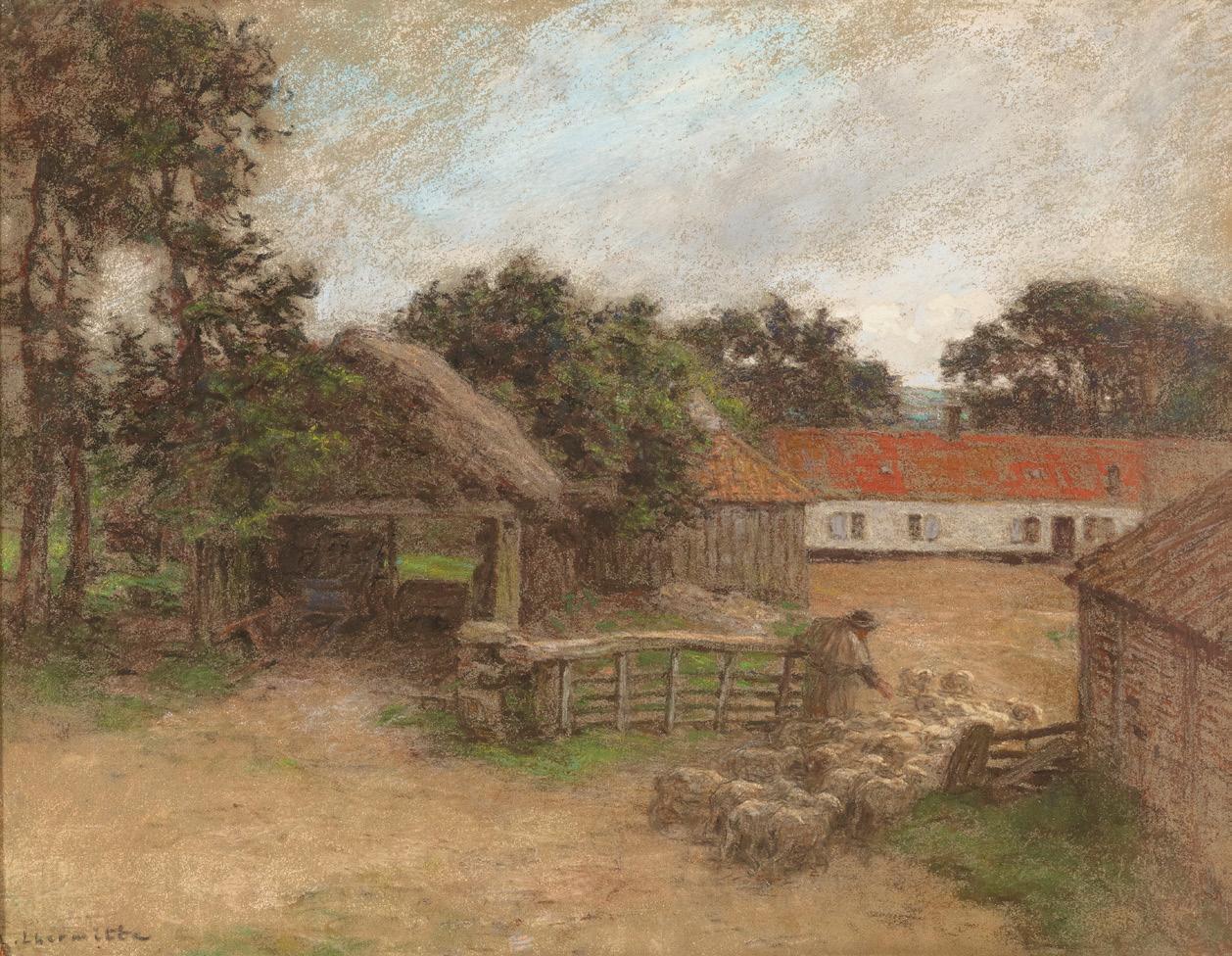
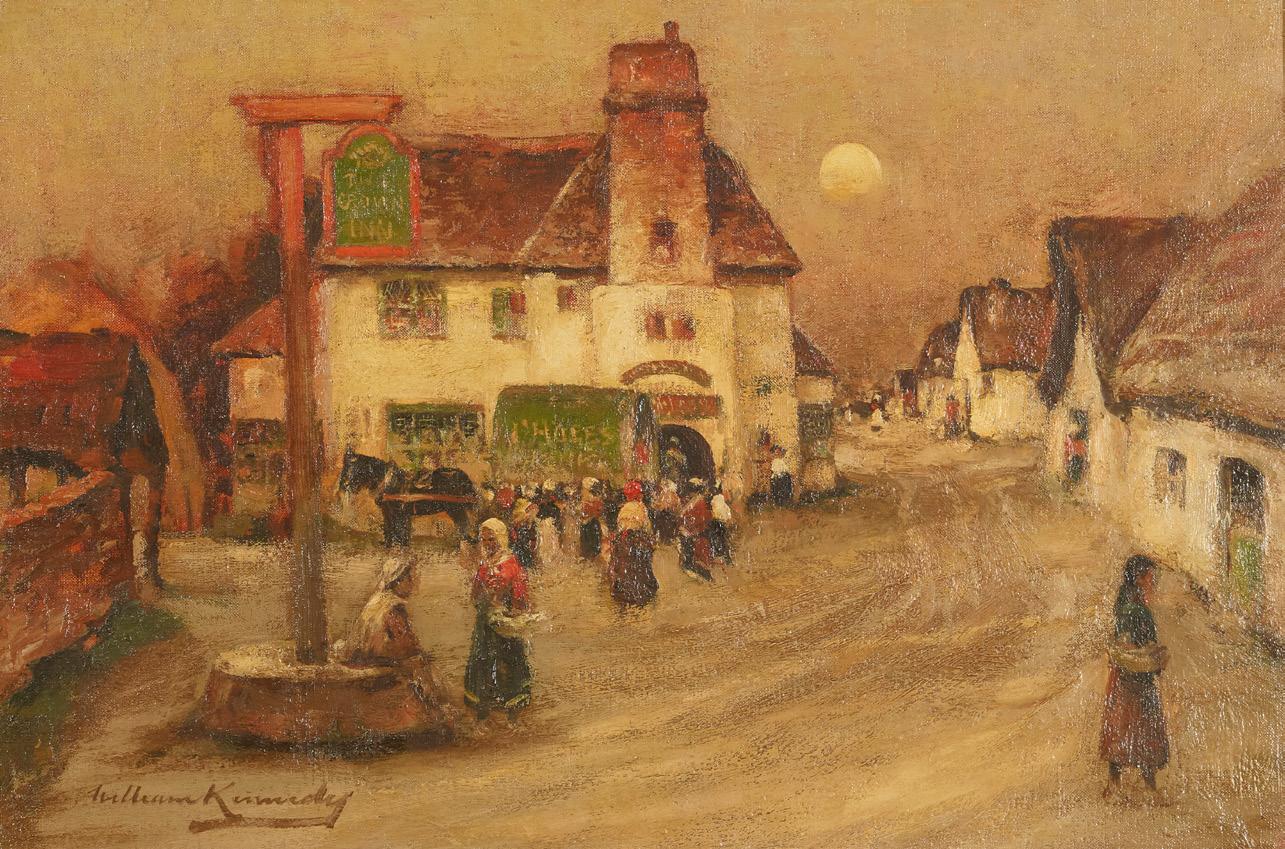
80
WILLIAM KENNEDY (SCOTTISH 1859-1918) MARKET-PLACE, WOOLHAMPTON
Signed, oil on canvas
41cm x 61cm (16in x 24in)
Provenance: Presented by James Begg, Esq., 1919.
£1,500-2,000
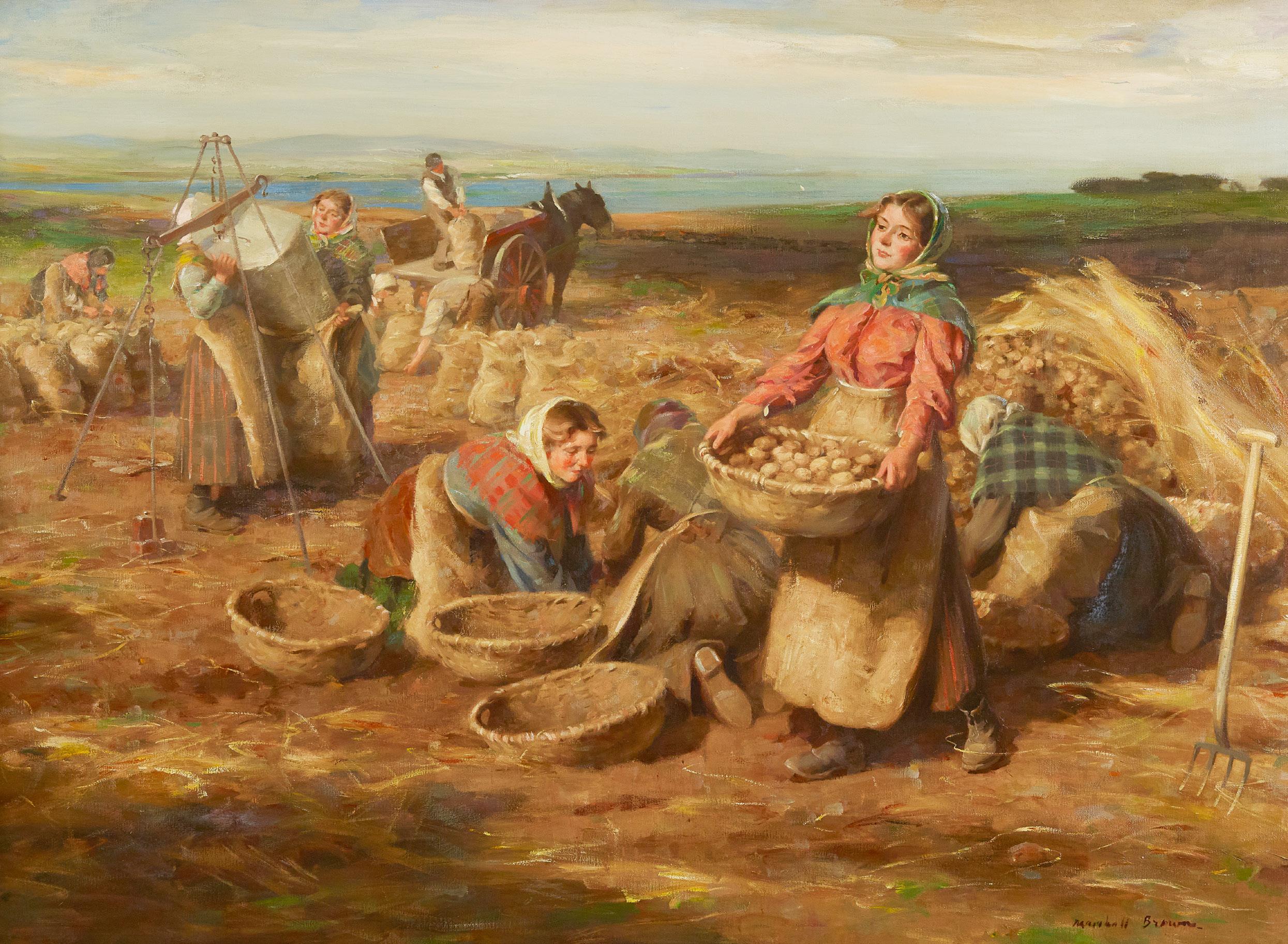
81
WILLIAM MARSHALL BROWN R.S.A., R.S.W. (SCOTTISH 1863-1936) WALING POTATOES
Signed, oil on canvas 131cm x 183cm (51.5in x 72in)
Provenance: Presented by the Artist, 1936.
Exhibited: Royal Scottish Academy 1916, no.145 £8,000-12,000
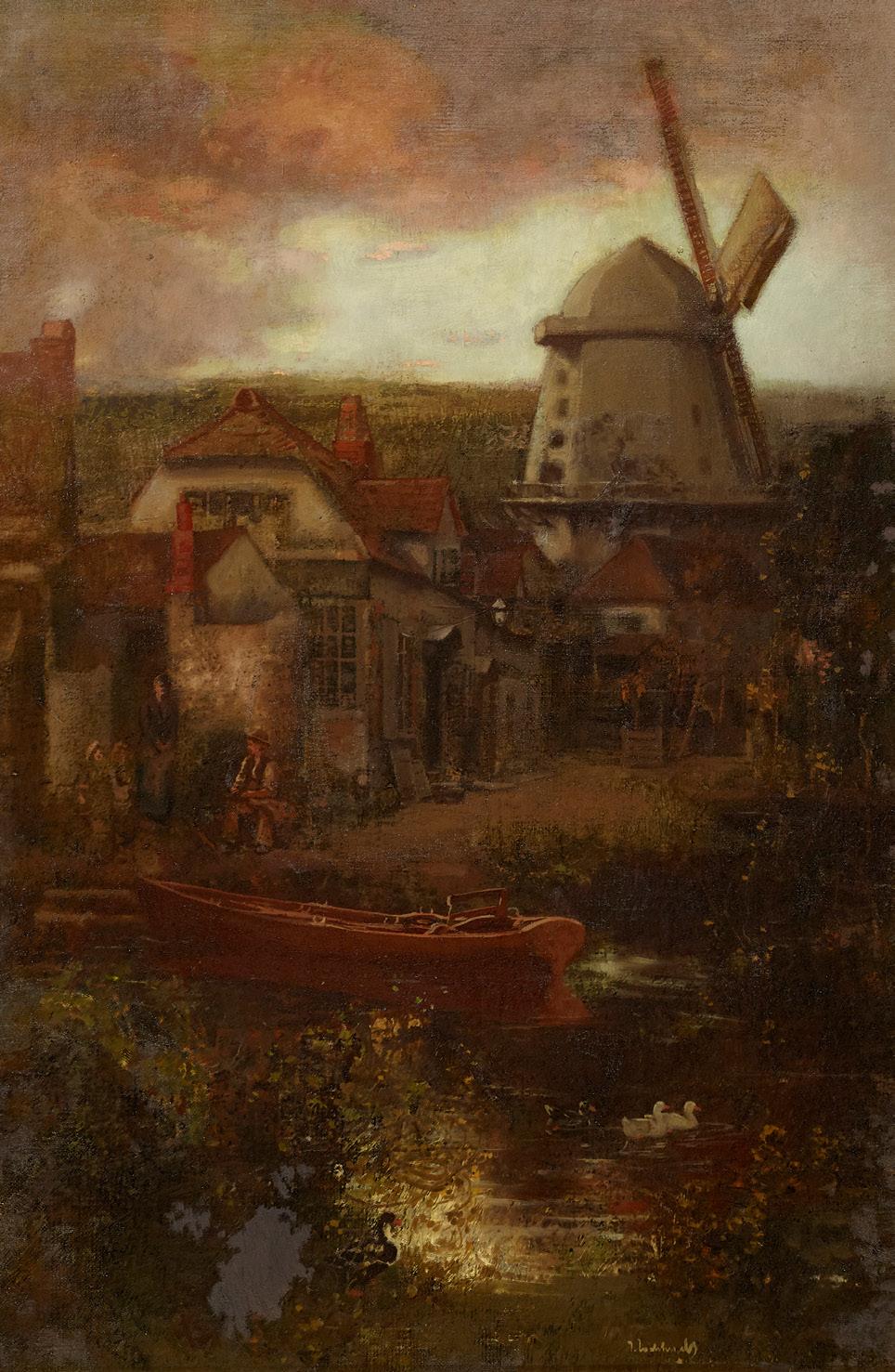
82
JOHN LOCHHEAD R.B.A. (SCOTTISH 1866-1921)
THE WINDMILL, HOLLAND
Signed, oil on canvas
76cm x 46cm (30in x 18in)
Provenance: Presented by A. M. McDougall, Esq., 1932.
£600-800

83
WILLIAM KENNEDY (SCOTTISH 1859-1918)
THE VIDETTE
Signed, oil on canvas
61cm x 51cm (24in x 20in)
Provenance: Presented by James Begg, Esq., 1924.
£1,200-1,800
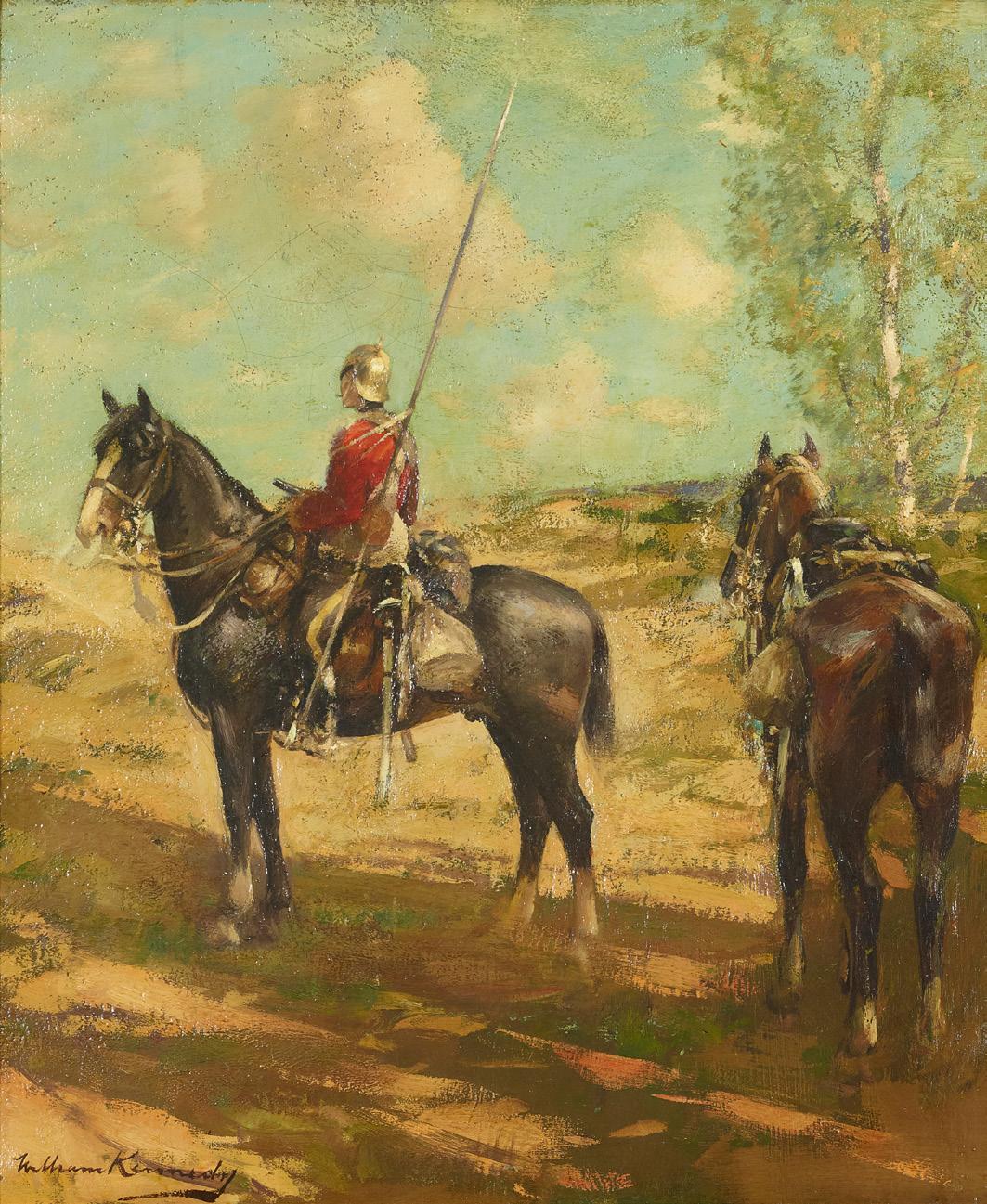
84
LÉON AUGUSTIN L’HERMITTE (FRENCH 1844-1925)
THE OLD WELL
Signed, pastel
32cm x 23cm (12.5in x 9in)
£600-800

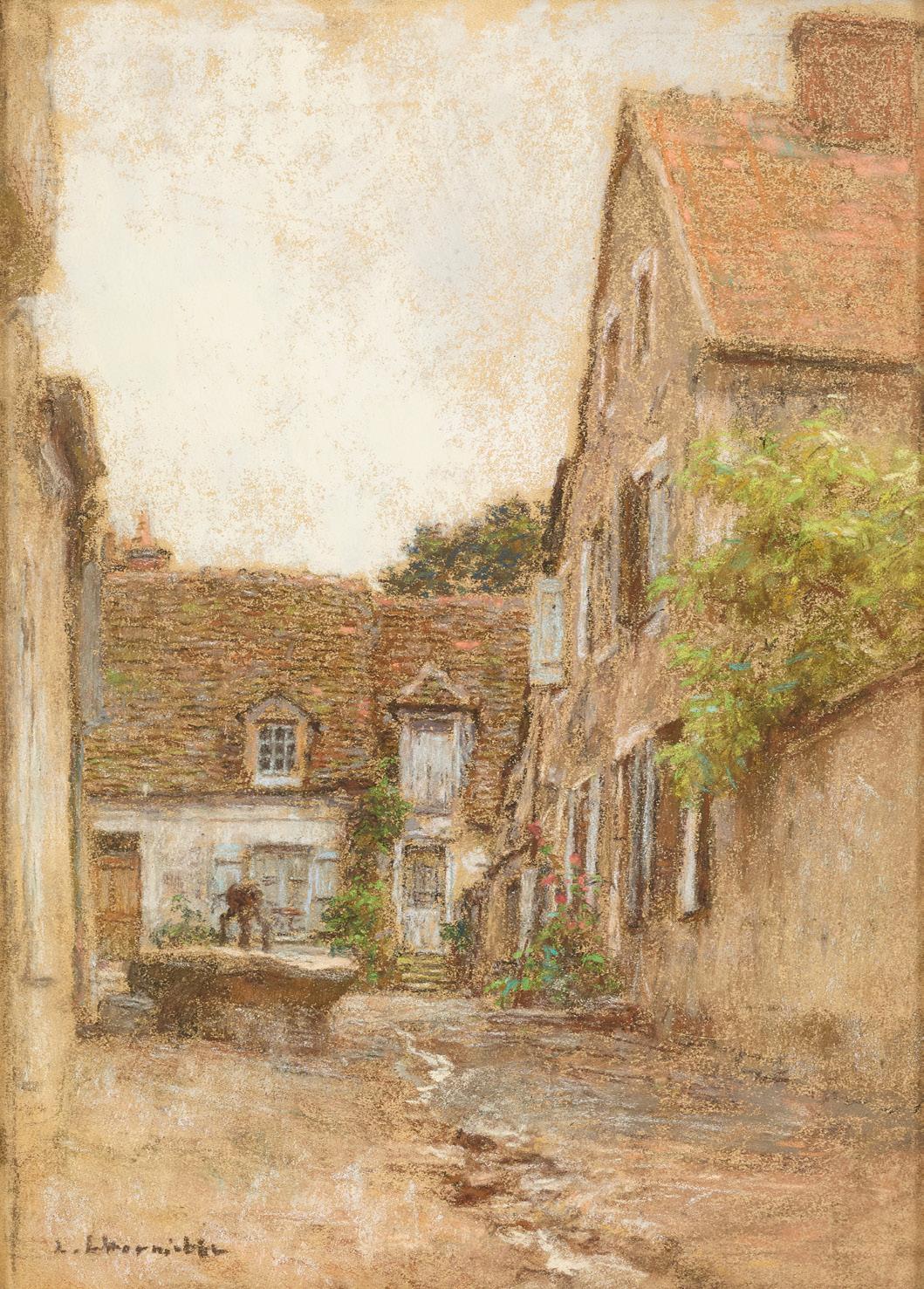
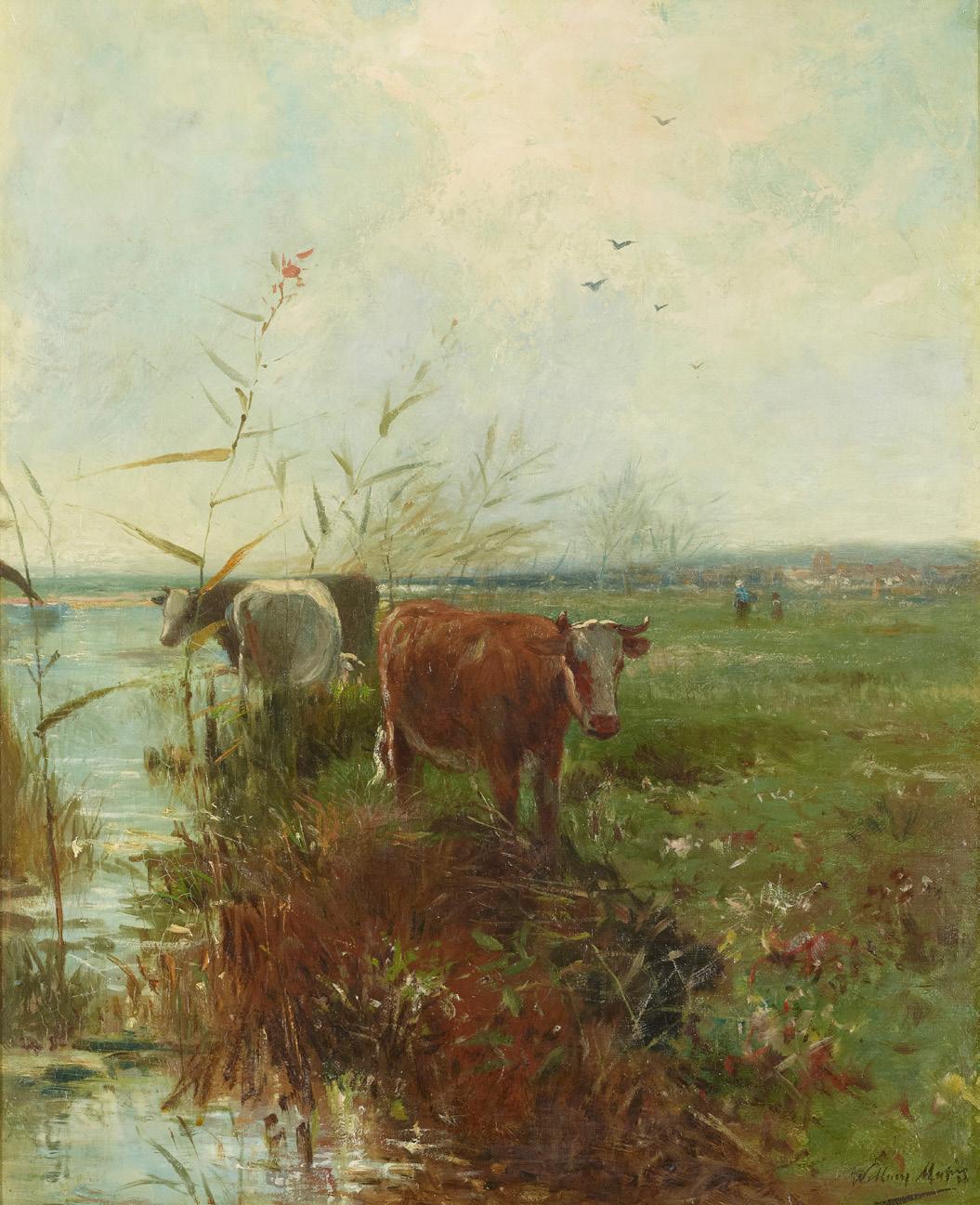
85
WILLEM MARIS (DUTCH 1844-1910)
LANDSCAPE WITH CATTLE
Signed, oil on canvas
61cm x 51cm (24in x 20in)
£1,000-1,500
Stansmore Dean has not benefited from the same reappraisal as Bessie MacNicol, who was her peer and a fellow student at the Glasgow School of Art. As such, when Dean’s paintings appear sporadically on the market, it is an intriguing and pleasing discovery for many collectors. Today her work is situated canonically in the (retrospectively titled) group ‘The Glasgow Girls’.
Dean was born in Glasgow in 1866, the daughter of the artist and master engraver Alexander Davidson Dean. Inheriting her father’s talent, she attended the Glasgow School of Art alongside MacNicol, as well as David Gauld and Charles Rennie Mackintosh. An anecdote from 1908 reveals as much about the fervency of Dean’s admiration for Mackintosh, as it does about the strength of her character: Dean was convenor of the Decoration Committee of the Society of Lady Artists’ Club in Glasgow, charged with supervising alterations to their Clubhouse at 5 Blythswood Square. She put up a good fight to have Mackintosh take on the job, but was ultimately overruled by the Council. Clearly a forceful and principled individual, Dean promptly resigned in protest.
Further evidence of her wilful spirit was her passion for travel. She was the first female artist to win the Haldane Travelling Scholarship bursary, which she used to travel to Paris to study with Gustave Courtois at the Académie Colarossi. Dean would paint in Europe most summers, notably the South of France, Brittany and Holland. She and her husband, the artist Robert Macaulay Stevenson, would eventually live in France for several years. They made a home in Montreuil-sur-Mer between the years 1910 and 1926, during which time they attended the needs of soldiers making their way to The Front.
After the War, the couple relocated to Kircudbright, where they had access to the studio of Jessie M. King. In 1944 Dean, whose art practice had been halted by failing sight in her later years, died in Castle Douglas.
As with the work of many of her female peers of the time, her work has been largely overlooked. Though she continued to paint all her life, inevitably other responsibilities, and, indeed, two World Wars, impeded her development and productivity. Her pictures were nonetheless well received at points during her lifetime, as is reflected by her broad exhibition history. Dean had work shown regularly at the Glasgow Institute, Paisley, Liverpool’s Walker Art Gallery,

86
STANSMORE RICHMOND LESLIE DEAN (SCOTTISH 1866-1944) THE BRETON GIRL Oil on canvas
76cm x 61cm (30in x 24in)
Literature: A Paisley Legacy: The Paisley Art Institute Collection, Centenaries Catalogue, Paisley, 2015, p.41; Rostek, Charlotte, Scottish Women Artists, The Fleming Collection, London, 2023, p.18.
£3,000-5,000
and twice at the International Society of London. Pieces were also selected for display further afield in Buffalo, New York, and Toronto. The crowning moment for Dean may well have been her acceptance into the Paris Salon, ‘Société Nationale des Beaux-Arts’, in 1899. It is of interest to note that her androgynous name meant her work was often assumed to be by a male hand, potentially a factor which worked in her favour.
Her subjects were frequently female sitters, often clothed in regional traditional dress. The work offered here is typical of this subject matter, showing a Breton girl in profile. Likely dating from the earlier years of her career, around the late 1890s, her brushwork belies her Glasgow-by-way-of-Paris art education, but is notable for a distinctive softness and her facility to infer the texture of cloth and hair with subtle and minimalistic brushwork. Her works have a gentle, airy quality - evocative of a pensive romanticism. The Breton Girl also features the clever decorative device of a climbing rose incising diagonally across the composition, framing the sitter’s head.


87
LOUIS EUGÈNE LAMBERT (FRENCH 1825-1900) KITTENS
Signed, oil on canvas
23cm x 33cm (9in x 13in)
Provenance: Fulton Bequest, 1933.
£600-900
88
JAMES ELDER CHRISTIE (SCOTTISH 1847-1914) HALLOWE’EN FROLICS
Signed, oil on canvas
51cm x 76cm (20in x 30in)
Provenance: Presented by Richard Edmiston, Esq., 1930.
£1,000-1,500

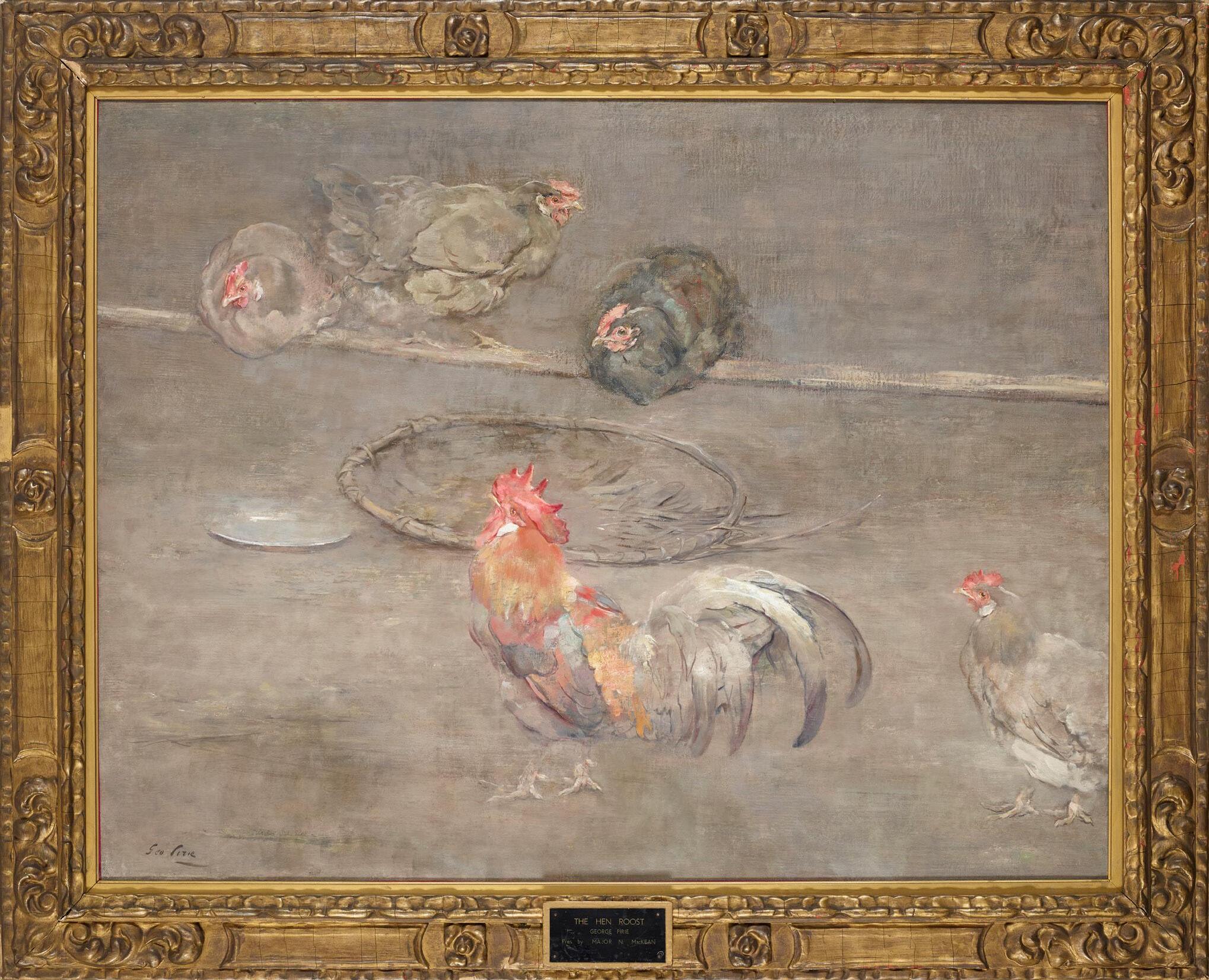

SIR GEORGE PIRIE
P.R.S.A., H.R.S.W., L.L.D. (SCOTTISH 1864-1946) THE HEN ROOST
Signed, oil on canvas 86cm x 112cm (34in x 44in)
Provenance: Presented by Major Norman McKean, 1932. £2,000-3,000

Olive Carleton Smyth embodied the Glasgow School’s polymath approach to image-making. Her work implemented sgraffito, illumination, gesso and fresco techniques, and she engaged as much with developments made by her Glasgow contemporaries as she did with exemplars from Celtic design and Japanese and Viennese Secessionist art. Carleton Smyth worked closely with her two sisters, one of whom was a costume designer and the other a composer, but regrettably few biographical details about Olive Carleton Smyth’s life have survived. A 1937 Glasgow art critic affords us a glimpse of this elusive artist’s character by describing her as ‘small, fast taking and tweed-suited.’ (Press clipping, ‘As Dainty as a Baby’s Sneeze’. Glasgow Herald, 1937, Glasgow School of Art Press Cutting Book; Jude Burkhauser (ed), Glasgow Girls, Women in Art and Design 18801920, Canongate, Edinburgh, 1990, pp.170-171).
Bacchanale is an outstanding example of Olive Carleton Smyth’s talent, and dates to the period just before she was appointed Head of the Design Department at the Glasgow School of Art. The prancing troupe of figures and animals in the Bacchanalian revel are organised around diagonal lines from the lower right to the upper left, which lends the complex composition a decorative refinement. Carleton Smyth is recorded as having enjoyed painting on vellum as it ‘gave the effect of figures drawn on ivory’. (ibid.)

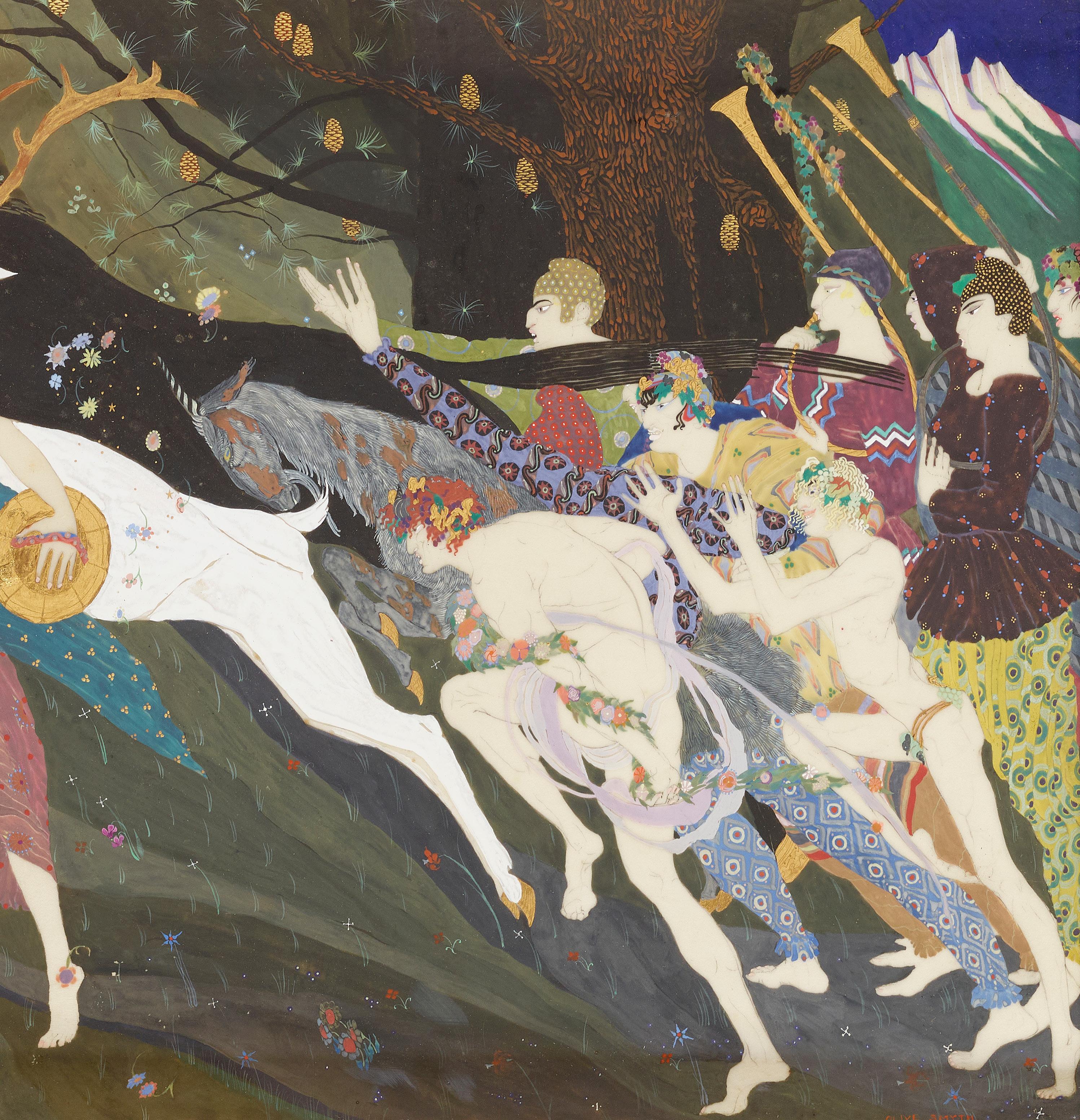
OLIVE CARLETON SMYTH (SCOTTISH 1882-1949) BACCHANALE
Signed, gouache and gold paint on vellum
32cm x 48cm (12.5in x 18.75in)
Provenance: Presented by J. A. D. McKean, 1929.
£4,000-6,000
Exhibited: Kirkcudbright Town Hall, The Glasgow Girls 1920-1960, 2014, cat.no.8.
Literature: Jude Burkhauser (ed), Glasgow Girls, Women in Art and Design 1880-1920, Canongate, Edinburgh, 1990, p.171, illustrated, no.226; Liz Arthur, Glasgow Girls - Artists and Designers, 1920-1960, Kirkcudbright 2000 Ltd, 2014,
cat.no.8, reproduced in colour p.75; Charlotte Rostek, Scottish Women Artists, The Fleming Collection, London, 2021, a detail reproduced in colour p. 18.
Note: Titled ‘Bacchant’ in Illustrated Catalogue of Paintings, Drawings, Sculpture in the Collections of Paisley Corporation and Paisley Art Institute, 1948.
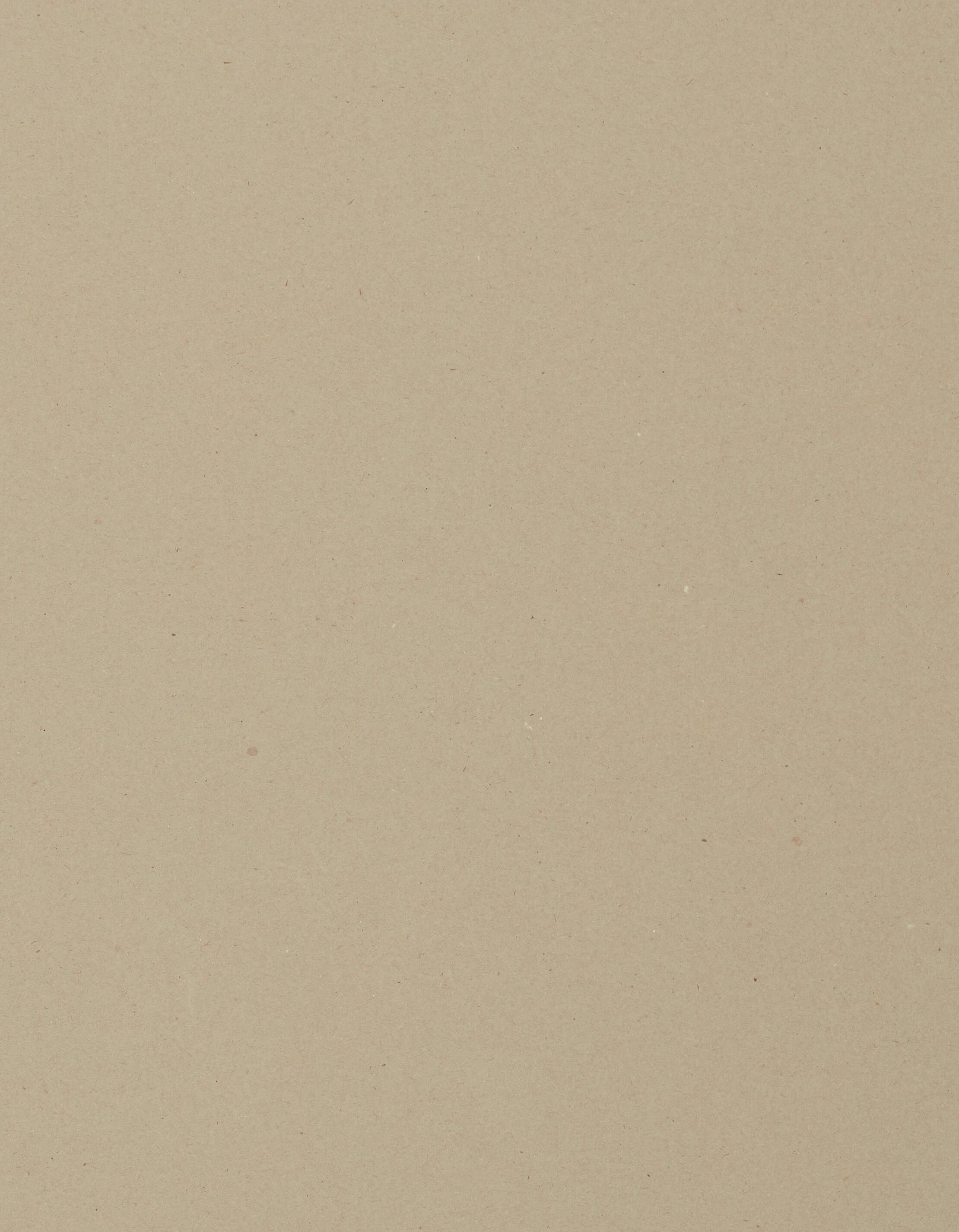
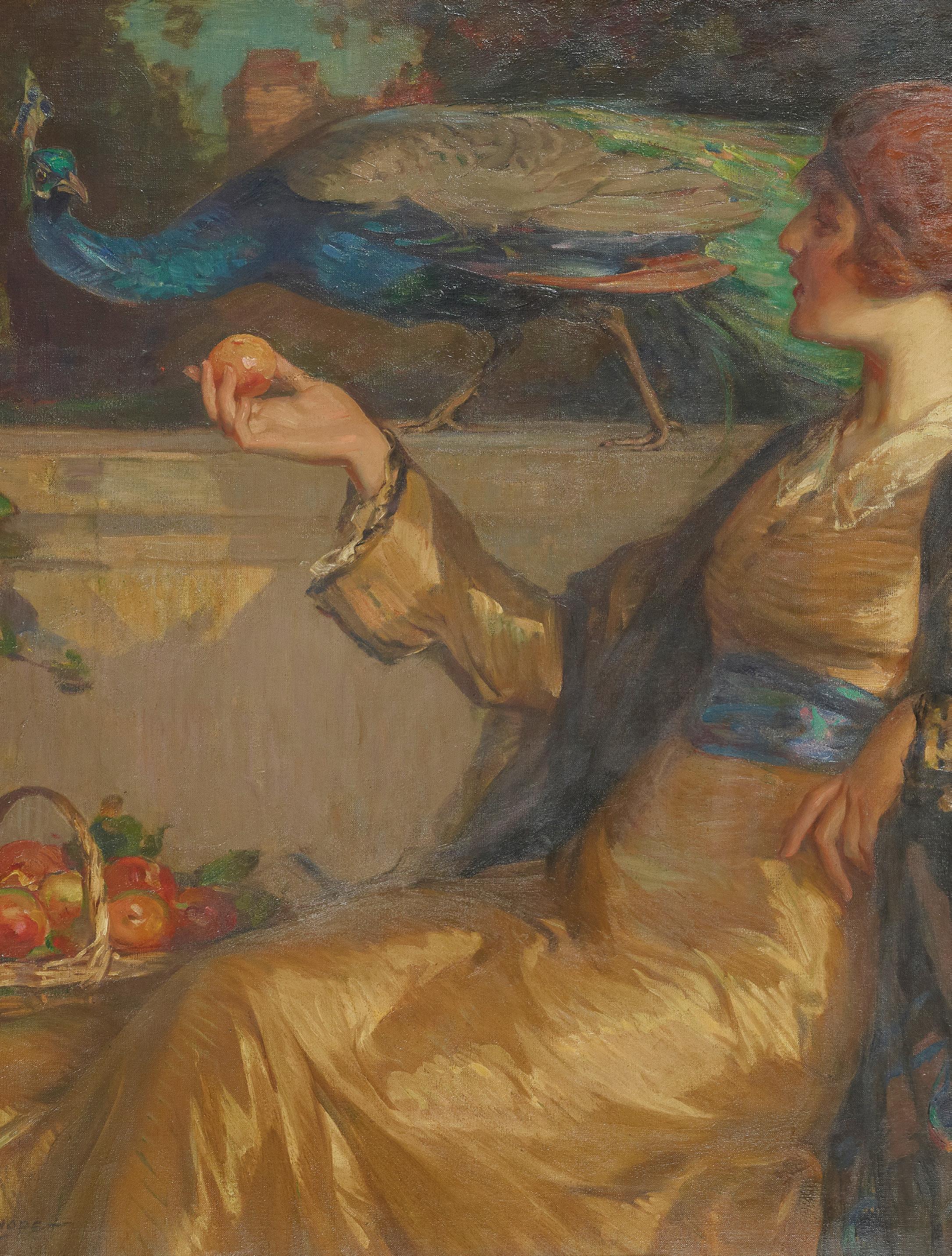
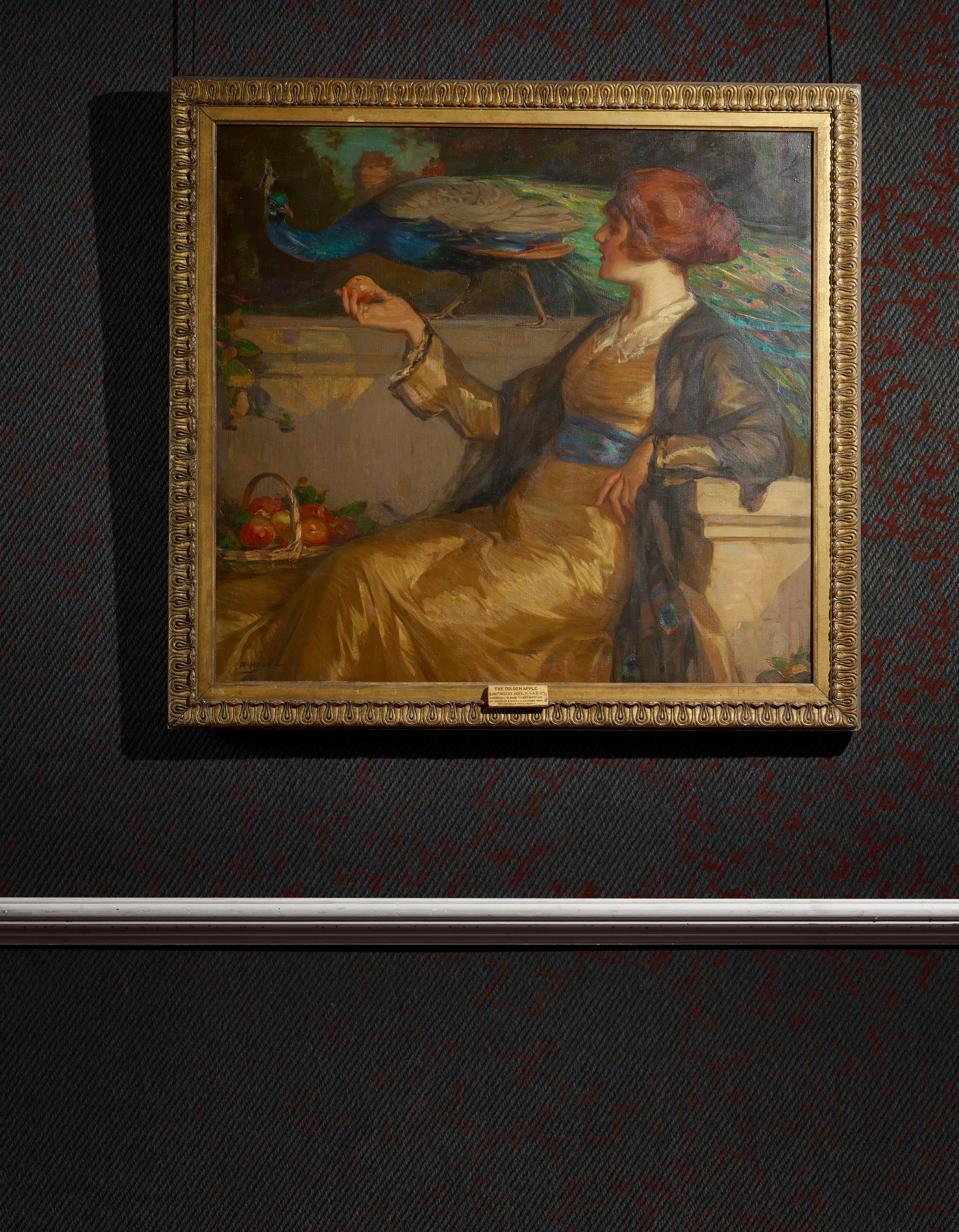
Signed, oil on canvas
94cm x 102cm (37in x 40in)
Provenance: Presented
£5,000-8,000
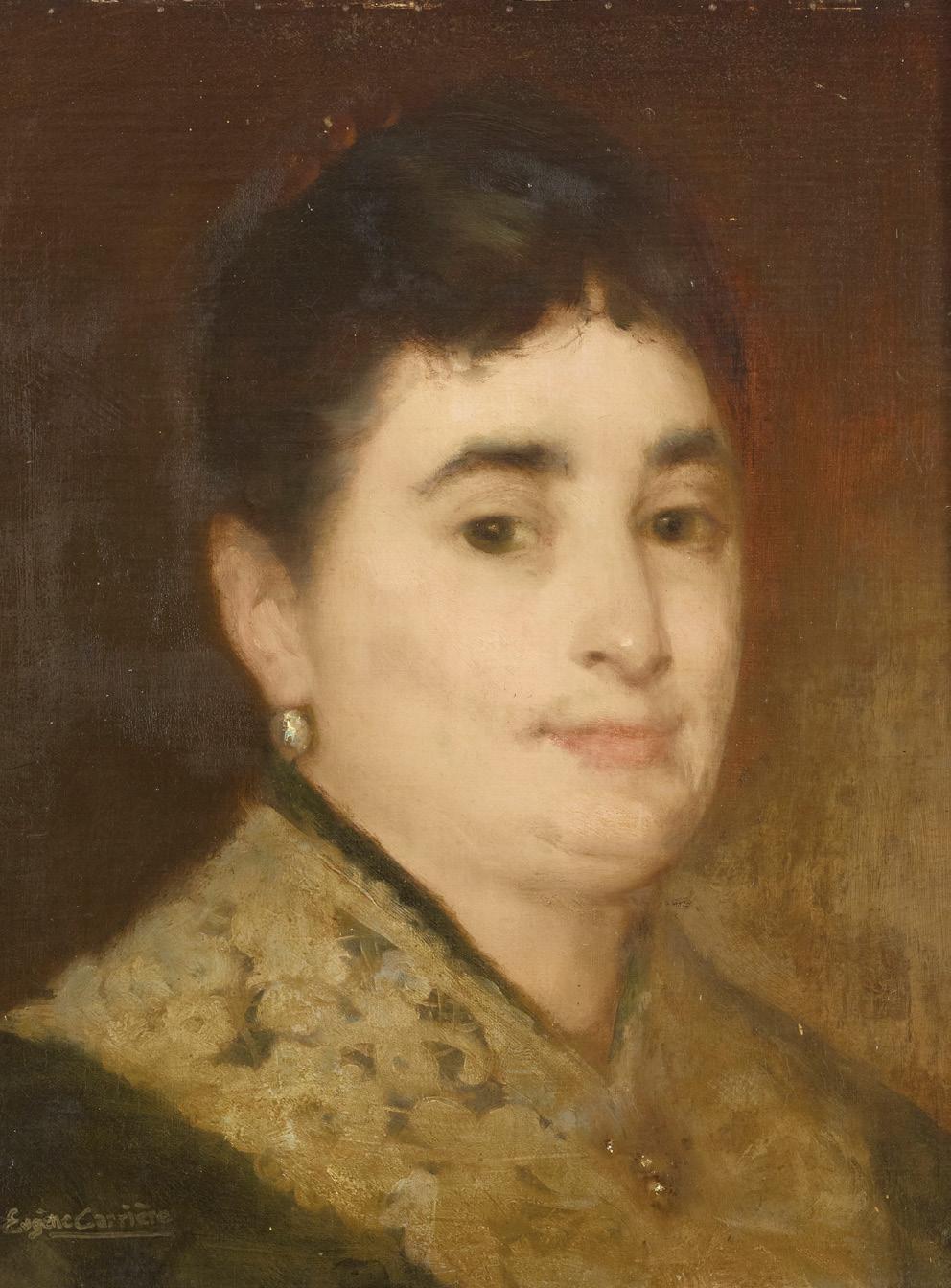
92
EUGÈNE CARRIÈRE (FRENCH 1849-1906)
FEMME COL BRODERIE
Signed, oil on canvas 38cm x 30.5cm (15in x 12in)
Provenance: Fulton Bequest, 1933.
£1,000-2,000
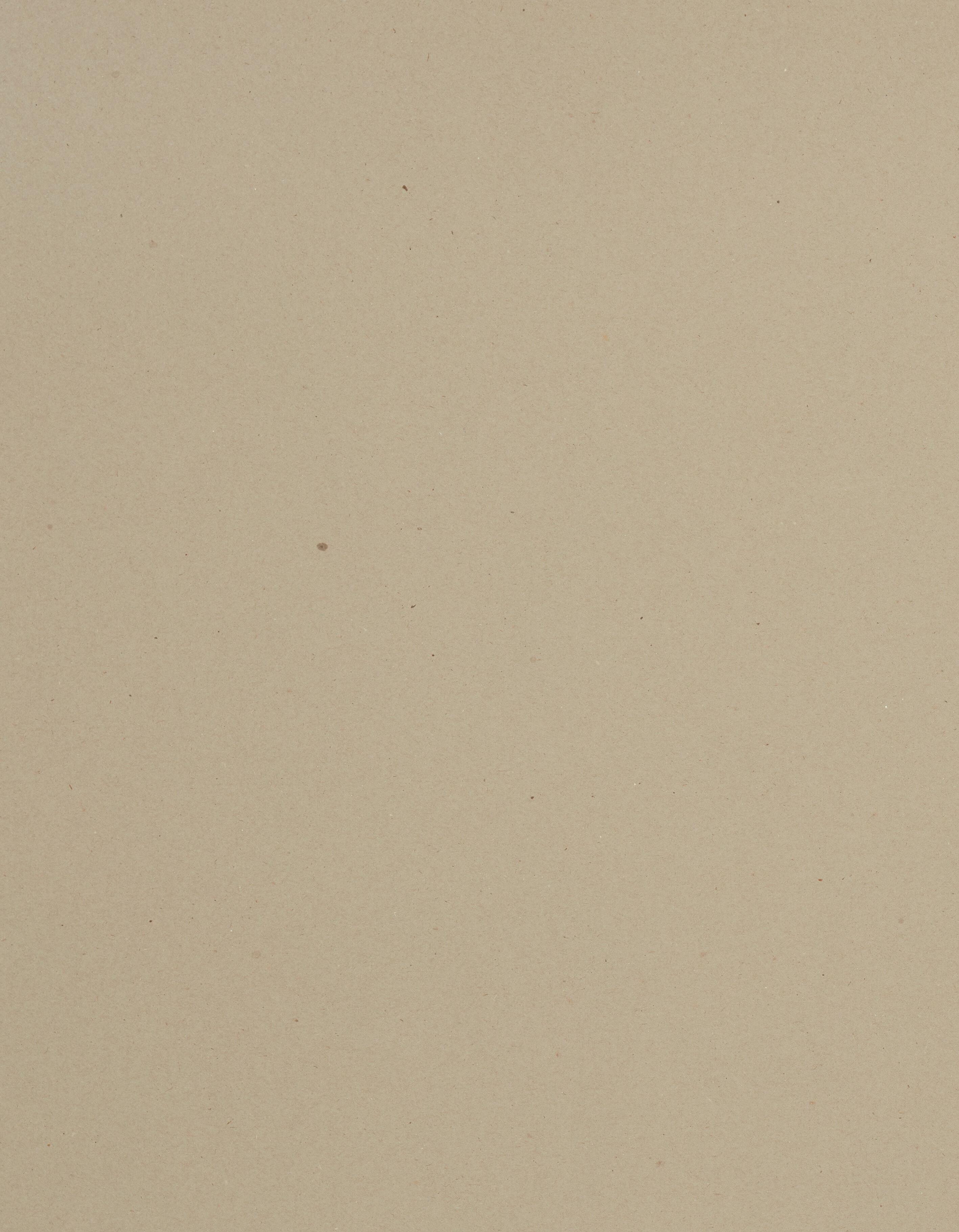
93
WILLIAM STEWART (SCOTTISH 1823-1906) THE PENNY WHISTLE
Signed with initials, signed and inscribed with title verso, oil on canvas 58cm x 46cm (22.75in x 18in)
Provenance: Presented by Sir Thomas Glen Coats, 1913.
£2,000-3,000
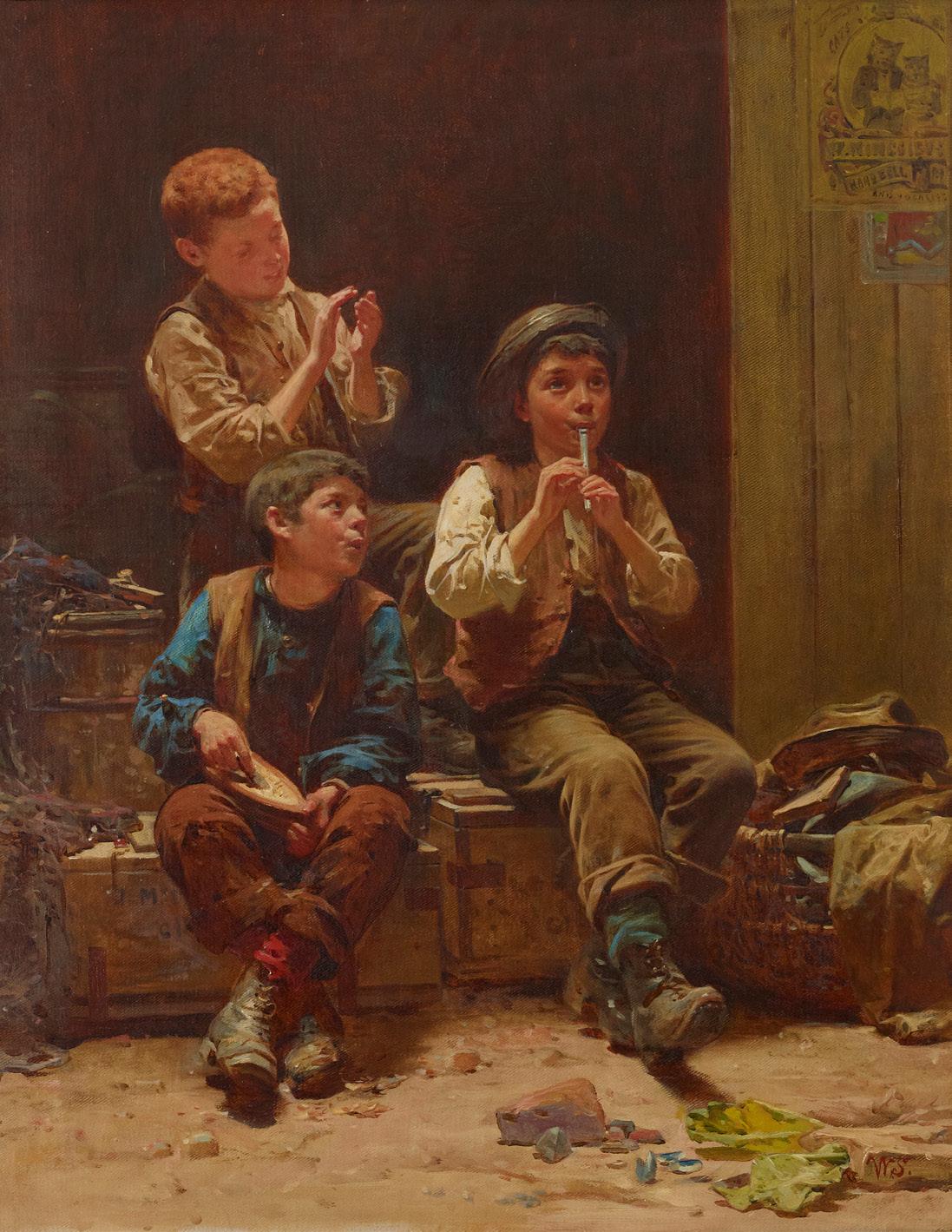
94 § COWAN DOBSON R.B.A. (SCOTTISH 1893-1980) A MODEL
Signed and indistinctly dated, oil on canvas 56cm x 46cm (22in x 14in)
Provenance: Presented by Richard Edmiston, Esq., 1937.
£2,000-3,000

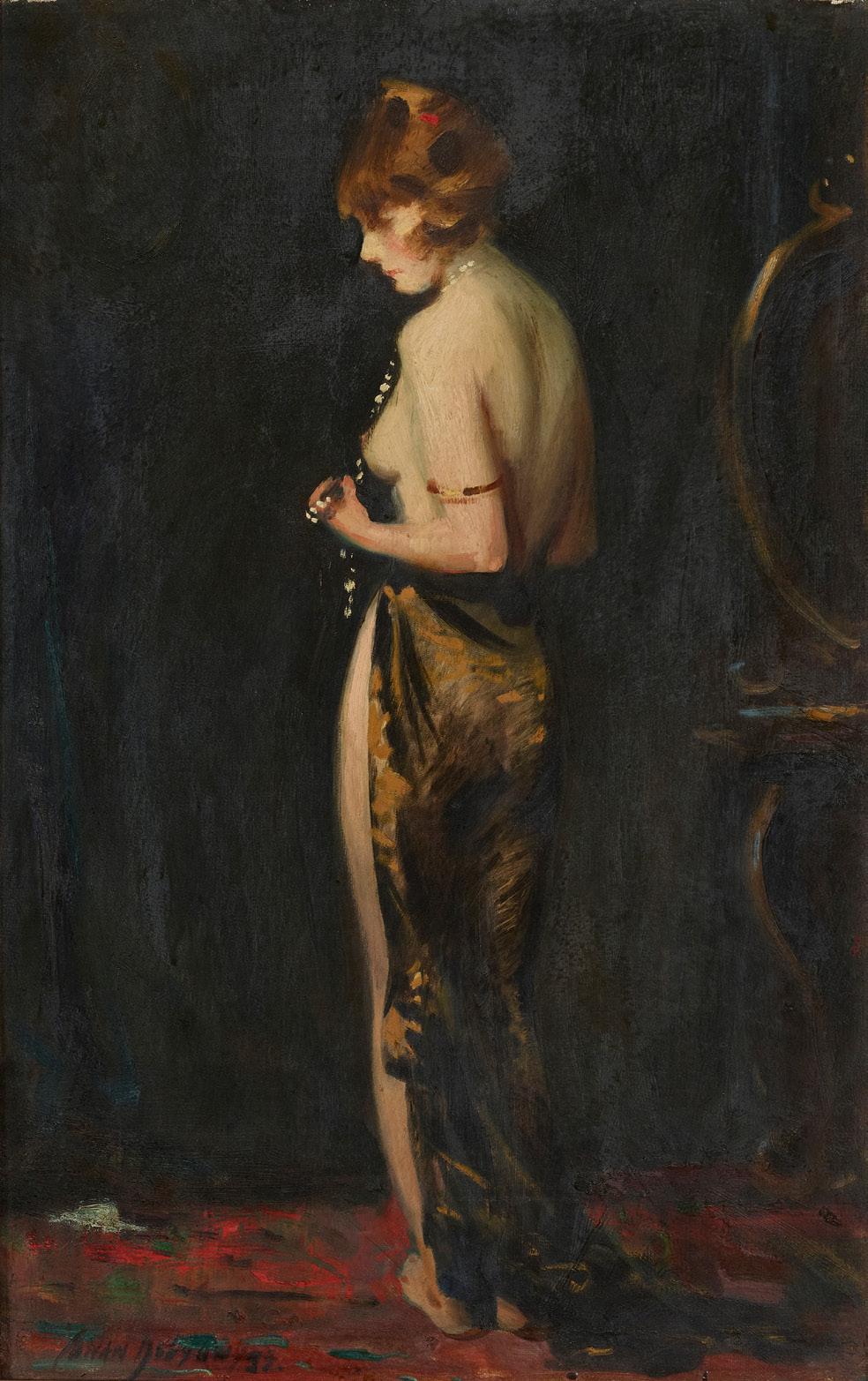
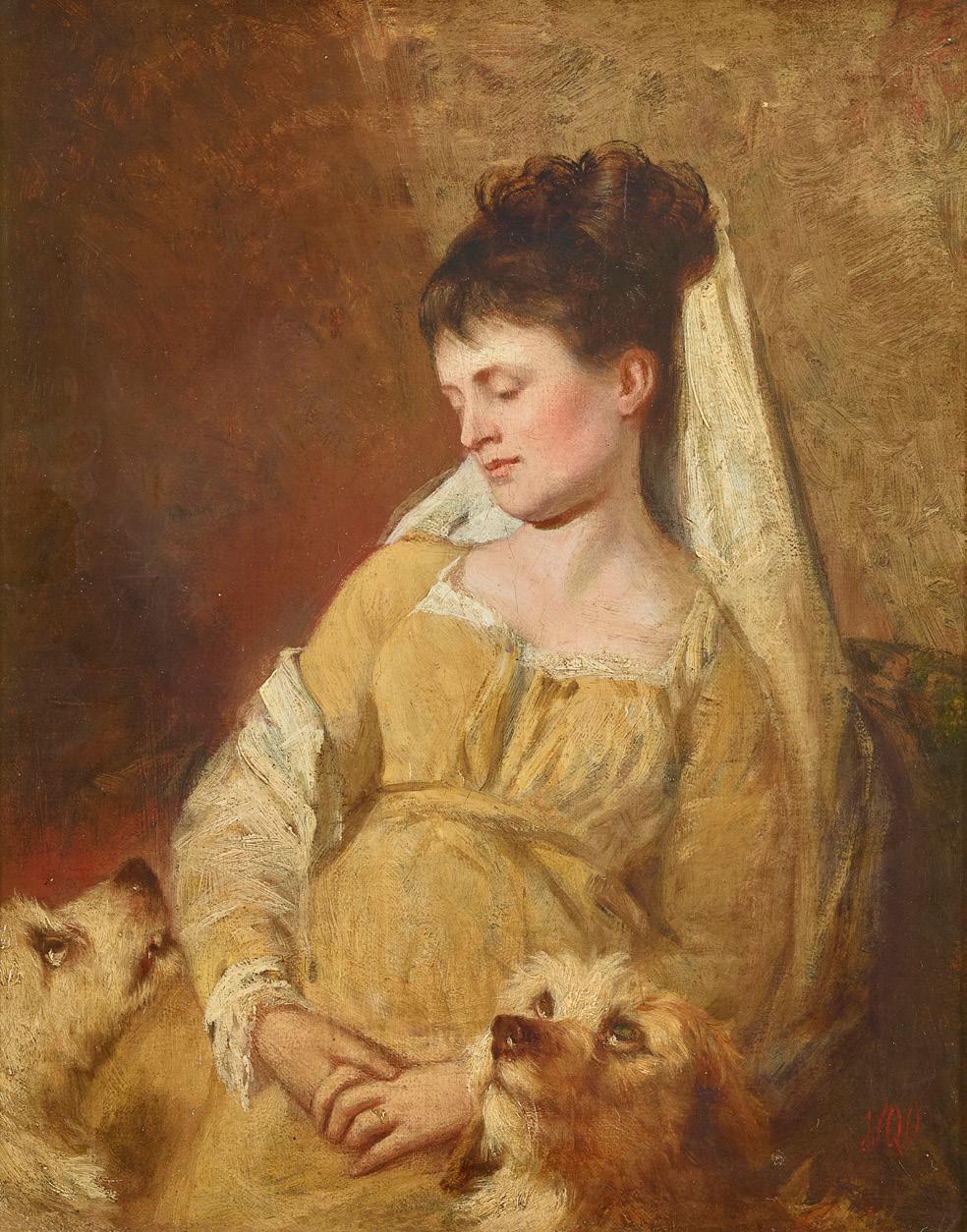
SIR WILLIAM QUILLER ORCHARDSON R.A., H.R.S.A. (SCOTTISH 1832-1910)
COMPANIONS
Signed with initials, oil on canvas 41cm x 30.5cm (16in x 12in)
Provenance: Fulton Bequest, 1933.
£2,000-3,000
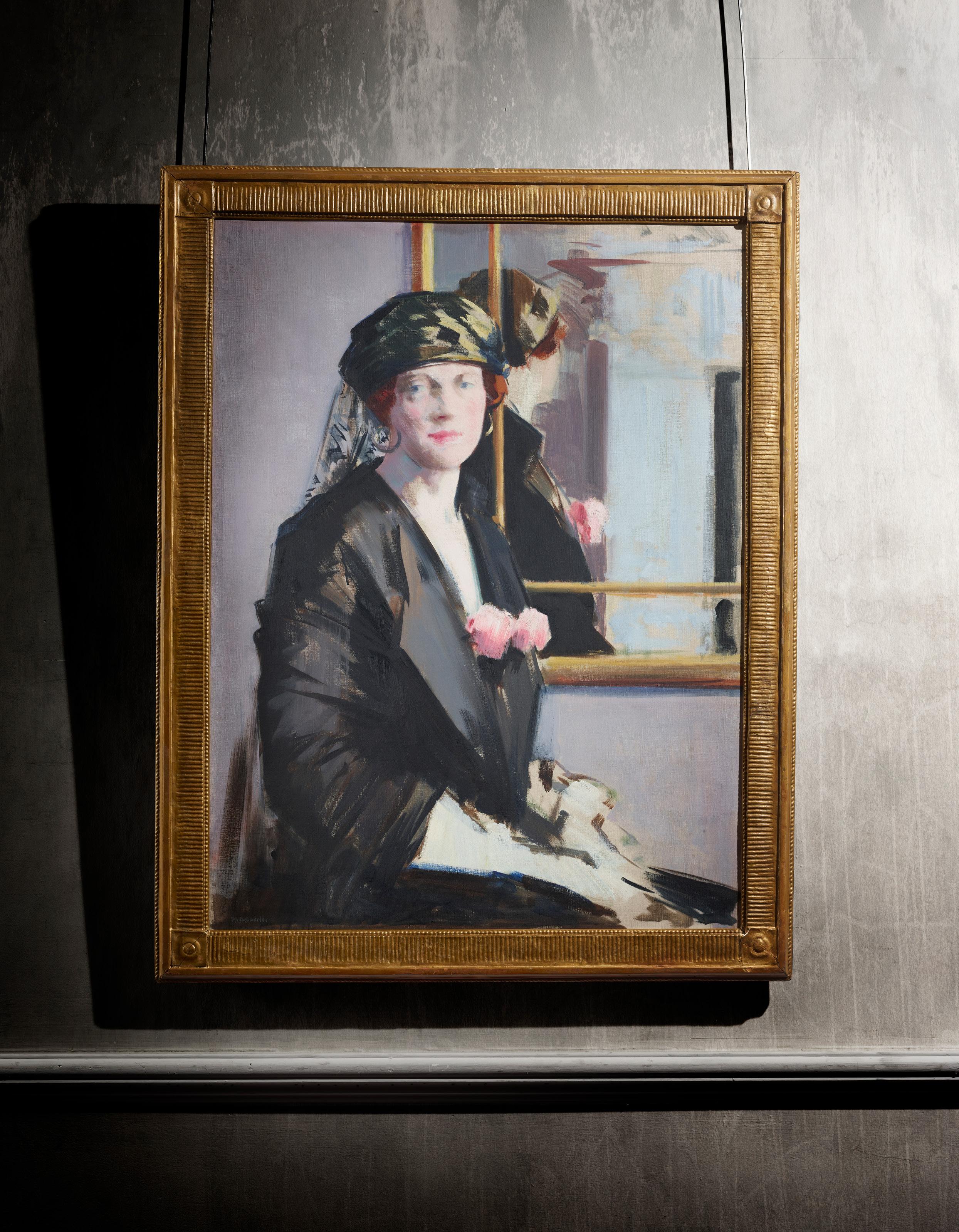
R.S.A., R.S.W (SCOTTISH 1883-1937)
Signed, oil on canvas
102cm x 76cm (40in x 30in)
Provenance: Presented by Miss M. K. Muir McKean, 1932.
£150,000-250,000
The Scottish Colourist F C B Cadell’s Pink and Gold epitomises the celebration of feminine elegance and a sophisticated lifestyle for which he is renowned. Even its title is the essence of modernity, focussing on the high notes of colour within the image, namely his sitter’s headscarf, floral accessories and the gilt of the mirror in which they are reflected.
Having trained in Paris and Munich, Cadell made his name in pre-World War One Edinburgh with paintings such as Reflections (Glasgow Life) and The Black Hat (Edinburgh Museums & Galleries). They featured fashionable ladies in the stylish interiors of the capital city’s New Town, often depicted in the artist’s own impressive studio at 130 George Street.
Pink and Gold reveals how Cadell’s work developed following his move in 1920 to an imposing residence at nearby 6 Ainslie Place. He took great pains over the decoration and furnishing of his new quarters. The distinctive lilac of the painting’s background reveals it to have been created on the first floor, where front and back drawing-rooms were linked by double doors and he brought painted black floorboards up to a high polish. Cadell revelled in the original features of the house, such
as the white marble mantelpiece glimpsed in Pink and Gold, its colour used to signify a feminine space in the vocabulary of Georgian architecture.
During a landmark trip to Venice in 1910, Cadell’s imagination was captured by experiencing the city in mirror image in its watery surroundings. This led to an interest in reflections that became a defining characteristic of his work. Set to the centre-right of the background of Pink and Gold, the mirror reveals the space in front of the sitter, almost to where Cadell must have been positioned at his easel, its cropping also hinting at the room beyond. Furthermore, the device of the mirror allows Cadell to present his model in two poses, one looking directly at the viewer, the other seen in profile gazing beyond the realm of the canvas.
The present painting also shows how Cadell’s practice progressed from the bright palette, tight technique and suppression of volume of the works made during his first years at Ainslie Place. Portrait of a Lady in Black (National Galleries of Scotland) defines this phase, which gave way to lower-toned works such as The Embroidered Cloak (Ferens Art Gallery) and then to the calmer atmosphere, more gentle palette and broader technique apparent in Pink and Gold.
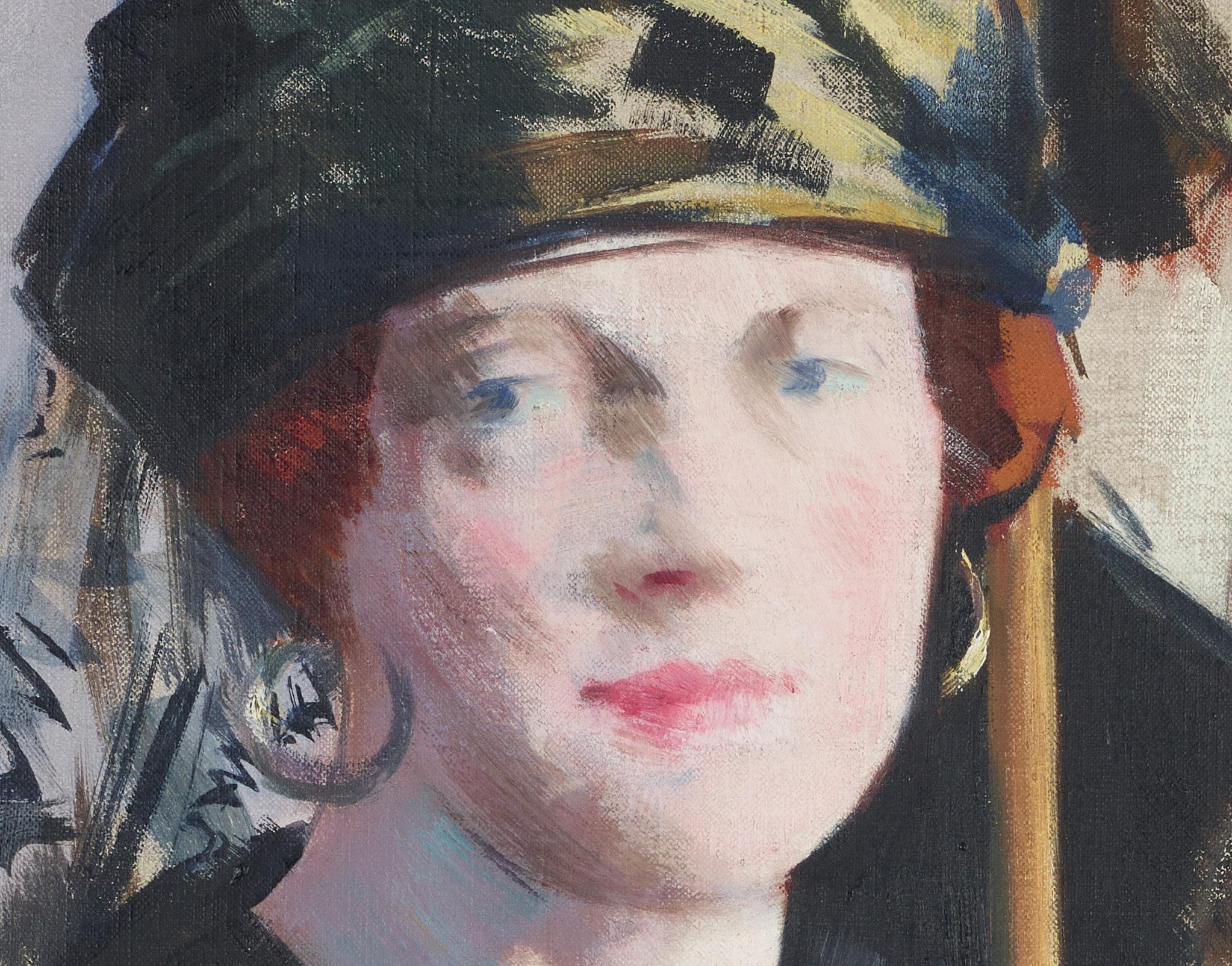
Cadell devoted decades to exploring an idealised portrayal of womanhood. Although his favoured model, Miss Bethia Hamilton Don Wauchope, sat for him for over fifteen years, his images of elegant, modish ladies – most often dressed in black, with carefully chosen luxurious accessories from broad-brimmed hats, glinting goldhoop ear-rings and long white gloves – are not about the identity of a specific sitter. In Pink and Gold, Cadell contrasts his model’s fair complexion with the darkness of her outfit. The delicate defining of her facial features matches the treatment of the diaphonous nature of her headscarf as it falls over her back. In addition, freelypainted passages, such as the realisation of her be-gloved hands, verge on the abstract.
Pink and Gold was presented to Paisley Art Institute (PAI) in 1932, by Miss Margaret Kathleen Muir MacKean (18791969) of Auchenlodment House, Elderslie and of the town’s soap then starch manufacturing family. They were
leading citizens of Paisley, not least its artistic circles, with her uncle James Anderson Dunlop MacKean (1849-1932) becoming an Honorary President of the Institute. As a major collector, J. A. D. MacKean gave several important works to the PAI’s holdings, including George Henry’s The Banks of Allan Water: Spring, Autumn and Winter series (lots 76, 77 and 78).
It is believed that Miss MacKean inherited Pink and Gold from her uncle, who died in the year of her gift. At the same time, her father William Muir MacKean gave Henry’s Beauty and the Beast to the PAI, whilst one of her other uncles, Major Norman MacKean, presented George Pirie’s The Hen Roost (lot 89); perhaps all three were given in memory of their recently deceased relative.
Our thanks are due to Colin C. MacKean, Miss MacKean’s first cousin once removed and PAI’s current Treasurer, for his help with our research.

C.B.E., R.S.A., R.S.W (SCOTTISH 1887-1976) LOBSTER FISHERMEN, ROUSAY
Signed and dated 1944, oil on canvas 101.5cm x 127cm (40in x 50in)
Provenance: W. G. Barbour Bequest, 1944.
Exhibited: Hankyu Department Store, Umeda Main Store, Osaka, Japan, The Beautiful Landscape of Scotland, 11-16 November 1983; touring to Tenmaya Department Store, Okayama Main Store, Okayama, Japan, 18-23 November 1983.
Literature: A Paisley Legacy: The Paisley Art Institute Collection, Centenaries Catalogue, Paisley, 2015, p.44.
Note: Titled ‘A Rock-Bound Coast’ in Illustrated Catalogue of Paintings, Drawings, Sculpture in the Collections of Paisley Corporation and Paisley Art Institute, 1948.
£10,000-15,000
Cursiter’s devotion to his native Orkney endured throughout his life. In his 1974 autobiography Looking Back, he recalled: ‘My practice was to work as hard as I could [during his early years in Edinburgh] over the winter months so as to make as much money as possible. Then, in the summer, I would go to Orkney, or Shetland, for two or three months, or for as long as the money lasted. There I would paint landscapes, sea-scapes, or cliff scenes.’
This work is believed to date to the year following Cursiter’s resignation from an 18 year tenure as Director of the National Galleries of Scotland. By this time the artist and his wife had acquired a cottage in Orkney where they would sojourn to paint the island’s dramatic coastal cliffs. The couple developed a friendship with local lobster fishermen Linklater and Grieg, who could be regularly sighted off the Orcadian coast.
This superb oil is likely to depict Linklater and Greig at work under the cliffs of Rousay, a small island around 3km north of the Orkney mainland. Cursiter made a near-identical watercolour painting of the same composition, which is illustrated in Pamela Beasant's biography Stanley Cursiter: A Life of the Artist (Orkney Islands Council, 2007, p.82).

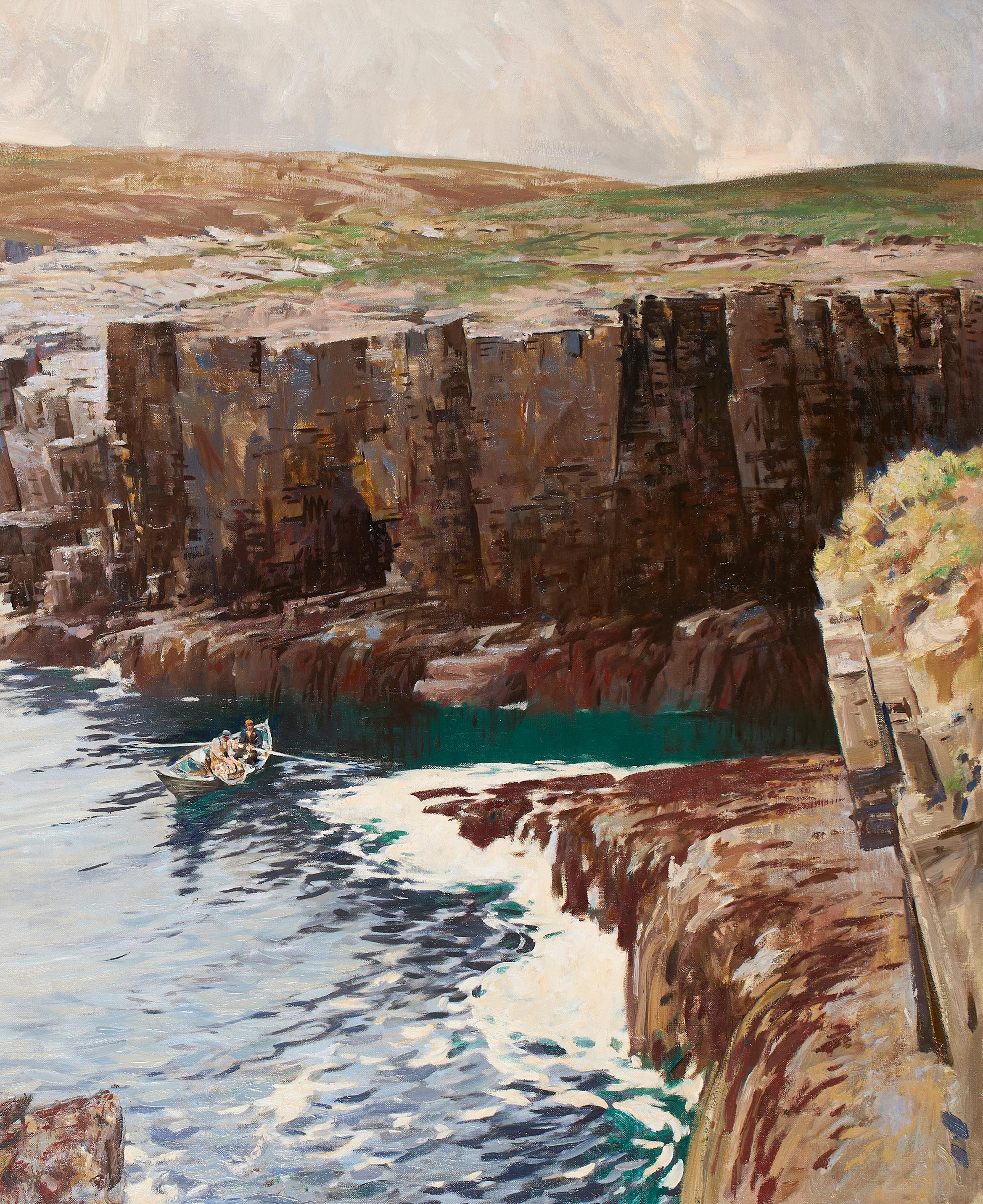

Adam, Joseph Denovan 17
Ademollo, Carlo 32
Allan, Robert Weir 74
Allan, Sir William 29
Anderson, James Bell 73
Barr, William 6
Brown, William Marshall 81
Cadell, Francis Campbell Boileau 96
Carrière, Eugène 92
Christie, James Elder 26, 28, 30, 88
Clausen, Sir George 36, 37
Coventry, Robervt McGown 10, 35
Cursiter, Stanley 97
Daubigny, Charles-François 44, 45
Dean, Stansmore Richmond Leslie 86
Dixon, Anna 58
Dobson, Cowan 94
Dolci, Carlo (Circle of) 62
Douglas, Andrew 51
Duff, John Robert Keitley 8
Duncan, John 70
Eckenfelder, Friedrich 50
Farquharson, David 7, 61
Fisher, Mark William 3
Flint, Sir William Russell 60
Foggie, David 33, 34
Fraser Jr, Alexander 53
Fripp, George Arthur 23
Fulton, Sam 39
Gauld, David 9
Guès, Alfred François 56
Guthrie, Sir James 42, 43 de Haas, Johannes Hubertus Leonardus 18
Hamilton, James Whitelaw 14
Henry, George 76, 77, 78
Hervier, Louis Adolphe 11
Hope, Robert 91
Hornel, Edward Atkinson 75
Houston, George 19
Hutchison, Robert Gemmell 15
Jacque, Charles-Émile 49
Jungman, Nico 59
Kay, James 71
Kennedy, William 27, 80, 83
L’Hermitte, Lèon Augustin 79, 84
Lambert, Louis Eugène 87
Lavery, Sir John 64, 65, 66, 67
Lavieille, Eugène 47
Law, Andrew 4
Lochhead, John 82
The following expressions with their accompanying explanations are used by Lyon & Turnbull as standard cataloguing practice. Our use of these expressions does not take account of the condition of the lot or the extent of any restoration. Buyers are recommended to to inspect the property themselves. Written condition reports are usually available on request. Dimensions are given height before width.
Names or Recognised Designation of an Artist without any Qualification
In our opinion a work by the artist
Attributed to…
In our opinion probably a work by the artist in whole or in part Studio of… / Workshop of…
In our opinion a work executed in the studio or workshop of the artist, possibly under their supervision
MacGregor, William York 5 MacWhirter, John 54, 68 Maris, Willem 85 McCulloch, Horatio 24
Archibald 55 Melville, Arthur 38 ter Meulen, François Pieter 12, 48 Mura, Frank 31 Murray, Sir David 57 Newbery,
Circle of…
In our opinion work of the period of the artist and showing their influence
Follower of…
In our opinion a work executed in the artist’s style, but not necessarily by a pupil Manner of…
In our opinion a work executed in the artist’s style but of a later date
Signed… / Dated… / Inscribed… /
In our opinion the work has been signed/dated/inscribed by the artist
Bears Signature… / Date… / Inscription… /
In our opinion the signature/ date/inscription appears to be by a hand other than that of the artist

WALTER DAVID JONES C.H., C.B.E. (BRITISH 1895-1974) ON THE TOW PATH, 1926 £10,000-15,000 (+ fees) For more information please contact: Simon Hucker | simon.hucker@lyonandturnbull.com Philip Smith | philip.smith@lyonandturnbull.com
LONDON 0207 930 9115

MODERN, POST-WAR & CONTEMPORARY ART, DESIGN, CRAFT AND STUDIO CERAMICS
AUCTION 31 OCT-01 NOV MALL GALLERIES, LONDON NOW OPEN FOR ENTRIES
WILLIAM DANIELL
R.A. (BRITISH 1769-1837)
VIEW OF THE NEW BRIDGE OVER THE RIVER TWEED AT KELSO
£15,000-20,000 (+ fees)
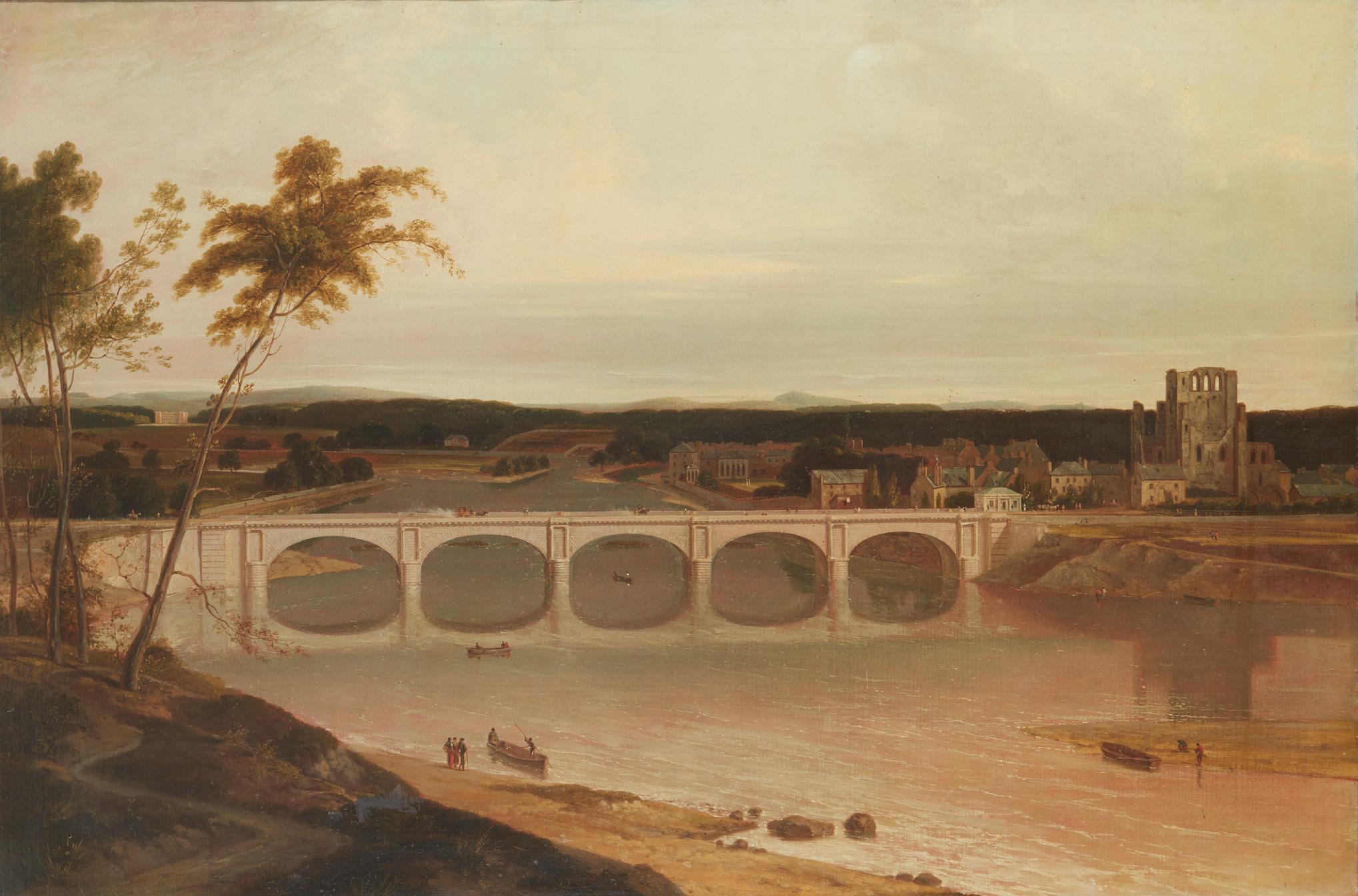

AUCTION 05 DECEMBER EDINBURGH & LIVE ONLINE NOW OPEN FOR ENTRIES


These Conditions of Sale and the Saleroom Notices as well as specific Catalogue terms, set out the terms on which we offer the Lots listed in this Catalogue for sale. By registering to bid and/or by bidding at auction You agree to these terms, we recommend that You read them carefully before doing so. You will find a list of definitions and a glossary at the end providing explanations for the meanings of the words and expressions used.
Special terms may be used in Catalogue descriptions of particular classes of items (Books, Jewellery, Paintings, Guns, Firearms, etc.) in which case the descriptions must be interpreted in accordance with any glossary appearing in the Catalogue. These notices and terms will also form part of our terms and conditions of sales.
In these Conditions the words “Us”, “Our”, “We” etc. refers to Lyon & Turnbull Ltd, the singular includes the plural and vice versa as appropriate. “You”, “Your” means the Buyer. Lyon & Turnbull Ltd. acts as agent for the Seller. Lyon & Turnbull Ltd. acts as agent for the Seller. On occasion where Lyon & Turnbull Ltd. own a lot in part or full the property will be identified in the catalogue with the symbol (��) next to its lot number.
1. DESCRIPTIONS OF LOTS
Whilst we seek to describe Lots accurately, it may be impractical for us to carry out exhaustive due diligence on each Lot. Prospective Buyers are given ample opportunities to view and inspect before any sale and they (and any independent experts on their behalf) must satisfy themselves as to the accuracy of any description applied to a Lot. Prospective Buyers also bid on the understanding that, inevitably, representations or statements by us as to authorship, genuineness, origin, date, age, provenance, condition or Estimated selling price involve matters of opinion. We undertake that any such opinion shall be honestly and reasonably held and only accept liability for opinions given negligently or fraudulently. Subject to the foregoing neither we the Auctioneer or our employees or agents accept liability for the correctness of such opinions and no warranties, whether relating to description, condition or quality of Lots, express, implied or statutory, are given. Please note that photographs/images provided may not be fully representative of the condition of the Lot and should not be relied upon as indicative of the overall condition of the Lot. All dimensions and weights are approximate only.
We do not provide any guarantee in relation to the nature of a Lot apart from our authenticity warranty contained in paragraph E.2 and to the extent provided below.
(a) Condition Reports: Condition Reports are provided on our Website or upon request. The absence of a report does not imply that a Lot is without imperfections. Large numbers of such requests are received shortly before each sale and department specialists and administration will endeavour to respond to all requests although we offer no guarantee. Any statement in relation to the Lot is merely an expression of opinion of the Seller or us and should not be relied upon as an inducement to bid on the Lot. Lots are available for inspection prior to the sale and You are strongly advised to examine any Lot in which You are interested prior to the sale. Our Condition Reports are not prepared by professional conservators, restorers or engineers. Our Condition Report does not form any contract between us and the Buyer. The Condition Reports do not affect the Buyer’s obligations in any way.
(b) Estimates: Estimates are placed on each Lot to help Buyers gauge the sums involved for the purchase of a particular Lot. Estimates do not include the Buyer’s Premium or VAT. Estimates are a matter of opinion and prepared in advance. Estimates may be subject to change and are for guidance only and should not be relied upon.
(c) Catalogue Alterations: Lot descriptions and Estimates are prepared in advance of the sale and may be subject to change. Any alterations will be announced on the Catalogue alteration sheet, made available prior to the sale. It is the responsibility of the Buyer to make themselves aware to any alterations which may have occurred.
3.
Lyon & Turnbull may, at its discretion, withdraw any Lot at any time prior to or during the sale of the Lot. Lyon & Turnbull has no liability to You for any decision to withdraw.
(a) Jewellery:
(i) Coloured gemstones (such as rubies, sapphires and emeralds) may have been treated to enhance their look, through methods such as heating and oiling. These methods are accepted practice but may make the gemstone less strong and/or require special care in future.
(ii) All types of gemstones may have been improved by some method. You may request a gemmological report for
any Lot which does not have a report if the request is made to us at least three weeks before the date of the sale and You pay the fee for the report in advance of receiving said report.
(iii) We do not obtain a gemmological report for every gemstone sold in our sales. Where we do get gemmological reports from internationally accepted gemmological laboratories, such reports may be described in the Sale Particulars. Reports will describe any improvement or treatment only if we request that they do so, but will confirm when no improvement or treatment has been made. Because of differences in approach and technology, laboratories may not agree whether a particular gemstone has been treated, the amount of treatment or whether treatment is permanent. The gemmological laboratories will only report on the improvements or treatments known to the laboratories at the date of the report.
(iv) For jewellery sales, all Estimates are based on the information in any gemmological report or, if no gemmological report is available, You should assume that the gemstones may have been treated or enhanced.
(b) Clocks & Watches: All Lots are sold “as seen”, and the absence of any reference to the condition of a clock or watch does not imply the Lot is in good condition and without defects, repairs or restorations. Most clocks and watches will have been repaired during their normal lifetime and may now incorporate additional/ newer parts. Furthermore, we make no representation or warranty that any clock or watch is in working order. As clocks and watches often contain fine and complex mechanisms, Buyers should be aware that a general service, change of battery or further repair work, for which the Buyer is solely responsible, may be necessary. Buyers should also be aware that we cannot guarantee a watch will remain waterproof if the back is removed. Buyers should be aware that the importing watches such as Rolex, Frank Muller and Corum into the United States is highly restricted. These watches cannot be shipped to the USA and only imported personally. Clocks may be sold without pendulums, weights or keys.
(c) Alcohol: may only be sold to persons aged of 18 years and over. By registering to bid, You affirm that You are at least that age. All collections must be signed for by a person over the age of 18. We Reserve the right to ask for ID from the person collecting. Buyers of alcohol must make appropriate allowances for natural variations of ullages, conditions of corks and wine. We can provide no guarantees as to how the alcohol may have been stored. There is always a risk of cork failure and allowance by the Buyer must be made. Alcohol is sold “as is” and quality of the alcohol is entirely at the risk of the Buyer and no
warranties are given.
(d) Books-Collation: If on collation any named item in the sale Catalogue proves defective, in text or illustration the Buyer may reject the Lot provided he returns it within 21 days of the sale stating the defect in writing. This, however, shall not apply in the case of unnamed items, periodicals, autographed letters, music M.M.S., maps, drawings nor in respect of damage to bindings, stains, foxing, marginal worm holes or other defects not affecting the completeness of the text nor in respect of Defects mentioned in the Catalogue, or at the time of sale, nor in respect of Lots sold for less than £300.
(e) Electrical Goods: are sold as “works of art” only and if bought for use must be checked over for compliance with safety regulations by a qualified electrician first. Use of such goods is entirely at the risk of the Buyer and no warranties as to safety of the goods are given.
(f) Upholstered items: are sold as “works of art” only and if bought for use must be checked over for compliance with safety regulations (items manufactured prior to 1950 are exempt from any regulations). Use of such goods is entirely at the risk of the Buyer and no warranties as to safety of the goods are given. We provide no guarantee as to the originality of any wood/material contained within the item.
1. NEW BIDDERS
(a) If this is Your first time bidding at Lyon & Turnbull or You are a returning Bidder who has not bought anything from us within the last two years You must register at least 48 hours before an auction to give us enough time to process and approve Your registration. We may, at our discretion, decline to permit You to register as a Bidder. You will be asked for the following:
(i) Individuals: Photo identification (driving licence, national identity card or passport) and, if not shown on the ID document, proof of Your current address (for example, a current utility bill or bank statement)
(ii) Corporate clients: Your Certificate of Incorporation or equivalent document(s) showing Your name and registered address together with documentary proof of directors and beneficial owners, and;
(iii) Trusts, partnerships, offshore companies and other business structures please contact us directly in advance to discuss requirements.
(b) We may also ask You to provide a financial reference and/or a deposit to allow You to bid. For help, please contact our Finance Department on +44(0)131 557 8844.
2. RETURNING
We may at our discretion ask You for current identification as described in paragraph B.1.(a) above, a finance
reference or a deposit as a condition of allowing You to bid. If You have not bought anything from us in the last two years, or if You want to spend more than on previous occasions, please contact our Finance Department on +44(0)131 557 8844.
3. FAILURE TO PROVIDE THE RIGHT DOCUMENTS
If in our opinion You do not satisfy our Bidder identification and registration procedures including, but not limited to, completing any anti-money laundering and/or anti-terrorism financing checks we may require to our satisfaction, we may refuse to register You to bid, and if You make a successful bid, we may cancel the contract between You and the Seller.
4. BIDDING ON BEHALF OF ANOTHER PERSON
(a) As an authorised Bidder: If You are bidding on behalf of another person, that person will need to complete the registration requirements above before You can bid, and supply a signed letter authorising You to bid for him/her.
(b) As agent for an undisclosed principal: If You are bidding as an agent for an undisclosed principle (the ultimate Buyer(s)) You accept personal liability to pay the Purchase Price and all other sums due, unless it has been agreed in writing with us before commencement of the auction that the Bidder is acting as an agent on behalf of a named third party acceptable to us and we will seek payment from the named third party.
5. BIDDING IN PERSON
If You wish to bid in the saleroom You must register for a numbered bidding paddle before You begin bidding. Please ensure You bring photo identification with You to allow us to verify Your registration.
6. BIDDING SERVICES
The bidding services described below are a free service offered as a convenience to our clients and we are not responsible for any error (human or otherwise), omission or breakdown in providing these services.
(a) Phone bids
Your request for this service must be made no later than 12 hours prior to the auction. We will accept bids by telephone for Lots only if our staff are available to take the bids. If You need to bid in a language other than English You should arrange this Well before the auction. We do not accept liability for failure to do so or for errors and omissions in connections.
(b) Internet Bids
For certain auctions we will accept bids over the internet. For more information please visit our Website. We will use reasonable efforts to carry out online bids and do not accept liability for equipment failure, inability to access the internet or software malfunctions related to execution of online bids/ live bidding.
(c) Written Bids
While prospective Buyers are strongly advised to attend the auction and are always responsible for any decision to bid for a particular Lot and shall be assumed to have carefully inspected and satisfied themselves as to its condition we shall, if so instructed, clearly and in writing execute bids on their behalf. Neither the Auctioneer nor our employees nor agents shall be responsible for any failure to do so. Where two or more commission bids at the same level are recorded we Reserve the right in our absolute discretion to prefer the first bid so made. Bids must be expressed in the currency of the saleroom. The Auctioneer will take reasonable steps to carry out written bids at the lowest possible price, taking into account the Reserve. If You make a written bid on a Lot which does not have a Reserve and there is no higher bid than Yours, we will bid on Your behalf at around 50% of the lower Estimate or, if lower, the amount of Your bid.
1. ADMISSION TO OUR AUCTIONS
We shall have the right at our discretion, to refuse admission to our premises or attendance at our auctions by any person. We may refuse admission at any time before, during or after the auction.
2. RESERVES
Unless indicated by an insert symbol (∆), all Lots in this Catalogue are offered subject to a Reserve. A Reserve is the confidential Hammer Price established between us and the Seller. The Reserve is generally set at a percentage of the low Estimate and will not exceed the low Estimate for the Lot.
3. AUCTIONEER’S DISCRETION
The maker of the highest bid accepted by the Auctioneer conducting the sale shall be the Buyer and any dispute shall be settled at the Auctioneer’s absolute discretion. The Auctioneer may move the bidding backwards of forwards in any way he or she may decide or change the order of the Lots. The Auctioneer may also; refuse any bid, withdraw any Lot, divide any Lot or combine any two or more Lots, reopen or continuing bidding even after the hammer has fallen.
4. BIDDING
The Auctioneer accepts bids from:
(a) Bidders in the saleroom;
(b) Telephone Bidders, and internet Bidders through Lyon & Turnbull Live or any other online bidding platform we have chosen to list on and;
(c) Written bids (also known as absentee bids or commission bids) left with us by a Bidder before the auction.
5. BIDDING INCREMENTS
Bidding increments shall be at the Auctioneer’s sole discretion.
The saleroom video screens and bidding platforms may show bids in some other major currencies as Well as sterling. Any conversion is for guidance only and we cannot be bound be any rate of exchange used. We are not responsible for any error (human or otherwise) omission or breakdown in providing these services.
7. SUCCESSFUL BIDS
Unless the Auctioneer decides to use their discretion as set out above, when the Auctioneer’s hammer falls, we have accepted the last bid. This means a contract for sale has been formed between the Seller and the successful Bidder. We will issue an invoice only to the registered Bidder who made the successful bid. While we send out invoices by post/or email after the auction, we do not accept responsibility for telling You whether or not Your bid was successful. If You have bid by written bid, You should contact us by telephone or in person as soon as possible after the auction to get details of the outcome of our bid to avoid having to pay unnecessary storage charges.
8.
You agree that when bidding in any of our sales that You will strictly comply with all relevant legislation including local laws and regulations in force at the time of the sale for the relevant saleroom location.
1. THE PURCHASE PRICE
For each Lot purchased a Buyer’s Premium of 26% of the Hammer Price of each Lot up to and including £20,000, plus 25% from £20,001 to £500,000, plus 20% from £500,001 thereafter. VAT at the appropriate rate is charged on the Buyer’s Premium. No VAT is payable on the Hammer Price or premium for printed books or unframed maps bought at auction. Live online bidding may be subject to an additional premium (level dependent on the live bidding service provider chosen). This additional premium is subject to VAT at the appropriate rate as above.
2. VALUE ADDED TAX
Value Added Tax is charged at the appropriate rate prevailing by law at the date of sale and is payable by Buyers of relevant Lots.
(a) Lots affixed with (†): Value Added Tax on the Hammer Price is imposed by law on all items affixed with a dagger (†). This imposition of VAT maybe because the Seller is registered for VAT within the European Union and is not operating under a Margin Scheme.
(b) Lots affixed with (*): A reduced rate of Value Added Tax on the Hammer Price of 5% is payable. This indicates that a Lot has been imported from
outwit the European Union. This reduced rate is applicable to Antique items.
(c) Lots affixed with [Ω]: Standard rate of Value Added Tax on the Hammer Price and premium is payable. This applies to items that have been imported from outwit the European Union and do not fall within the reduced rate category outlined above.
This symbol § indicates works which may be subject to the Droit de Suite or Artist’s Resale Right, which took effect in the United Kingdom on 14th February 2006. We are required to collect a royalty payment for all qualifying works of art. Under new legislation which came into effect on 1st January 2012 this applies to living artists and artists who have died in the last 70 years. This royalty will be charged to the Buyer on the Hammer Price and in addition to the Buyer’s Premium. It will not apply to works where the Hammer Price is less than £1,000. The charge for works of art sold at and above £1,000 and below £50,000 is 4%. For items selling above £50,000, charges are calculated on a sliding scale. All royalty charges are paid to the Design and Artists Copyright Society (‘DACS’) and no handling costs or additional fees are retained by the Auctioneer. Resale royalties are not subject to VAT. More information on Droit de Suite is available at www.dacs.org.uk.
E. WARRANTIES
1. SELLER’S WARRANTIES
For each Lot, the Seller gives a warranty that the Seller; (a) Is the owner of the Lot or a joint owner of the Lot acting with the permission of the other co-owners, or if the Sellers is not the owner of or a joint owner of the Lot, has the permission of the owner to sell the Lot, or the right to do so in law, and; (b) Had the right to transfer ownership of the Lot to the Buyer without any restrictions or claims by anyone else. If either other above warranties are incorrect, the Seller shall not have to pay more than the Purchase Price (as defined in the glossary) paid by You to us. The Seller will not be responsible to You for any reason for loss of profits or business, expected savings, loss of opportunity or interest, costs, damages, other damages or expense. The Seller gives no warranty in relation to any Lot other than as set out above and, as far as the Seller is allowed by law, all warranties from the Seller to You, and all obligations upon the Seller which may be added to this agreement by law, are excluded.
We guarantee that the authorship, period, or origin (collectively, “Authorship”) of each Lot in this Catalogue is as stated in the BOLD or CAPITALISED type heading in the
Catalogue description of the Lot, as amended by oral or written saleroom notes or announcements. We make no warranties whatsoever, whether express or implied, with respect to any material in the Catalogue other than that appearing in the Bold or Capitalised heading and subject to the exclusions below.
In the event we, in our reasonable opinion, deem that the conditions of the authenticity guarantee have been satisfied, it shall refund to the original purchaser of the Lot the Hammer Price and applicable Buyer’s Premium paid for the Lot by the original purchaser.
This Guarantee does not apply if:
(a) The Catalogue description was in accordance with the opinion(s) of generally accepted scholar(s) and expert(s) at the date of the sale, or the Catalogue description indicated that there was a conflict of such opinions; or
(b) the only method of establishing that the Authorship was not as described in the Bold or Capitalised heading at the date of the sale would have been by means or processes not then generally available or accepted; unreasonably expensive or impractical to use; or likely (in our reasonable opinion) to have caused damage to the Lot or likely to have caused loss of value to the Lot; or
(c) There has been no material loss in value of the Lot from its value had it been in accordance with its description in the Bold or Capitalised type heading.
This Guarantee is provided for a period of one year from the date of the relevant auction, is solely for the benefit of the original purchaser of the Lot at the auction and may not be transferred to any third party. To be able to claim under this Authenticity Guarantee, the original purchaser of the Lot must:
(a) notify us in writing within one month of receiving any information that causes the original purchaser of record to dispute the accuracy of the Bold or Capitalised type heading, specifying the Lot number, date of the auction at which it was purchased and the reasons for such dispute; and (b) return the Lot to our registered office in the same condition as at the date of sale to the original purchaser of record and be able to transfer good title to the Lot, free from any third party claims arising after the date of such sale.
We have discretion to waive any of the above requirements. We may require the original purchaser of the Lot to obtain, at the original purchaser of Lot’s cost, the reports of two independent and recognised experts in the field. The reports must be mutually acceptable to us and the original purchaser of the Lot. We shall not be bound by any reports produced by the original purchaser of the Lot, and
Reserves the right to seek additional expert advice at its own expense. It is specifically understood and agreed that the rescission of a sale and the refund of the original Purchase Price paid (the successful Hammer Price, plus the Buyer’s Premium) is exclusive and in lieu of any other remedy which might otherwise be available as a matter of law. Lyon & Turnbull and the Seller shall not be liable for any incidental or consequential damages incurred or claimed, including without limitation, loss of profits or interest.
(a) You warrant that the funds used for settlement are not connected with any criminal activities, including tax evasion and You are neither; under investigation, have been charged with or convicted of money laundering, terrorist activities or other crimes.
(b) Where You are bidding on behalf of another person You warrant that:
(i) You have conducted appropriate customer due diligence on the ultimate Buyer(s) of the Lot(s) in accordance with all relevant antimoney laundering legislation, consent to us relying on this due diligence, and You will retain for a period of not less than five years the documentation evidencing the due diligence. You will make such documentation promptly available for immediate inspection by a third party auditor upon our written request to do so;
(ii) The arrangements between You and the ultimate Buyer(s) in relation to the Lot or otherwise do not, in whole or in part, facilitate tax crimes, and;
(iii) You do not know, and have no reason to suspect that the funds used for settlement are connected with the proceeds of any criminal activity, including tax evasion, or that the ultimate Buyer(s) are under investigation or have been charged with or convicted of moneylaundering, terrorist activities, or other crimes.
(a) Within 7 days of a Lot being sold You will pay to us the Total Amount Due in cash or by such other method as is agreed by us. We accept cash, bank transfer (details on request), debit cards and Visa or MasterCard credit cards. Please note that we do not accept cash payments over £5,000 per Buyer per year.
(b) Any payments by You to us can be applied by us towards any sums owing by You to us howsoever incurred and without agreement by You or Your agent, whether express or implied.
(c) We will only accept payment from the registered Bidder. Once issued, we cannot change the Buyer’s name on an invoice or re-issue the invoice in a different name.
(d) The ownership of any Lots purchased shall not pass to You until You have made payment in full to us
of the Total Amount Due. The risk in and the responsibility for the Lot will transfer to You from whichever is the earlier of the following:
(i) When You collect the Lot; or
(ii) At the end of the 30th day following the date of the auction, or, if earlier, the date the Lot is taken into care by a third party unless we have agreed otherwise with You in writing.
(e) You shall at Your own risk and expense take away any Lots that You have purchased and paid for not later than 7 working days following the day of the auction or upon the clearance of any payment whichever is later. Please note we do not accept cheques. We can provide You with a list of shippers. However, we will not be responsible for the acts or omissions of carriers or packers whether or not recommended by us.
(f) No purchase can be claimed or removed until it has been paid for.
(g) It is the Buyer’s responsibility to ascertain collection procedures, particularly if the sale is not being held at our main sale room and the potential storage charges for Lots not collected by the appropriate time.
If any Lot is not paid for in full and taken away in accordance with these Conditions or if there is any other breach of these Conditions, we, as agent for the Sellers and on their behalf, shall at our absolute discretion and without prejudice to any other rights we may have, be entitled to exercise one or more of the following rights and remedies:
(a) To proceed against You for damages for breach of contract;
(b) To rescind the contract for sale of that Lot and/or any other Lots sold by us to You;
(c) To resell the Lot(s) (by auction or private treaty) in which case You shall be responsible for any resulting deficiency in the Total Amount Due (after crediting any part payment and adding any resale costs).
(d) To remove, store and insure the Lot in the case of storage, either at our premises or elsewhere and to recover from You all costs incurred in respect thereof;
(e) To charge interest at a rate of 5% a year above the Bank of Scotland base rate from time to time on all sums outstanding for more than 7 working days after the sale;
(f) To retain that or any other Lot sold to You until You pay the Total Amount Due;
(g) To reject or ignore bids from You or Your agent at future auctions or to impose conditions before any such bids shall be accepted;
(h) To apply any proceeds of sale of other Lots due or which become due to You towards the settlement of the Total Amount Due by You and to exercise a lien over any of Your
property in our possession for any purpose until the debt due is satisfied. You will be deemed to have granted such security to us and we may retain such property as collateral security for Your obligations to us; we may decide to sell Your property in any way we think appropriate. We will use the proceeds of the sale against any amounts You owe us and we will pay any amount left from that sale to You. If there is a shortfall, You must pay us the balance; and
(i) Take any other action we see necessary or appropriate.
(1) It is the Buyer’s responsibility to ascertain collection procedures, particularly if the sale is not being held at our main sale room and the potential storage charges for Lots not collected by the appropriate time. Information on collection is set out in the Catalogue and our Website
(2) Unless agreed otherwise, You must collect purchased Lots within seven days from the auction. Please note the Lots will only be released upon full payment being received.
(3) If You do not collect any Lot within seven days following the auction we can, at our discretion;
(i) Charge You storage costs at the rates set out on our Website.
(ii) Move the Lot to another location or an affiliate or third party and charge You transport and administration costs for doing so and You will be subject to the third party storage terms and pay for their fees and costs.
(iii) Sell the Lot in any way we think reasonable.
1. TRANSPORT AND SHIPPING
We will include transport and shipping information with each invoice sent to You as well as displayed on our Website. You must make all transport and shipping arrangements.
Buyers intending to export goods should ascertain;
(a) Whether an export licence is required; and
(b) Whether there is any specific prohibition on importing goods of that character, e.g. items that may contain prohibited materials such as ivory or rhino horn. It is the Buyer’s sole responsibility to obtain any relevant export or import licence. The denial of any licence or any delay in obtaining licences shall neither justify the recession of any sale not any delay in making full payment for the Lot.
Please be aware that all Lots marked with the symbol Y may be subject to CITES regulations when exporting these items outside the EU. These regulations may be found at http:// www.defra.gov.uk/ahvla-en/imports-
We accept no liability for any Lots which may be subject to CITES but have not be identified as such.
(a) We give no warranty in relation to any statement made, or information give, by us, our representatives or employees about any Lot other than as set out in the authenticity warranty and as far as we are allowed by law, all warranties and other terms which may be added to this agreement by law are exclude. The Seller’s warranties contained in paragraph E.1 are their own and we do not have a liability in relation to those warranties.
(b) (i) We are not responsible to You for any reason whether for breaking this agreement or any other matter relating to Your purchase of, or bid for, any Lot other than in the event of fraud or fraudulent misrepresentation by us other than as expressly set out in these conditions of sale; or
(ii) We do not give any representation, warranty or guarantee or assume any liability for a kind in respect of any Lot with regard to merchantability, fitness for a particular purpose, description, size, quality, condition, attribution, authenticity, rarity, importance, medium, provenance, exhibition history, literature or historical relevance, except as required by local law, any warranty of any kind is excluded by this paragraph.
(c) in particular, please be aware that our written and telephone bidding services, Lyon & Turnbull Live, Condition Reports, currency converter and saleroom video screens are free services and we are not responsible for any error (human or otherwise) omission or breakdown in these services.
(d) We have no responsibility to any person other than a Buyer in connection with the purchase of any Lot
(e) If in spite of the terms of this paragraph we are found to be liable to You for any reason, we shall not have to pay more than the Purchase Price paid by You to us. We will not be responsible for any reason for loss of profits, business, loss of opportunity or value, expected savings or interest, costs damages or expenses.
J. OTHER TERMS
1. OUR ABILITY TO CANCEL
In addition to the other rights of cancellation contained in this agreement, we can cancel the sale of a Lot if;
(i) Any of our warranties are not correct, as set out in paragraph E3, (ii) We reasonably believe that completing the transaction is or may be unlawful; or
(iii) We reasonably believe that the sale places us or the Seller under any liability to anyone else or may damage our reputation.
2. RECORDINGS
We may videotape and record proceedings at any auction. We will keep any personal information confidential, except to the extent disclosure is required by law if You do not wish to be videotaped, You may make arrangements to bit by telephone or a written bid or bid on Lyon & Turnbull Live instead. Unless we agree otherwise in writing, You may not videotape or record proceedings at any auction.
3. COPYRIGHT
We own the copyright in respect of all images, illustrations and written material produced by or for us relating to a Lot. (Including Catalogue entries unless otherwise noted in the Catalogue) You cannot use them without our prior written permission. We do not offer any guarantee that You will gain any copyright or other reproductions to the Lot.
4. ENFORCING THIS AGREEMENT
If a court finds that any part of this agreement is not valid or is illegal or impossible to enforce, that part of the agreement will be treated as deleted and the rest of this agreement will remain in force.
5. TRANSFERRING YOUR RIGHTS AND RESPONSIBILITIES
You may not grant a security over or transfer Your rights of responsibilities under these terms on the contract of sale with the Buyer unless we have given our written permission. This agreement will be binding on Your successors or estate and anyone who takes over Your rights and responsibilities.
6. REPORTING ON WWW.LYONANDTURNBULL.COM
Details of all Lots sold by us, including Catalogue disruptions and prices, may be reported on www.lyonandturnbull. com. Sales totals are Hammer Price plus Buyer’s Premium and do not reflect any additional fees that may have been incurred. We regret we cannot agree to requests to remove these details from our Website.
(a) The same Conditions of Sale (Buyers) shall apply to sales by private treaty.
(b) Private treaty sales made under these Conditions are deemed to be sales by auction and subject to our agreed charges for Sellers and Buyers.
(c) We undertake to inform the Seller of any offers it receives in relation to an item prior to any Proposed Sale, excluding the normal method of commission bids.
(d) For the purposes of a private treaty sale, if a Lot is sold in any other currency than Sterling, the exchange rate is to be taken on the date of sale.
All members of the public on our premises are there at their own risk and must note the lay-out of the premises, safety and security
arrangements. Accordingly, neither the Auctioneer nor our employees or agents shall incur liability for death or personal injury or similarly for the safety of the property of persons visiting prior to, during or after a sale.
Where we obtain any personal information about You, we shall use it in accordance with the terms of our Privacy Policy (subject to any additional specific consent(s) You may have given at the time Your information was disclosed). A copy of our Privacy Policy can be found on our Website www.lyonandturnbull.com or requested from Client Services, 33 Broughton Place, Edinburgh, EH1 3RR or by email from data enquiries@ lyonandturnbull.com.
We shall be under no liability if they shall be unable to carry out any provision of the Contract of Sale for any reason beyond their control including (without limiting the foregoing) an act of God, legislation, war, fire, flood, drought, failure of power supply, lock-out, strike or other action taken by employees in contemplation or furtherance of a dispute or owing to any inability to procure materials required for the performance of the contract.
(a) Governing Law: These Conditions of Sale and all aspects of all matters, transactions or disputes to which they relate or apply shall be governed by, and interpreted in accordance with, Scots law
(b) Jurisdiction: The Buyer agrees that the Courts of Scotland are to have exclusive jurisdiction to settle all disputes arising in connection with all aspects of all matters or transactions to which these Conditions of Sale relate or apply.
The following words and phrases used have (unless the context otherwise requires) the meaning to given to them below. The go Glossary is to assist You to understand words and phrases which have a specific legal meaning which You may not be familiar with.
“Auctioneer” Lyon & Turnbull Ltd (Registered in Scotland No: 191166 | Registered address: 33 Broughton Place, Edinburgh, EH1 3RR) or it’s authorised representative conducting the sale, as appropriate;
“Bidder” a person who has completed a Bidding Form
“Bidding Form” our Bidding Registration Form our Absentee Bidding Form or our Telephone Bidding Form.
“Buyer” the person to whom a Lot is knocked down by the Auctioneer. The Buyer is also referred to by the words
“You” and “Your”
“Buyer’s Premium” the sum calculated on the Hammer Price at the rates
stated in Catalogue.
“Catalogue” the Catalogue relating to the relevant Sale, including any representation on our Website
“Condition Report” the report on the physical condition of a Lot provided to a Bidder or potential Bidder by us on behalf of the Seller.
“Estimate” a statement of our opinion of the range within the hammer is likely to fall.
“Hammer Price” the level of bidding reached (at or above any Reserve) when the Auctioneer brings down the hammer;
“High Cumulative Value of Lot” several Lots with a total lower Estimate value of £30,000 or above;
“High Value Lot” a Lot with a lower Estimate of £30,000 or above;
“Lot” each Item offered for sale by Lyon & Turnbull;
“Purchase Price” is the aggregate of Hammer Price and any applicable Buyer’s Premium, VAT on the Hammer Price (where applicable), VAT on the Buyer’s Premium and any other applicable expenses;
“Reserve” the lowest price below which an item cannot be sold whether at auction or by private treaty;
“Sale” the auction sale at which a Lot is to be offered for sale by us.
“Seller” the person who offers the Lot for Sale. We act as agent for the Seller.
“Total Amount Due” the Hammer Price in respect of the Lot sold together with any premium, Value Added Tax or other taxes chargeable and any additional charges payable by a defaulting Buyer under these Conditions;
“VAT” value added tax at the prevailing rate at the date of the sale in the United Kingdom.
“Website” Lyon & Turnbull’s Website at www.lyonandturnbull.com
2.
The following have specific legal meaning which You may not be familiar with. The following glossary is intended to give You an understanding of those expressions but is not intended to restrict their legal meanings:
“Artist’s Resale Right” the right of the creator of a work of art to receive a payment on Sales of that work subsequent to
“Knocked Down” when a Lot is sold to a Bidder, indicated by the fall of the hammer at the Sale.
“Lien” a right for the person who has possession of the Lot to retain possession of it.
“Risk” the possibility that a Lot may be lost, damaged, destroyed, stolen, or deteriorate in condition or value.
“Title” the legal and equitable right to the ownership of a Lot.


All potential buyers must register prior to placing a bid. Registration information may be submitted in person at our registration desk, by email, or on our website. Please note that first-time bidders, and those returning after an extended period, will be asked to supply the following documents in order to facilitate registration:
1 – Government issued photo ID (Passport/Driving licence)
2 – Proof of address (utility bill/bank statement).
We may, at our option, also ask you to provide a bank reference and/or deposit.
By registering for the sale, the buyer acknowledges that he or she has read, understood and accepted our Conditions of Sale.
At the Sale Registered bidders will be assigned a bidder number and given a paddle for use at the sale. Once the first bid has been placed, the auctioneer asks for higher bids in increments determined by the auctioneer. To place your bid, simply raise your paddle until the auctioneer acknowledges you. Please ensure that the auctioneer repeats your bidder number correctly when confirming the sale. If there is any doubt at this stage as to the hammer price or buyer it must be brought to the auctioneer’s attention immediately. All lots will be invoiced to the name and address given on your registration form, which is non-transferable.
A limited number of telephone lines are available for bidding by phone through a Lyon & Turnbull representative. Phone lines must be reserved in advance. All bid requests must be received an hour before the sale. All telephone bids must be confirmed in writing, listing the relevant lots and appropriate number to be called. We recommend that a covering bid is also left in the event that we are unable to make the call. We cannot guarantee that lines will be available, or that we will be able to call you on the day, but will endeavour to undertake such bids to the best of our abilities. This service is available entirely at our discretion and at the bidder’s risk.
Bid forms are available at the sale and/ or the back of the catalogue. These should be submitted in person, by post, or by fax as soon as possible prior to the sale and we will bid on your behalf up to the limit indicated. In the event of receiving two identical bids the first one received will take precedence All bids must be received an hour before the sale. This service is provided entirely at the bidder’s risk.
- ABSENTEE BIDDING
Leave a bid online through our website, call us on 0131 557 8844 or email info@lyonandturnbull.com
- BID LIVE ONLINE
Bid live online, for free, with Lyon & Turnbull Live. Just click the button from the auction calendar, sale page or any lot page online to register.
Our accounts teams will continue to be available to process payments and answer queries. We will be able to accept online payments through our website and bank transfer. On-site payment facilities are available by appointment.
Payment is due within seven (7) days of the sale. Lots purchased will not be released until full payment has been received. Payment may be made by the following methods:
Account details are included on any invoices we issue or upon request from our accounts department.
We no longer accept card payments by phone. Please use our online payment service (provided by Opayo).
You will find a link to this service in any email invoice issued or you can visit the payments section of our website.
No cash payments will be accepted for this auction.
Please refer to page 2 of this catalogue.

Preceding: Lot 52 [detail] Right:: Lot 19 [detail]
